
WELCOME TO THE NISSAN HEISMAN HOUSE

How many Heisman Trophies can you spot? Scan the code to enter the house with the most thrills or go to NissanUSA.com/ Heisman for more Heisman action.
 PREMIER PARTNER
PREMIER PARTNER



How many Heisman Trophies can you spot? Scan the code to enter the house with the most thrills or go to NissanUSA.com/ Heisman for more Heisman action.
 PREMIER PARTNER
PREMIER PARTNER



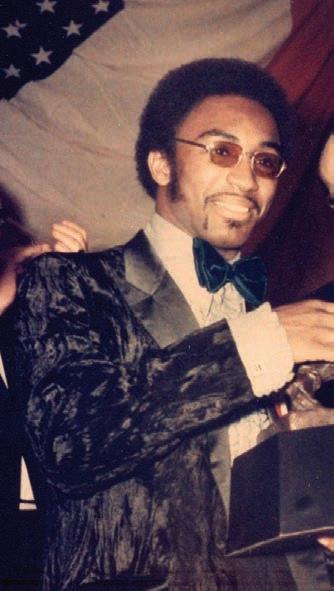
The Heisman Journal is published annually. Printed by GHP Media Design and production by Natalie Wedeking and Tim Laun All art prepared by Tim Henning, Natalie Wedeking and Tim Laun Subscription price $50.00 per year

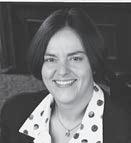

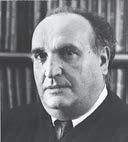
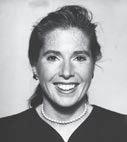
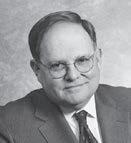


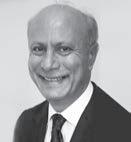

The Heisman Trophy Trust’s mission is to grow the legacy and preserve the integrity of the Heisman Memorial Trophy, which is annually awarded to the outstanding college football player in the United States whose performance epitomizes great ability combined with diligence, perseverance, and hard work.



Beyond awarding the trophy, the Trust has a charitable mission to support and fund both youth development programs in underserved communities and the Heisman high school scholarship program which recognizes community-minded scholar athletes. Additionally, the Trust annually presents the Heisman Humanitarian Award to outstanding individuals in the sports world who further the Heisman vision. Our goal is to harness the power of the Heisman Trophy’s legacy of athletic excellence to positively impact our nation’s youth and provide more equitable opportunities for underserved communities.
 HEISMAN TRUST STAFF
Tim Henning Associate Director
Rob Whalen Executive Director
Marva A. Smalls
Brian D. Obergfell
Vasili Krishnamurti
HEISMAN TROPHY TRUST - BOARD OF TRUSTEES
James E. Corcoran
Michael J. Comerford President
William J. Dockery
N. Richard Kalikow
Honorable John E. Sprizzo 1934-2008
Anne F. Donahue
Daniel W. Reed
Carol A. Pisano
Sanford Wurmfeld
HEISMAN TRUST STAFF
Tim Henning Associate Director
Rob Whalen Executive Director
Marva A. Smalls
Brian D. Obergfell
Vasili Krishnamurti
HEISMAN TROPHY TRUST - BOARD OF TRUSTEES
James E. Corcoran
Michael J. Comerford President
William J. Dockery
N. Richard Kalikow
Honorable John E. Sprizzo 1934-2008
Anne F. Donahue
Daniel W. Reed
Carol A. Pisano
Sanford Wurmfeld



Welcome to the 88th Annual Heisman Memorial Trophy Dinner Gala.
Thank you for joining us as we celebrate this year’s Heisman Trophy winner and recognize the fraternity of Heisman winners, some of whom are here celebrating 10, 25 and 50 year anniversaries. The Gala is also an opportunity to applaud our 2022 Heisman Humanitarian winner, Coach Mike Krzyzewski.
2022 was a busy year for the Heisman Trophy Trust. In January we proudly announced the election of two distinguished African Americans to our board, Dan Reed and Marva Smalls, both of whom bring decades of outstanding leadership and expertise in sports, media, diversity, equity and inclusion. Dan and Marva have proven to be excellent additions to our board of Heisman Trustees which also include: William Dockery, James Corcoran, Anne Donahue, N. Richard Kalikow, Vasili Krishnamurti, Brian Obergfell, Carol Pisano, and Sanford Wurmfeld.
Our dedicated trustees, along with our Executive Director, Rob Whalen, and our Associate Director, Tim Henning, work tirelessly throughout the year to further the Trust’s mission.
Our work is focused on harnessing the power of the Heisman Trophy and the legacy of athletic excellence it represents to uplift and inspire young people. We do that by funding youth development programs in underserved communities that teach teamwork, sportsmanship, and excellence in academics. We also recognize community-minded scholarathletes with the Heisman high school scholarship program which provides funding for college. Finally, we recognize outstanding individuals in the sports world who further our vision with the Heisman Humanitarian Award.
We are pleased that once again this year, the Heisman Trust was able to donate more than $2.5 million dollars to youth development programs in furtherance of our mission. To date, the Trust has donated more than $22 million to hundreds of youth development programs around the country.
In the coming months, we will be launching a marketing campaign, Beyond the Trophy, to highlight the positive impact the Heisman Trust has on young people in underserved communities. You may have noticed our first televised commercial for this campaign during last night’s Heisman Trophy ceremony.

The charitable work we do would not be possible without the generous support of our partners: Nissan, ESPN, Campus, Jostens, and Deloitte. We thank them for their continued partnerships.
On behalf of the Heisman Trophy Trust, I extend our very best wishes for a happy holiday season and good health in the New Year. Enjoy tonight’s dinner program.
Sincerely,
Michael J. Comerford President, Heisman Trophy Trust
Man, woman and child, did that put ‘em in the aisles! Johnny “The Jet” Rodgers just tore ’em loose from their shoes!
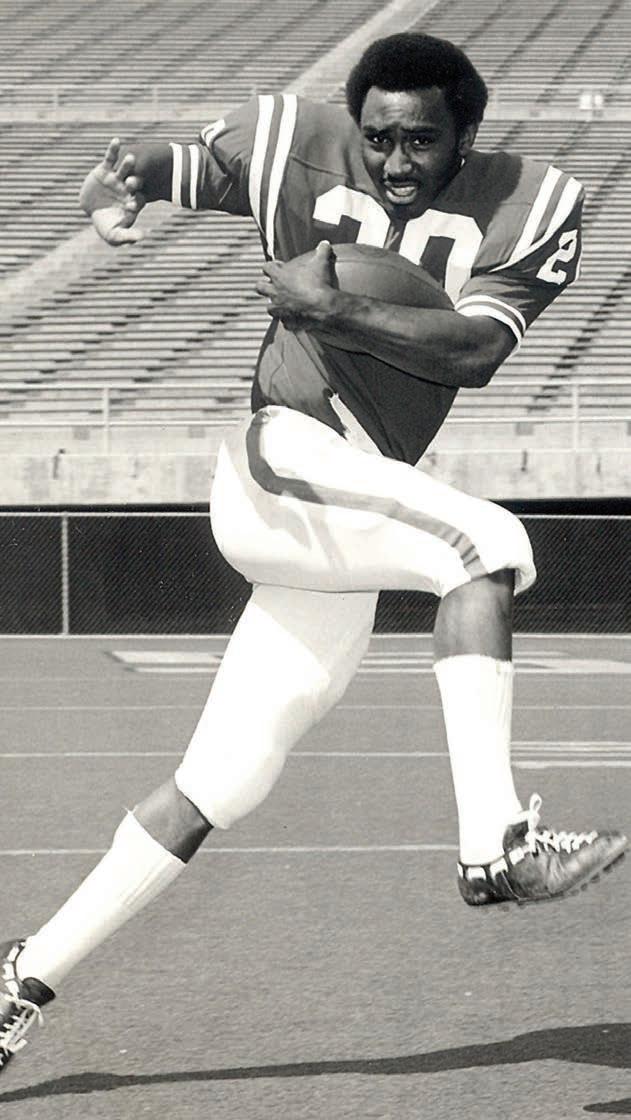
 LYELL BREMSER ANNOUNCER, KFAB RADIO
LYELL BREMSER ANNOUNCER, KFAB RADIO
Celebrating the 50th anniversary of the Heisman Trophy’s 38th winner, Johnny Rodgers, is not exactly a walk down memory lane. It’s more of a full-on sprint. How else to keep up with “The Jet.” Rodgers was born in Omaha, became larger than life in Lincoln and remains one of Nebraska’s most popular athletes to this day. He became the first wide receiver to win the Heisman Trophy in 1972 and his name still appears in so many spots in the Nebraska football record book after five decades that you’d think someone hit the copy-paste button a few too many times.
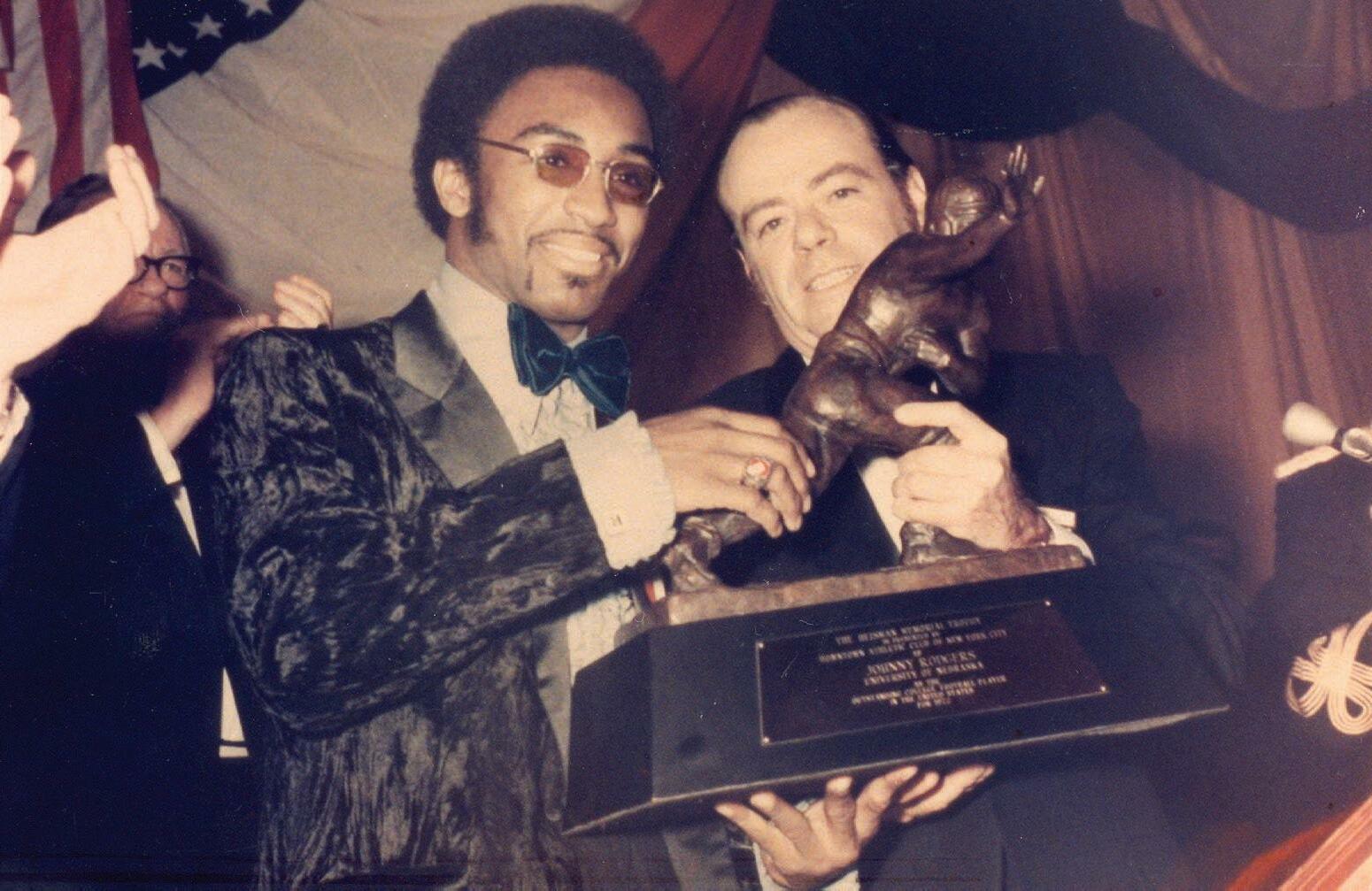
Rodgers, all 5-foot-10, 180 pounds of him, was also a savant as a kick returner who grew a national following with his uncanny ability to maneuver through defenses en route to the end zone. Is it too late to update “The Jet” to “Top Gun”? Growing up in a poor part of Omaha, Rodgers found success in athletics at a young age and became a star athlete at Omaha Tech High. He earned all-state honors in football and played on both sides of the ball. He also won a state title in the long jump and starred on the school basketball team, averaging over 20 points a game.
After graduating high school in 1969, Rodgers signed with Nebraska and redshirted as a freshman. He made an immediate impact for the Cornhuskers as a sophomore in 1970, catching 39 passes for 710 yards and seven TDs, helping Nebraska win its first national title. Rodgers’ role increased as a 1971 junior and he caught 57 passes for 956 yards and was a key part of the Huskers’ second straight championship.
It was in the second-to-last contest of that 1971 season— a Thanksgiving weekend match-up between No. 1 Nebraska and No. 2 Oklahoma in a game billed as the “Game of the Century”—that Rodgers exploded into a national star. In
by Paul Goldbergwhat was the signature play of his career, and maybe the most famous moment in Cornhusker history, Rodgers opened the scoring with a daring, darting and weaving 72-yard punt return for a touchdown in what would ultimately be a thrilling Nebraska 35-31 win. Late in the game with Nebraska trailing 31-28, Rodgers also caught a key 33-yard pass to the Sooner 15 that set up the winning score. But it was that punt return that electrified the imagination of the country. The radio call from play-by-play announcer Lyell Bremser captured the magic that day as he belted out: “Holy moly! Man, woman and child, did that put ‘em in the aisles! Johnny “The Jet” Rodgers just tore ’em loose from their shoes!” Indeed. Following a win at Hawaii, Nebraska took on Alabama in the 1972 Orange Bowl. Rodgers returned another early punt for a touchdown, this one 77 yards, as the Cornhuskers romped to a 38-6 victory and their second title.
As the 1972 season started, Rodgers was among the stars of the sport and the marquee player on the No. 1 team. The bubble burst in the 1972 season opener as Nebraska’s 32-game unbeaten streak (31 wins and one tie) and 23-game winning streak was halted in a 20-17 upset road loss to UCLA (quarterbacked by Mark Harmon, the son of Heisman winner Tom Harmon). Rodgers managed 184 all-purpose yards and one scoring run in his senior debut. Nebraska dropped to No. 10 in the polls but rebounded with seven straight blowout wins, starting with a 37-7 home-opening victory over Texas A&M in which Rodgers had 185 all-purpose yards, including 94 on four punt returns.
Rodgers had a regular-season high three touchdowns in a 77-7 win at Army, snaring two TD receptions among his five catches while also scoring on a run. Including the Army game,


he would go on to score at least two touchdowns in seven of the next eight games. He recorded his first 100-yard receiving game of the season with seven catches for 127 yards in a 49-0 win over Minnesota (the first of four straight shutouts that tied a 1937 NCAA record). The game also included his first punt return for a score that year and another rushing touchdown, generating a season-high 290 all-purpose yards. In fact, huge shutout wins became the norm for a month. In blowouts over Minnesota, Missouri, Kansas and Oklahoma State, the Cornhuskers won by a combined 201-0.
In the trio of wins against the Tigers, Jayhawks and Cowboys, Rodgers totaled another 17 receptions for 341 yards in the three-game stretch, averaging 20.1 yards per catch and scoring a combined five more touchdowns (three on receptions, two rushing). The shutout streak ended with a 33-10 win at No. 14 Colorado as Rodgers caught four more passes for 79 yards and returned five punts for a season-best 144 return yards, totaling 266 all-purpose yards overall.
Nebraska was rising in the polls and had sat at No. 3 for three straight weeks. But any hope of a third straight national title was dashed in a sloppy 23-23 tie with Iowa State. Rodgers caught a season-high eight balls for 90 yards and two scores but it wasn’t enough to overcome eight turnovers. The Cornhuskers demolished Kansas State, 59-7, in the penultimate regular season game as Rodgers scored his final two touchdowns of the regular season. Nebraska, now fifth, returned to Lincoln to host No. 4 Oklahoma on Thanksgiving in Bob Devaney’s final home game as head coach, but the Cornhuskers couldn’t replicate 1971’s magic, falling 17-14.
Rodgers’ regular-season body of work as a senior included 1,978 all-purpose yards. That featured 54 catches for
919 yards, 58 carries for 268 rushing yards, 607 punt return yards and 184 kickoff return yards while scoring 17 combined touchdowns. All of that helped Nebraska nail down another trip to the Orange Bowl.
The 1972 Heisman vote wasn’t especially close nor was it a runaway, but it was decisive as Rodgers became Nebraska’s first Heisman Trophy winner with 1310 points, including 301 first-place votes. He beat out rival and friend Greg Pruitt of Oklahoma (966 points) and defensive tackle teammate Rich Glover (652). Rodgers, who earned his second straight AllAmerican first team honor, also won the 1972 Walter Camp Award. If there were any who questioned Rodgers’ bona fides, he quieted the skeptics with perhaps the best all-around performance of his career in the 1973 Orange Bowl, leading Nebraska to a 40-6 win. Devaney, in his final game as the Cornhuskers head coach, shifted Rodgers to I-back from his typical wingback spot. Good call. Rodgers responded with season highs in carries (15), rushing yards (81) and rushing touchdowns (three) while also catching one pass for a score (among 71 yards receiving) while throwing a 52-yard TD pass for good measure. Rodgers remains among only a handful of NCAA players ever to run, throw and catch a TD pass in one game.

He finished his Nebraska career with 5,586 total yards, still second all-time at the school, and 45 touchdowns in three glorious seasons. His eight career touchdowns scored on kick returns remains tied as an NCAA record. Rodgers still owns Nebraska records for career receiving touchdowns (25) and career 100-yard receiving games (10) and shares marks for most receptions in a game (three). He also owns NU career marks for punt returns (98), punt return yards (1,515) and punt return scores (seven).
His career-best 11 TD receptions in 1971 are still second-most in school history while his 942 receiving yards and 2,011 all-purposes yards in 1972 are both third most. He caught at least one pass in all 37 games in which he played, one short of the school mark, and he is one of only two Cornhuskers to return a punt and a kickoff for a score in the same season.
Rodgers was a first-round draft pick by the San Diego Chargers in 1973, but he pivoted as deftly as he used to on the field, opting to start his career in the Canadian Football League, where he became a star with the Montreal Alouettes. Nicknamed the “ordinary superstar”, a moniker Rodgers coined that became popular with the team’s following, he was a fanfavorite for his breathtaking style of play and earned the Most Outstanding Rookie Award in 1973. Rodgers led the Alouettes to the Grey Cup title in 1974 and was among the league’s best players from 1973–76. In 1977, Rodgers decided to give the NFL a try and signed with the Chargers. Fate had other ideas and a hamstring injury cost him much of 1977 and a devastating injury to his kneecap later ended his playing career in 1978, after only 17 NFL games.
In 1999, Rodgers was selected by Sports Illustrated as the Cornhuskers Player of the Century and received a similar nod by the Walter Camp Foundation. In 2000, he was inducted into the College Football Hall of Fame. He has remained active in private business and community service throughout his post-playing days and also established The Jet Award in 2011 to honor the top return specialist in college football. Rodgers still resides in Omaha as one of the state’s most popular sports figures. He thrilled college football fans throughout the country five decades ago, and remains one of the Heisman Trophy’s most unique and exciting players.
He started the season strong, but finished it even stronger. I can’t imagine anybody doing more or meaning more to his team, and doing it consistently at the biggest moments the way Charles did.
LLOYD CARR HEAD COACH, MICHIGAN

Charles Woodson was an Ohio kid who went to Michigan, a star prep tailback who wanted to play defensive back in college. He was a modern-day collegiate throwback, excelling at cornerback before his talent demanded he add receiver and kick return specialist to his resume. In December of 1997, he flipped the script again by winning the Heisman Trophy in a hotly contested race, to become the first primarily defensive player to win the award and the first who saw significant time on both sides of the ball in some 60 years.
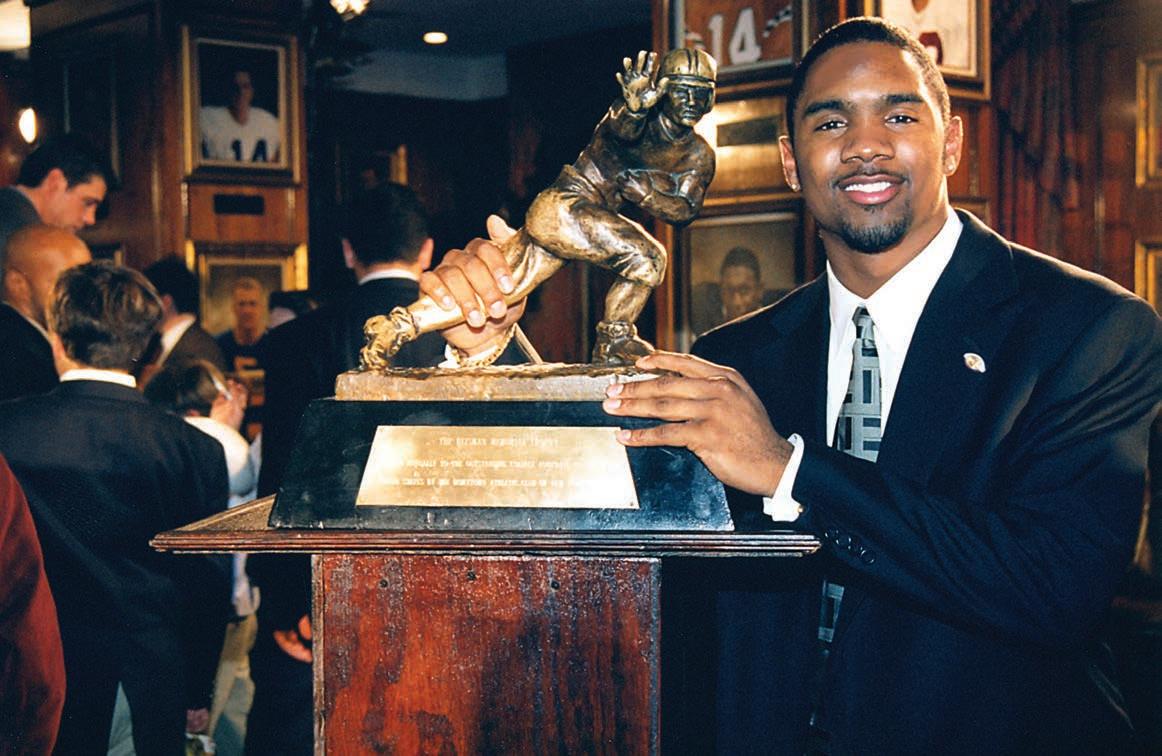
Was Woodson fundamentally a dominant cornerback? Was he also a threat at wide receiver that forced defensive coordinators to game-plan for him? Did he blossom as a punt returner? Yes to all of the above. His high level of skill and versatility combined with a penchant for the spectacular launched Woodson from an All-American shutdown corner to Heisman contender and then to historic winner.
It all started across the state border in Fremont, Ohio, where Woodson grew up. He became star at Ross High, earning Ohio’s Mr. Football Award as a 1994 senior after rushing for 2,028 yards on 218 carries—while also playing DB. A 1994 USA Today and Parade All-American, Woodson was heavily recruited as a running back thanks to his nearly 4,000 career rushing yards. But Michigan and head coach Lloyd Carr saw something else in Woodson and recruited him for the defensive backfield. That was all he needed to hear, and Woodson signed with the Wolverines in 1995.
By the second game of his 1995 freshman season, Woodson had earned a starting job at corner. By season’s end, he had five interceptions and was named the Big Ten Freshman of the Year and first-team all conference. At the insistence of Carr, Woodson started digesting the offensive side of the
by Paul Goldbergplaybook as a 1996 sophomore. He played about 10 snaps per game at receiver, ultimately catching 13 passes for 164 yards while rushing for another 152 yards on six carries. Meanwhile, he was still thriving at cornerback, breaking the Wolverine record for pass breakups with 15, while again leading the team with five interceptions. For that he earned AP first team All-American honors and was selected as a finalist for the Jim Thorpe Award.
A household name by the start of his junior year, Woodson and the No. 14 Wolverines opened with a late Sept. 13 home date against No. 8 Colorado. The last time the teams met in Ann Arbor, the Buffaloes and 1994 Heisman winner Rashaan Salaam pulled off the “Miracle at Michigan,” winning on a Hail Mary in the game’s final play. There were no such dramatics this time as Michigan won 27-3. Woodson opened his season with five tackles, an interception on the second drive of the game, and a key second-quarter catch for 29 yards that led to Michigan going up 10-0 before the half.
Woodson scored his first touchdown of the season in a Week 2 blowout of Baylor, snagging an inside screen pass from Brian Griese and weaving 10 yards into the end zone for Michigan’s first points of the game. He later grabbed another pass for 35 yards (he also had a 34-yard TD reception called back on a false start). On the other side of the ball, Woodson did not allow a reception and three of his five tackles were for loss.
Now ranked sixth, Michigan stayed local and hosted Notre Dame, eking out a 21-14 win. Woodson’s numbers were modest with four tackles, but he did have a key 20-yard punt return that set up the Wolverine’s go-ahead third-quarter TD drive. Michigan opened Big Ten play at Indiana and its nation-leading defense shut out the Hoosiers in a 37-0 win.


Woodson made his second interception of the season to go with three tackles and caught a 21-yard pass.
Still No. 6, Michigan returned to the Big House to host Northwestern, ending a brief two-game losing streak to the Wildcats with a 23-6 win. Woodson secured his third interception of the season in the fourth quarter that led to a Wolverine field goal and the game’s final scoring. He had an 11-yard sack among five tackles and also a 30-yard reception that led to Michigan’s first TD of the game. Woodson next posted season highs in tackles (six) and punt returns and yardage (six for 70) in Michigan’s come-from-behind 28-24 win over No. 15 Iowa. The following week, Woodson’s legend would take off. After five of six games at home, No. 5 Michigan traveled across the state to East Lansing to take on No. 15 Michigan State and dominated the Spartans in a 23-7 win. The Wolverines made many big plays that day, but it was Woodson’s unforgettable third-quarter interception that was replayed on highlight reels throughout that Saturday. With Michigan leading 13-7, Spartan QB Todd Schultz was flushed out of the pocket on third down deep in his own territory and tried to throw the ball away. But Woodson had other ideas. Leaping high and twisting his body along the sideline, he snared the ball with his right hand, touched inbounds with his left foot and secured the ball with his left arm as he tumbled out of bounds. Michigan failed to score off the ensuing possession, and it was one of two interceptions Woodson would make that day, but the sheer athleticism and dazzling nature of the play thrust Woodson into the forefront of the Heisman contender conversation.
No. 4 Michigan kept the pedal down the following Saturday, improving to 8-0 with a 24-3 win over Minnesota. Woodson, now fully on the national Heisman radar, kept his momentum going as well, scoring the Wolverines’ first touchdown of the game on a 33-yard run off of a reverse. Week 9 saw No. 4 Michigan play in front of a record crowd at No. 2 Penn State against a Nittany Lion team with a 12-game win streak in a huge match-up— and one the Wolverines dominated, 34-8. Woodson scored on a 37-yard TD pass from Griese in the second quarter, lining up in the slot and catching a seam pass, going untouched into the end zone. He also had two tackles and two pass breakups and helped limit PSU star receiver Joe Jurevicius to just 20 yards receiving.
Now ranked No. 1 and a week away from facing highly ranked rival Ohio State, Michigan took care of business in a snowy battle at No. 23 Wisconsin, winning 26-16. Woodson’s fingerprints were all over this win as well. He completed his only pass of the season on Michigan’s opening TD drive, taking a lateral pass from Griese and sending it right back to his QB for a 28-yard gain to the 1-yard line. He later secured his sixth interception of the season to thwart the Badgers’ late second-quarter drive.
Woodson completed his 1997 Heisman resume on just about the biggest stage imaginable, leading No. 1 Michigan to a 20-14 win over rival No. 4 Ohio State in front of a record crowd at the Big House as the Wolverines completed their first perfect regular season in 26 years. Woodson’s 37-yard second-quarter reception on third-and-12 to the 16-yard line set up Michigan’s first score and, after Ohio State went three-and-out, Woodson scored his fourth TD of the season on a 78-yard punt return. Receiving the ball at the 22, he dodged Ohio State’s first wave of coverage, broke to the left sideline and raced to the goal line, finally tackled by his own teammates in celebration. Woodson sent the crowd into a frenzy again on the opening drive of the second half, intercepting a second-and-goal pass in the end zone (his seventh of the season). Ohio State eventually closed to within 20-14 in the fourth quarter, but that was as close as Woodson and Michigan would let the Buckeyes get. Woodson finished the regular season with seven interceptions, 44 tackles (four for loss), five pass breakups, 11 receptions for 231 yards and two touchdowns, one 33-yard TD run, 33 punt returns for 283 yards and too many highlight plays to count.
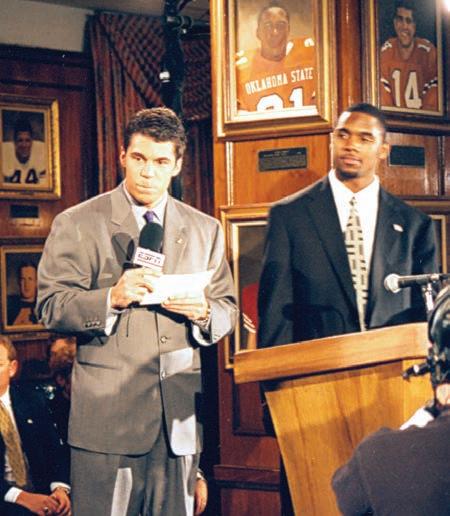

“Those are plays people don’t forget,” Michigan’s Carr told ESPN two decades later. “And for us, that put us in a position where we had a chance to play for the national championship. He started the season strong, but finished it even stronger. I can’t imagine anybody doing more or meaning more to his team, and doing it consistently at the biggest moments the way Charles did.”
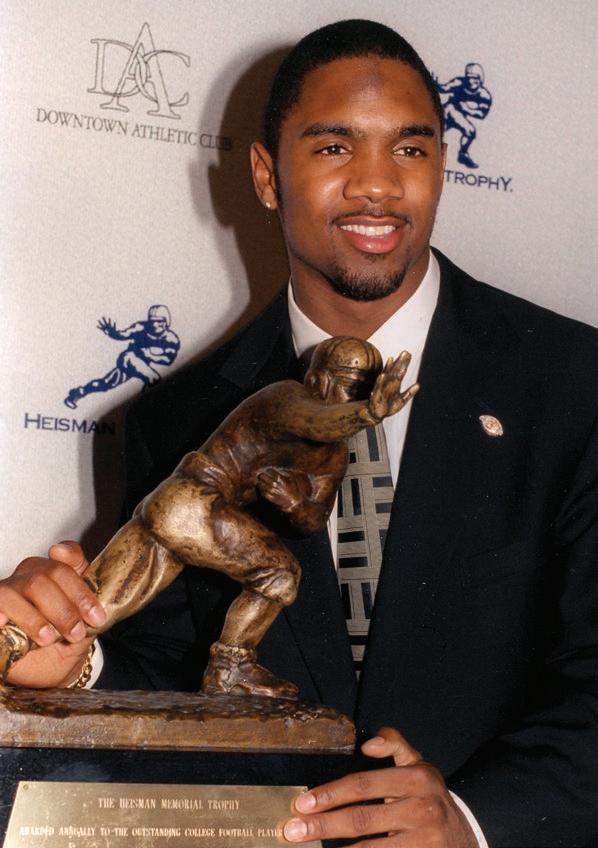


I wish my whole team could be up here with me.
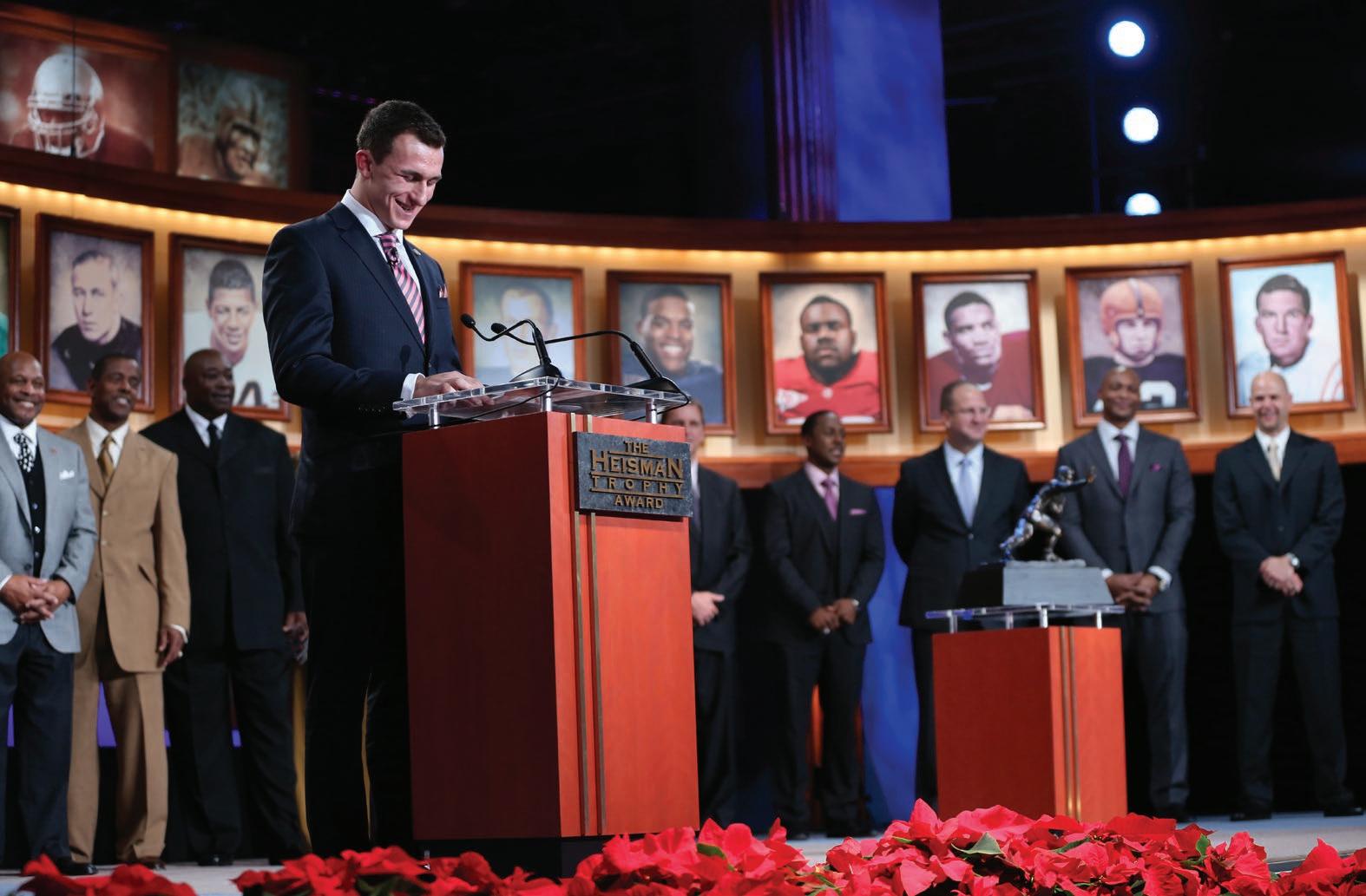
When camp opened for the 2012 Texas A&M football team under first-year head coach Kevin Sumlin, the program had just one double-digit win season since 1994 and none since 1998. It was about to embark in its first season in the Southeastern Conference and, after two weeks of hot August ball, the Aggies still didn’t know who their starting QB would be. That changed on August 15 when Sumlin announced that redshirt freshman Johnny Manziel, on the heels of a strong scrimmage performance, would be the Aggies’ season-opening starter, beating out a pair of sophomore teammates.
Just under four months later, Manziel would make history, becoming the first freshman to win the Heisman Trophy, capping a stunning season in which he took the college football world along for a wild ride that ended with an 11-2 record, a win over No. 1 Alabama, countless ESPN SportsCenter Top 10-worthy plays and a huge Cotton Bowl victory.
That Manziel won the job in the first place wasn’t a surprise. He was a highly sought after recruit who initially committed to Oregon (along with future Heisman winner Marcus Mariota) before signing with Texas A&M. A star at Kerrville (Texas) Tivy High, he was selected as a 2011 Parade AllAmerican and the National High School Coach Association Football Player of the Year, following a senior season that saw him complete 228 of 347 passes for 3,609 yards and 45 TDs against just five interceptions. He also added 1,674 yards rushing and another eye-popping 30 touchdowns on the ground. He even caught one TD pass and returned a kickoff for a score.
When Manziel got to College Station in 2011, the quarterback job was locked up by senior and future NFL player
by Paul GoldbergRyan Tannehill. Manziel redshirted while Tannehill turned in a fine 3700-yard, 29 TD senior season and then was drafted in the spring of 2012. The Aggie QB1 spot was open. Enter Manziel, stage right. He was supposed to ease into his college career with an August 30 date against Louisiana Tech, but Hurricane Issac postponed the game to October. Manziel instead made his college debut against No. 24 Florida, the first Aggie freshman to start an opener since 1944. Though Manziel performed solidly—passing for 173 yards and running for another 60, including an 11-yard TD scamper—the Aggies fell 20-17.
A week later, Manziel provided the first glimpse of the magic that would mark his 2012 season. He led the Aggies to a 48-3 win against SMU, passing for 294 yards and four scores while rushing for 124 yards and two more TDs one for 48 yards. His passing and total yards (418) broke Aggie freshman records, standards he would repeatedly re-set that fall. Said Sumlin after his and Manziel’s first win: “It’s Game 2. A quarterback gets way too much credit when we win and all the blame when we lose. I think he’s handling it very well.” Manziel and Texas A&M next overwhelmed South Carolina State in the freshman’s first home win, 70-14. Manziel completing 15 of 20 passes for 174 yards and three scores while rushing for 89 on just eight carries, scoring on second-quarter runs of 20 and 39 yards.
A week later, the Aggies demolished Arkansas, 58-10, the freshman Manziel helping deliver to his senior teammates their first win over the Razorbacks, grabbing the national spotlight in the process. Manziel threw for a school-record 453 yards and three touchdowns on 29 of 38 passing while rushing

for 104 yards and another score, his 557 of total yards setting Texas A&M and SEC records. It was the most points the Aggies had scored against Arkansas in the 69-game series history.
On the road in Oxford on October 6, Manziel looked mortal, for a time. He had thrown the first two interceptions of his career and lost a fumble among six Texas A&M turnovers, as the Aggies trailed Ole Miss, 27-17, midway through the fourth quarter. But then the Rebels got a close-up look at the future Heisman winner’s penchant for huge plays. Manziel first engineered a 99-yard scoring drive punctuated by his 29-yard scoring jaunt and followed it with a 20-yard TD pass with 1:46 left for a 30-27 win, the team’s first-ever SEC road victory. Manziel finished with 191 yards passing and a career-best 129 yards rushing.
The Aggies next traveled to Shreveport for the make-up game with Louisiana Tech, who entered the game 5-0 and ranked No. 23. Manziel orchestrated a 59-57 win, leading the Aggies to just enough scoring to withstand a late Bulldog rally that fell a late two-point-conversion attempt short. He threw for 395 yards and three scores, rushed for 181 yards (the second most in school-history by a QB) and three more TDs, his 576 total yards erasing his weeks-old SEC record. His career-best 72-yard TD run with two minutes left provided the Aggies’ final score of the game.
Texas A&M returned home to host No. 6 LSU and the
Tigers bottled up Manziel for essentially the only time during his Heisman-winning season, limiting the freshman to 29-of-56 passing for 276 yards and three interceptions and to only 27 yards rushing on 17 carries, sacking him three times. The No. 22 Aggies rebounded with a 63-21 road win over struggling Auburn, totaling the most points they ever scored against the Tigers. In barely over a half of action, Manziel completed 16 of 23 passes for 230 yards and two scores, rushing for another 90 yards and three more touchdowns. In guiding the Aggies to a 6-2 start, Manziel surpassed 2,000 yards passing and the 3,000mark in total yards.

Staying on the road, Manziel—at this p oint, the SEC’s leading rusher orchestrated a convincing 38-13 win at No. 17 Mississippi State. He passed for 311 yards and ran for 129 more with two scores, for the Aggies’ fifth road win of the season.
Road win No. 6 came a week later and would make Manziel the Heisman favorite. Facing top-ranked and defending national champion Alabama in Tuscaloosa, Manziel threw for 253 yards and two TDs against the top-ranked defense in the country and rushed for 92 more yards, as Texas A&M upset the Crimson Tide, 29-24. Manziel led the Aggies to a blistering 20-0 first-quarter start—including a third-down TD pass in which he briefly lost the ball in midair while scrambling, only to snatch it safely before finding receiver Ryan Swope in the end zone.
After Alabama closed to within 20-17, Manziel guided A&M to two fourth-quarter scoring drives. The first was a field goal, the second a two-play TD drive on back-to-back passes of 42 and 24 yards. Texas A&M’s defense then made a late stand to secure the program’s second-ever victory against a No. 1 team. Johnny Football was becoming Johnny Heisman. Years later, he would say “That was the high point of my career. Just to be able to go in there and do that, it will stick with me forever.”
Manziel and the Aggies—now ranked No. 9— returned home for their final two games of the season. First they defeated Sam Houston State, 47-28, with Manziel throwing for 267 and three TDs and rushing for 100 yards and two more scores in just over a half’s work.

Next, in the regular-season finale, Manziel led Texas A&M to a 59-29 trouncing of Missouri to reach 10 wins for the first time in 14 years. He completed 32 passes for 372 yards and three touchdowns and rushed for 67 and two more scores, finalizing his Heisman resume by reaching 4,600 yards of total offense (3,419 through the air, 1,181 on the ground) and a combined 43 touchdowns (24 passing, 19 rushing). Manziel’s total offense mark broke 2010 Heisman winner Cam Newton’s SEC total offense season record of 4,327 yards, done in two less games. He was also the first SEC player ever to pass for over 3,000 yards and run for over 1,000.
His spectacular season was enough to win the 2012 Heisman with 2029 points in a relatively close vote with Notre Dame linebacker Manti Te’o, second with 1706 total points. In addition to becoming the first freshman to win the Heisman, Manziel was just the second Aggie to hoist the trophy, joining Texas A&M halfback John David Crow, who won it in 1957. Upon winning the award, the calm 20-year-old Manziel took to the stage and told the watching audience, “I wish my whole team could be up here with me.” Manziel, also named the SEC Freshman of the Year and the Davey O’Brien winner, completed his amazing season by leading Texas A&M to a 41-13 Cotton Bowl win over No. 12 Oklahoma. He set a Cotton Bowl-record with 516 total yards, posting an FBS bowl record with his 229 yards rushing on 17 carries and two scores, while passing for 287 yards and two more TDs.
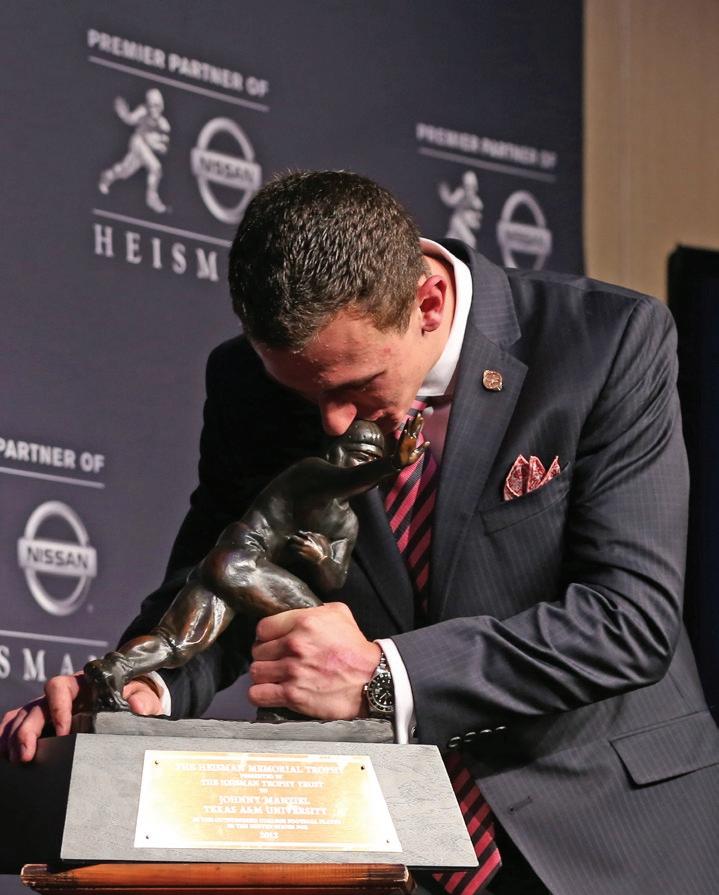
Manziel returned to school as a 2013 sophomore and threw for a remarkable 4,114 yards and 37 touchdowns while rushing for 759 yards and nine scores. He again led the SEC in total offense with a record 5,116 yards (including a bowl game) and finished fifth in the Heisman voting. Following his sophomore season, he made himself eligible for the NFL draft and was selected 22nd overall by the Cleveland Browns. He played two seasons for the Browns, throwing for 1,500 yards and seven TDs in 2015, and played one season in the CFL.
Manziel’s 2012 season was one of the most electric performances in college football history, and one that no one saw coming. A freshman winning the Heisman? Never happen. And then Johnny Manziel made it happen.





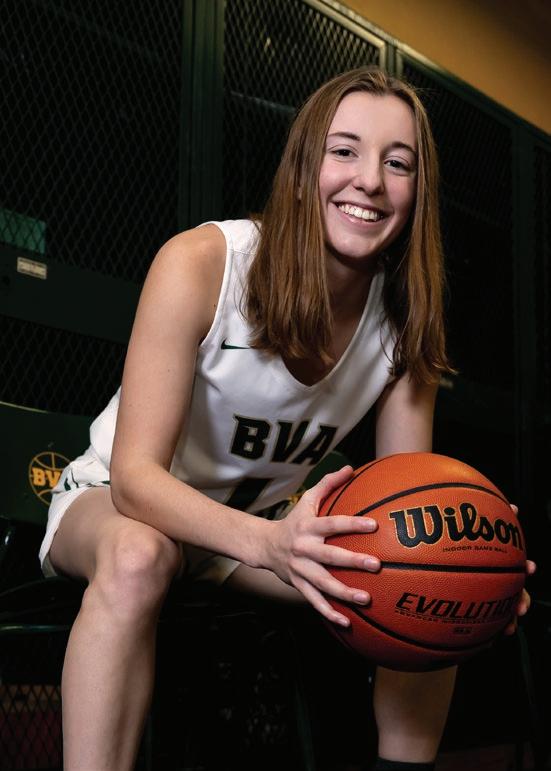

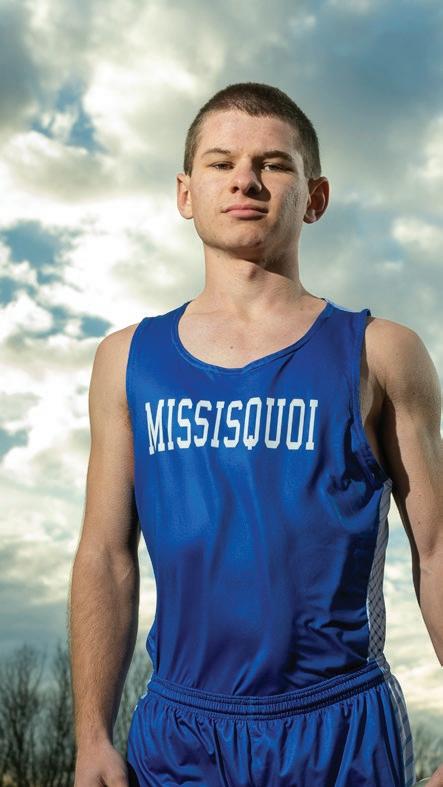
The Heisman High School Scholarship was created in 1994 through a partnership between Wendy’s and The Heisman Trophy Trust. From its inception, the program has leveraged the reputation of the Heisman Memorial Trophy as a symbol of great ability combined with diligence, perseverance, and hard work. The Heisman High School Scholarship program celebrates and rewards outstanding male and female scholar-athletes who understand that the most important victories happen not only on the field, but also in their schools and communities.
Over the past 28 years, the program has honored more than 600,000 of the nation’s most esteemed high school seniors and provided hundreds of thousands of dollars in college scholarships to students, and more than a million dollars to high school academic and athletic programs across the country. The Heisman High School Scholarship program honors the nation’s most accomplished, community-minded high school senior athletes. By inviting male and female students from schools across the country to share their stories of leadership and impact, the program aims to inspire all students to harness their potential, push their limits, and use their talents not only to advance their own futures, but to improve the communities and world around them.
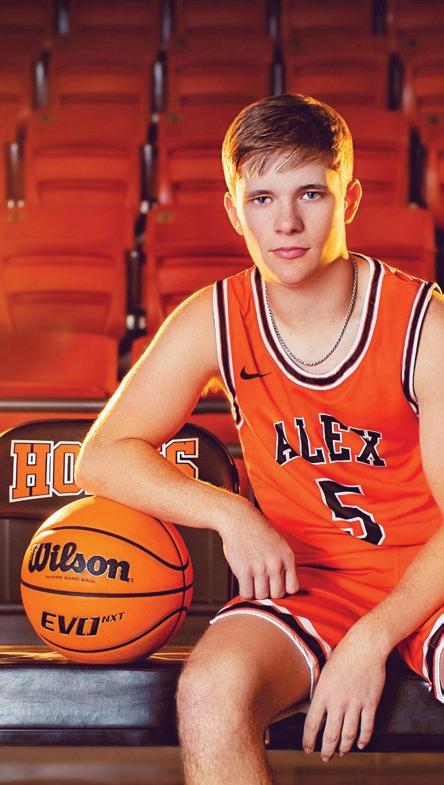
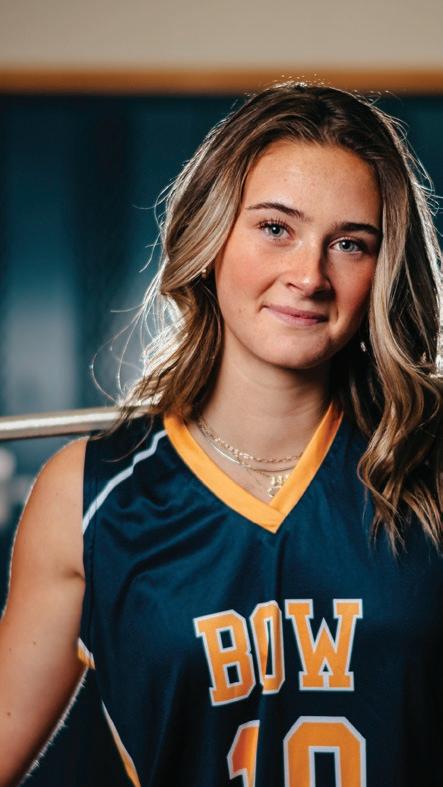
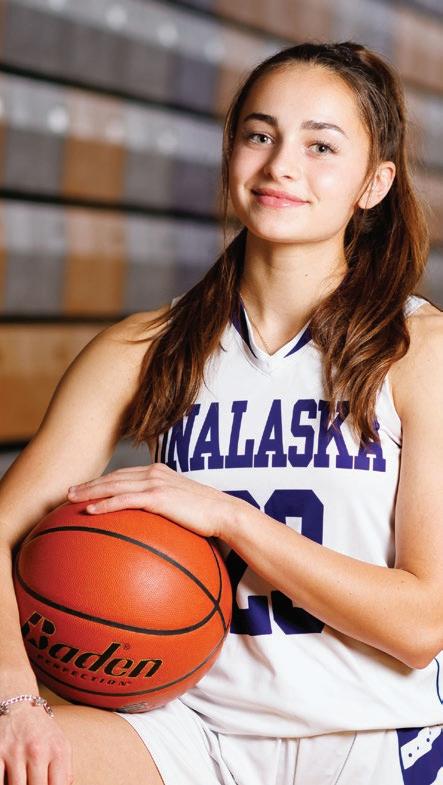

The 2022 Heisman High School Scholarship National Winners are Viva Kreis from Belle Vernon Area High School in Belle Vernon, PA and Cameron Srivastava from Spartanburg Day School in Spartanburg, SC. The Heisman Trust is proud to celebrate Viva and Cameron. As we add their names to the list of our nation’s most esteemed high school senior athletes, we know that it is their leadership, their service, and their perseverance that set the example. We thank them for showing the way to all who aspire to reach their full potential and to make game-changing differences in our world.
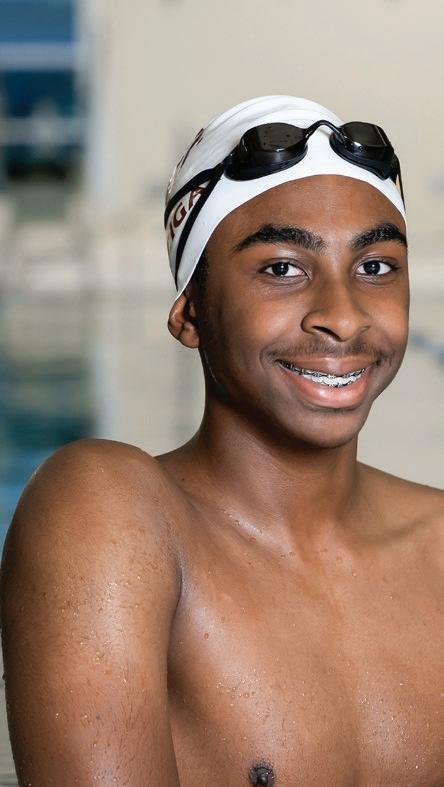




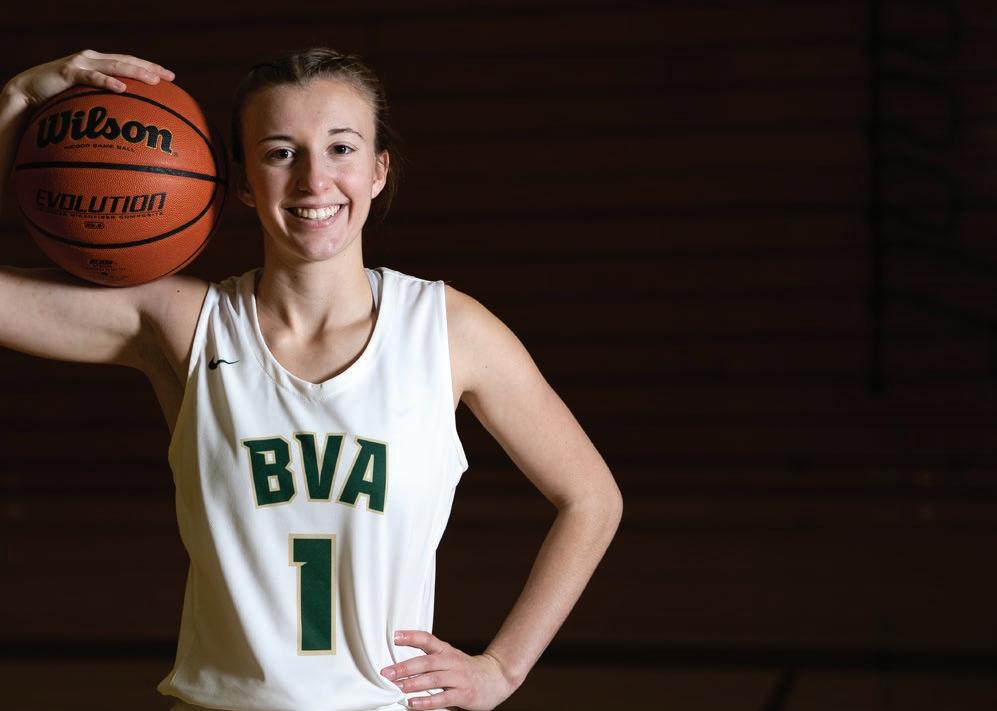
“Success to me does not only represent an accomplishment, it describes the process that I underwent to achieve my goals and the lessons I have learned along the way.”
As a high school senior, Viva Kreis has already amassed a resume of accomplishments that rivals even the most ambitious of bucket lists. She’s hiked the Inca Trail to Machu Picchu in Peru, finished a half marathon, and traversed the Grand Canyon from North to South Rim. She’s attended WNBA games in all 12 markets and personally interviewed league players, coaches, and executives. She’s traveled and competed internationally with the USA Team Handball Team. Perhaps what’s most impressive is that none of these opportunities were handed to her. She’s had to relentlessly pursue each one. In Viva’s opinion, that has made each experience all the more rewarding.
“When I first discovered team handball in 8th grade gym class, I had no idea that in three years I would be representing Team USA while playing the sport in the World Championships,” she says. Despite being an underrepresented sport in the USA with limited opportunities to play in her area, and even through the challenges of the global pandemic, Viva kept finding ways to perfect her newfound passion while participating at the varsity level in three other high school sports. “I dove deeper into the USA Team Handball (USATH) organization, learning of the opportunity to serve on the Youth Advisory Council, where I now work to increase the exposure of team handball in the United States through
USATH social media accounts.” In February 2022, Viva was one of just 16 athletes to make the USA Team Handball Junior National Team and has since had opportunities to compete at the Olympic level across the globe.
Viva is not done achieving major feats in sports. She will attend the Walter Cronkite School of Journalism and Mass Communication at Arizona State University where she plans to pursue her career goal of becoming a broadcaster for women’s sports. However, athletics is just one arena where she makes things happen. Academically, she’s at the head of her class. In her community, she not only participates, but she also initiates new programs wherever she sees an unmet need. She personally created a Sock-it-to-Homelessness drive, collecting more than 2022 pairs of socks for homeless veterans in the Pittsburgh area. In honor of a close friend who tragically passed away her freshman year, she organized an annual fundraising effort to raise awareness of suicide prevention. In these and all of her successes, Viva gives credit to the example her mom has set. As a single mother, cancer survivor, army veteran, lron Woman, and ultramarathoner, “My mom is my why,” she says. But Viva is ultimately responsible for the what, when, how, and where. “While my mom has enabled me to dream big dreams, I am the one who accomplishes them.”
She has the will. She makes the way.
“I did not expect a ninth-grade science fair project to change my life,” says Cameron Srivastava. He elected to study heart valve disease because of his family’s history with cardiac issues. Specifically, his grandfather needed heart surgery, but was too frail to undergo it. Interested in exploring the options, Cameron’s project research uncovered a new medical procedure that could bring hope to people like his grandfather. But the data Cameron found pointed to inequity in access to the treatment based on race. “This inequality offended my sense of fair play developed in sports, and I made it a goal that everyone would be treated equally by our healthcare system.”
Cameron’s project earned him a win at the Region Ill Science Fair and allowed him to advance to the International Science & Engineering Fair (ISEF). But he did not stop there. What he learned inspired him to advocate for health equity in his community. He began volunteering at Black churches and barbershops and giving speeches at community centers to raise awareness about new treatments. He founded a non-profit organization, Equity Starts from the Heart, to establish a coalition of community members, physicians, nurses, hospital leaders, pastors, politicians, and educational institutions to jointly address the issues. He published an abstract in American College of Cardiology on improving
patient care processes. Through this journey, Cameron personally met with individuals affected by this work. “This volunteer experience changed my perception of science; behind each data point on a chart or graph is a person with a family who deserves to be treated fairly.”
Cameron plans to devote his career to research and medical advancement that will bring widespread benefit to all people. In the meantime, he will continue to strengthen the legacy of community he’s been instrumental in fostering at his school and beyond. His roles as captain of his sports teams, student body president, peer tutor, editor of the school newspaper, and member of the honor council give him unique opportunities to influence culture and create a spirit of unity on the field and off, which he believes propelled his cross-country team to become state champions. His leadership and influence reach well beyond the school through his participation in South Carolina Youth in Government, his efforts to extend voter registration drives throughout the county, and his role in the national political process as a volunteer during the 2020 Democratic primary. “I was taught that being part of a community means that family extends beyond the four walls of our house.” He already lives that lesson every day even as he looks toward a future where he can make an even greater difference.
Passion for community creates opportunities for all.


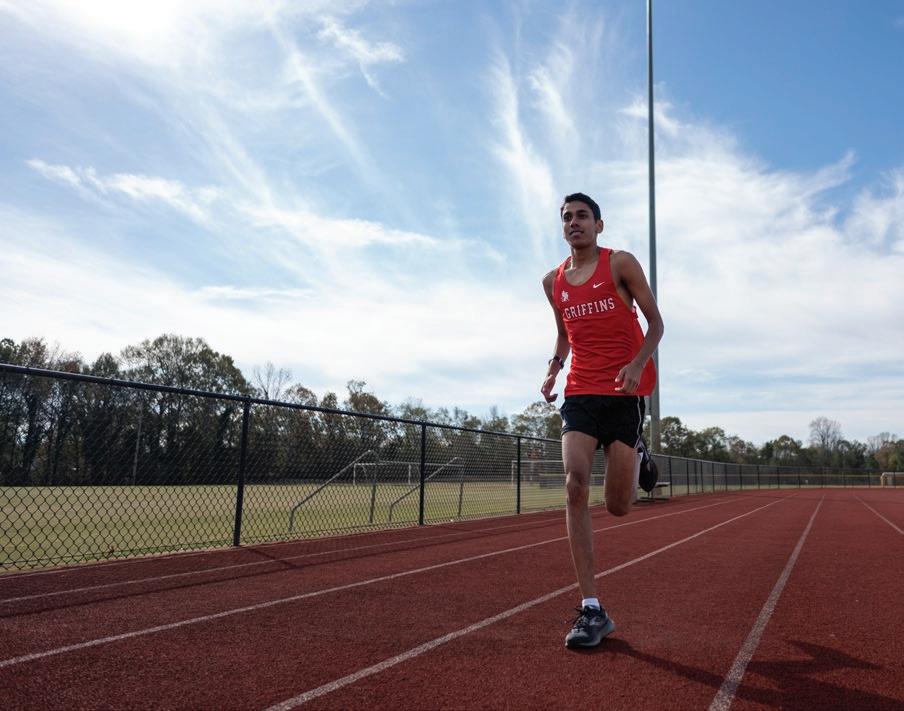


“My values —hard work and civic mindedness— come from an internal desire to make sure all people are respected and treated fairly.”
Mike Krzyzewski, better known as Coach K, has been an icon of college basketball for over forty years. During his historic tenure as head coach of Duke, starting in 1980, he maintained a 1,129–309 record, making him the winningest coach in NCAA Division l history. This impressive record has directly translated into five national championship titles (1991, 1992, 2001, 2010, 2015) as well as 13 Final Four appearances. He has also been recognized as National Coach of the Year 12 times, America’s Best Coach by CNN/Time in 2001, and Sports Illustrated “Sportsman of the Year” in 2011. He ended his coaching position at Duke after the 2021–22 season, during which he coached his grandson and led Duke once more to the Final Four.

While gaining his fame in the realm of college basketball, Coach K’s achievements stretch beyond the NCAA. Notably, he coached the U.S. men’s national basketball team in the 2008, 2012, and 2016 Olympics, winning gold in each of these appearances. Coach K adds the Heisman Humanitarian Award to his extensive list of accolades, alongside membership in the Naismith Memorial Basketball, College Basketball, United States Olympic, and FIBA Halls of Fame. Although these athletic feats are impressive on both the national and international stage, Coach K has also accomplished valuable philanthropic work that some might argue has had even greater impact.
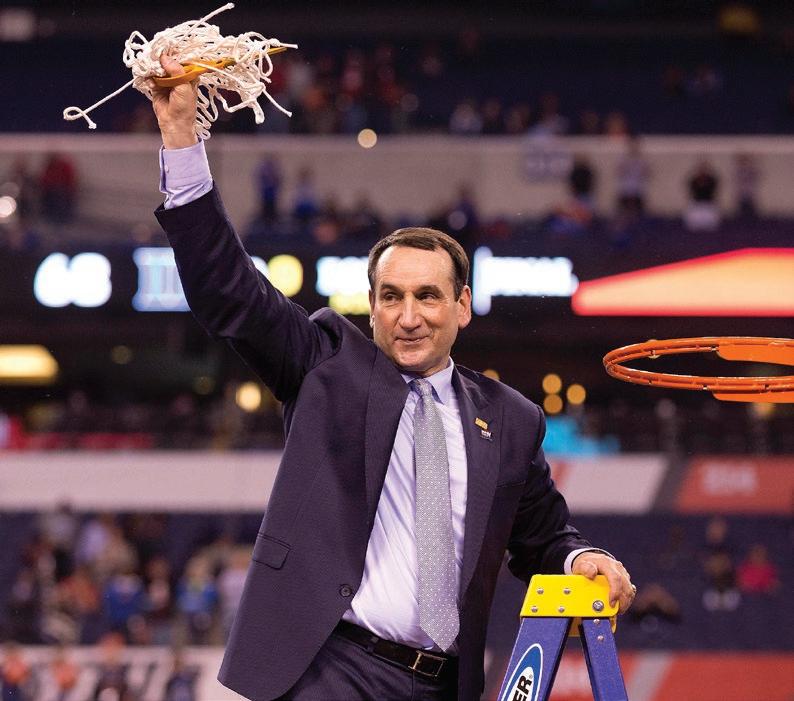
In February 2006, Coach K founded the Emily K Center in Durham, North Carolina. It is named after his mother,
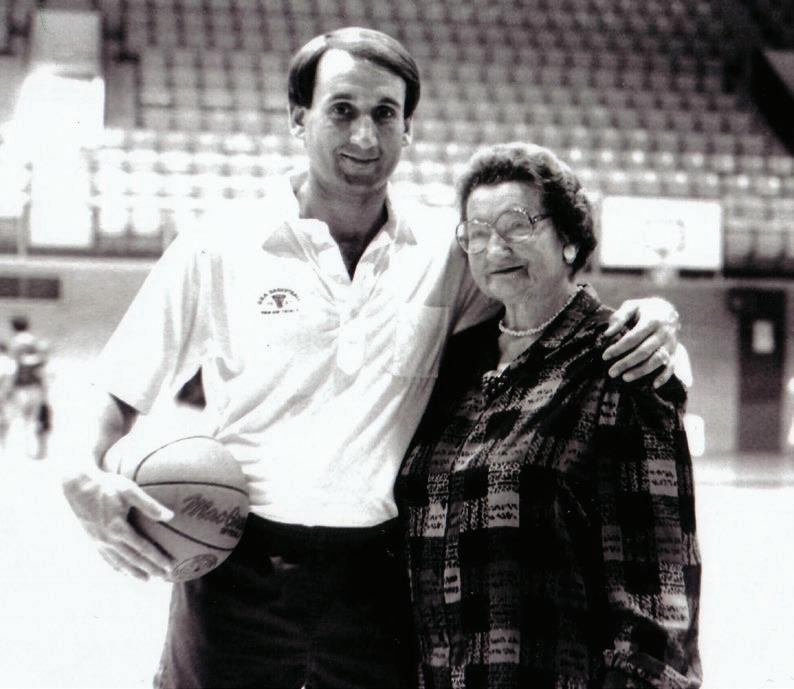
 by Eva Salazar and Buddy Cohen
by Eva Salazar and Buddy Cohen
a tribute to the incredibly significant role she played in his life and education. Her support, devotion, and love—coupled with her fantastic work ethic—provided young Mike with an example he would follow for the rest of his life. She encouraged Mike to attend West Point as a first-generation college student where he also played basketball. Her emphasis on education, coupled with her unwavering support of his athletic pursuits, has molded Coach K into the man he is today and has inspired him to do the same for thousands of young people.
Besides his mother, Coach grew up with another important influence in his life, the local community center, which became his second home as a child, affording his family a place to hone skills, make friends, and strengthen neighborhood ties. The community center changed his life and set the example for the Emily K Center. Coach’s goal for the Emily K Center was to provide a safe and nurturing environment for children to succeed. A place that would inspire its youth to dream big and reach their potential as leaders in the community, as he has. And Coach K wanted to give children who may not have the chance, an opportunity to earn a college degree.
As Founder and Board Chair, Coach K has seen the Emily K Center blossom from a small program serving just 38 students to a prospering academic center serving 2000 students annually. The Center’s program’s focus on high school and college accessibility and enrollment has made it a prime resource for all students in the Durham community.
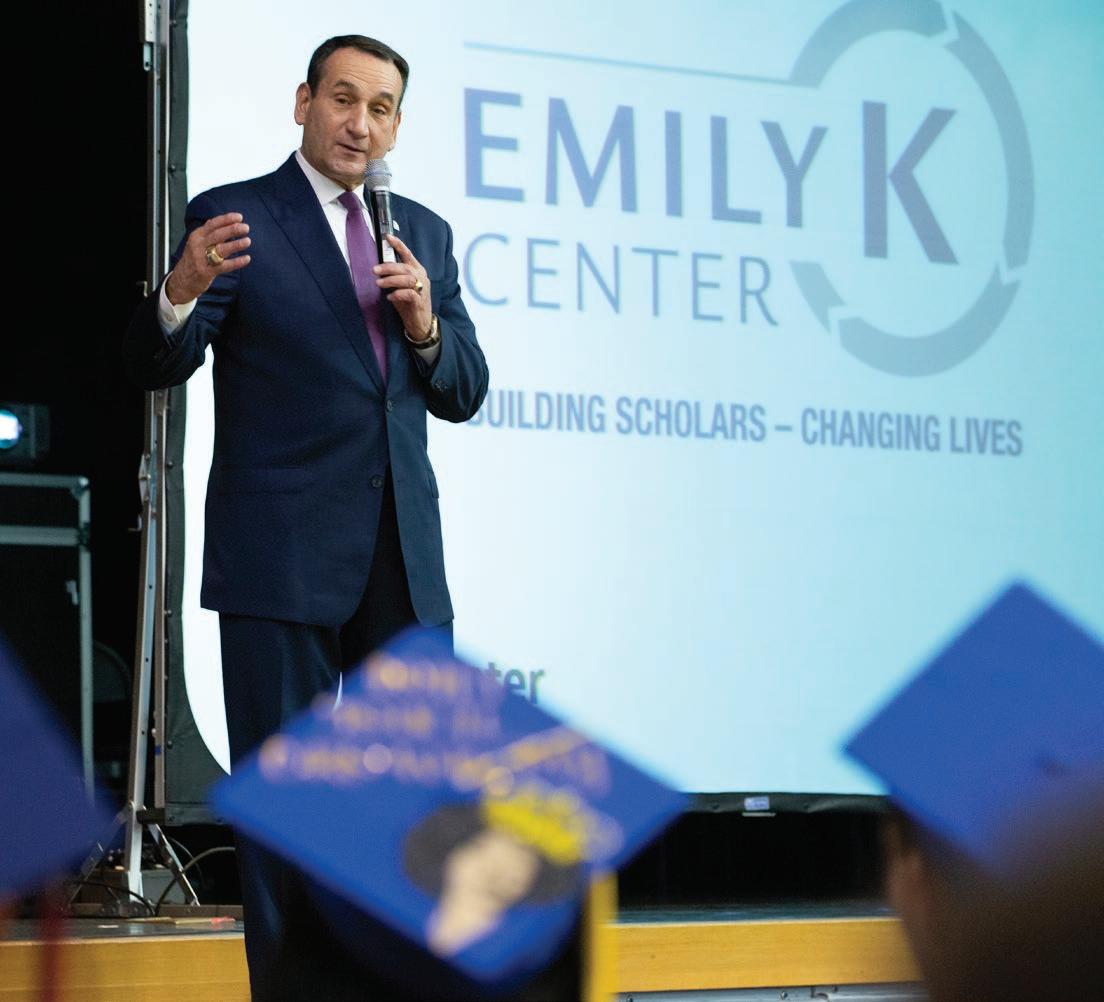
“The happiness of a youngster and his family coming into the center for instruction—for help” is what Krzyzewski once


said stands out to him the most. He wants children to have a place to go, just like he did as a child. “It’s kind of like they call it their second home. It’s a place where not only do people care about them and want to teach them, but it’s also a place where people believe in them. And they believe in the outcome of what will happen while they’re there.” Krzyzewski is giving children the chance to succeed in ways they may not have known were possible or available to them.
In addition to serving students, the Emily K Center operates as a meeting place for all Durham community members, as it avails its facilities to dozens of schools, organizations, and groups in the area. Beyond his work with the Emily K Center, Coach K has also been involved with many other charitable groups including the Duke Children’s Hospital, the V Foundation for Cancer Research, the Children’s Miracle Network, and the American Cancer Society’s Coaches vs. Cancer initiative.
There are bound to be feelings of nostalgia and confusion as Duke Basketball navigates its first season without Krzyzewski as the head coach in over four decades. But there is no doubt that Coach K’s presence will continue to be felt amongst the Blue Devils and the rest of college basketball. Outside of basketball, Coach K’s influence on the Durham community, and beyond, has and will continue to be felt through his impact on the youth at the Emily K Center and his other philanthropic pursuits. The Heisman Trophy Trust is proud to name Mike Krzyzewski—Coach K—as the the 2022 Heisman Humanitarian.

The Heisman Humanitarian Award was established in 2006 to honor outstanding professionals in the sporting world who make tremendous contributions to their communities and uphold the values and principles of the Heisman Trophy Trust.
MLB star Curtis Granderson continues to be an ambassador for the sport in his retirement. He serves as President of the Players Alliance, a player-led organization that aims to create an inclusive culture within baseball—where differences are leveraged to elevate racial equality and provide greater opportunities for the Black community. He received the 2016 Roberto Clemente Award, presented to a player who best represents baseball through extraordinary character, community involvement, philanthropy and positive contributions both on and off the field. Curtis is also a supporter of the Jackie Robinson Foundation, one of the nation’s premier scholarship and leadership development programs for minority college students. And he made a $5 million donation to the MLB academy in Chicago—the single biggest donation ever made by a Major League player.

Curtis created the Grand Kids Foundation in 2007 to foster positive youth development through education, physical fitness and nutrition. Since its inception Grand Kids has helped over two million kids live more active lives. In 2013, Granderson expanded the reach of his foundation to address food insecurity in the communities they were serving. Grand Giving, a month-long program, hosted each November, raises funds and awareness surrounding the food insecurity that prevents many children from reaching their true potential. Grand Giving has provided over 40 million meals to children and families in need. www.grandkids.org

Kristi Yamaguchi is known for her hard work and dedication throughout her figure skating career. In 1986, she won her first U.S. Championship title with doubles partner Rudy Galindo, another World Juniors Championship two years later, and back-to-back seniors titles in 1989 and 1990. Yamaguchi then focused on singles skating and won the World Championship in 1991 and 1992 and a gold medal in the 1992 Winter Olympics. She was inducted into the U.S. Figure Skating Hall of Fame in 1998, the World Figure Skating Hall of Fame in 1999, and the U.S. Olympic Hall of Fame in 2005.
In 1996, Kristi founded Always Dream to support underprivileged and disabled children through summer camps, after-school programs and financial support for back-to-school supplies. As a mother and a children’s book author herself, Yamaguchi understands the crucial role that books play in children’s literacy development, so she shifted the focus of Always Dream to improving early childhood literacy. Always Dream provides high-quality books, digital tablets and a book coach to support parent engagement and foster children’s love for reading. During the 2022–23 school year, Always Dream will serve 2,800 students and family members and partner with 71 schools in California and Hawaii. www.alwaysdream.org
Mark Teixeira played 14 seasons with Major League Baseball for the Rangers, Braves, Angels, and Yankees. He was a three-time All-Star and a 2009 World Series Champion. He finished his career with 409 home runs and finished second in the 2009 MVP race.
Teixeira has long been serious about giving back to the communities in which he has lived and played. After signing his first MLB contract, he endowed a scholarship at his high school in honor of a friend who had been killed in a car accident, and set up a charitable fund supporting six scholarships at Dallas-Fort Worth area high schools. He serves on the board of The Emerald Corridor Foundation, which works to restore safe green spaces and waterways in Northwest Atlanta and strengthen the community via education, job training, and employment opportunities. Since his days with the Yankees, Teixeira has been a supporter of DREAM, a NY youth development organization that uses the power of teams to inspire inner-city youth to recognize their potential and realize their dreams through its school, after-school, and summer programs. DREAM has also been supported by the Heisman Trophy Trust. In 2020, Teixeira partnered with Depend and the Prostate Cancer Foundation for the Stand Strong for Men’s Health campaign, helping to destigmatize male incontinence and raise awareness and money for prostate cancer research.
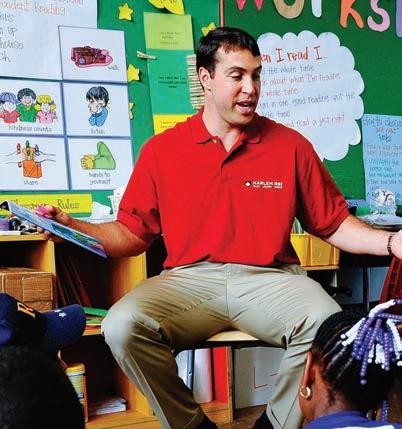
Ernie Els is one of the most accomplished golfers in the world, with 72 career victories, including four major championships—two at the U.S. Open and two at The Open Championship. He is also a seven-time winner of the World Match Play Championship, and was elected to the World Golf Hall of Fame his first time on the ballot in 2010.
Inspired by their son’s 2009 autism diagnosis, Ernie Els and his wife, Liezl created the Els for Autism Foundation which offers innovative, evidence-based programs for families and individuals across the life-span, in six focus areas: Education, Research, Global Support, Recreation Services, Adult Services and Therapy Services. The Els for Autism Foundation serves families around the world, and also offers in-person programs and services at The Els Center of Excellence in Jupiter, Florida.

“When my wife Liezl and I started the Foundation back in 2009, our son Ben had just been diagnosed with autism spectrum disorder,” Els explains. “From the beginning, our goal has been to create The Center of Excellence as an example of what can be available to individuals on the spectrum. The Center has all the essential components on one campus, which makes it easier for families. It’s a game changer for the local and international autism community.” www.elsforautism.org
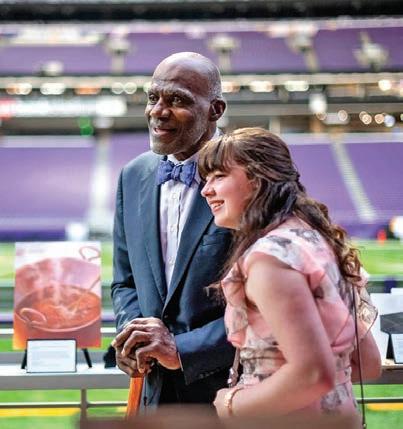
A star defensive lineman for Notre Dame, Alan Page played for teams that went a combined 25-4-1 while winning the 1966 national title. He was drafted by the Minnesota Vikings and led them to four Super Bowls, and in 1971 he became the first defensive player to win the NFL’s MVP award. While playing for the Vikings he earned his law degree at the University of Minnesota. After his retirement from football in 1981, Page joined the state attorney general’s office before becoming the Assistant Attorney General. In 1992 he was elected an associate justice of the Minnesota Supreme Court—the first African-American to hold a statewide elected office in Minnesota. He was re-elected three times before retiring in 2015. Justice Page and his daughter, Kamie Page, have written four children’s picture books, Alan and His Perfectly Pointy Impossibly Perpendicular Pinky (2013), The Invisible You (2014), Grandpa Alan’s Sugar Shack (2017), and Bee Love (Can Be Hard) (2020). In November 2018, Justice Page received the Presidential Medal of Freedom. In 2019 he was chosen as a member of the NFL’s 100th Anniversary All-Time Team.
The Page Education Foundation was founded in 1988 by Alan and his wife Diane to financially support college students’ academic goals while fostering positive mentor relationships and encouraging role models for children. In return for their scholarship, recipients provide fifty hours of volunteer mentoring and tutoring to children in grades K–8. Since its inception, the Foundation has awarded over $16 million in grants to more than 8,000 Page Scholars who have volunteered nearly 500,000 hours, working with 50,000 children across Minnesota. Diane Page passed away in 2018; to recognize her critical role in starting and growing the Foundation, it has been formally renamed The Page Education Foundation Founded by Diane and Alan Page. www.page-ed.org
Former NFL quarterback Boomer Esiason is the most visible national figure in the fight against cystic fibrosis, a life-threatening genetic disease that affects the lungs and digestive systems of 30,000 children and adults in the United States. Throughout his career in professional sports and the media, Esiason has been a committed and active participant in many charitable causes, but he began focusing on cystic fibrosis in 1993 when his son, Gunnar, was diagnosed with the disease.
In 1994, Esiason launched the Boomer Esiason Foundation, a dynamic partnership of leaders in the medical and business communities joining with a committed core of volunteers to heighten awareness, education and quality of life for those affected by cystic fibrosis, while providing financial support to research aimed at finding a cure. The Boomer Esiason Foundation has raised millions to support research toward a cure for CF, as well as programs directly benefiting the CF community. The Foundation has touched many lives by providing hospital grants, transplant grants, scholarships, education, and awareness of CF. Because of their and others’ tireless commitment, the median age of CF patients has risen to nearly forty years old. www.esiason.org

Joe Torre has become one of the most recognizable faces of baseball over the course of more than a half-century in the game. Despite a successful fifteen-year playing career that included several All-Star selections and the 1971 MVP, Torre is best remembered as one of the most successful managers of all-time. Torre won four World Series rings in five years with the New York Yankees in the late 1990s, and the team reached the playoffs in each of his twelve seasons in the Bronx.
In 2002, Torre and his wife Ali founded the Safe at Home Foundation, dedicated to ending the cycle of domestic violence. Inspired by Torre’s own childhood spent living in an abusive home, Safe at Home has launched national awareness campaigns and established in-school initiatives—called Margaret’s Place, in honor of Torre’s mother— that provide children with a safe space and a professional counselor trained in domestic violence intervention. Safe At Home now has 20 Margaret’s Place program sites across the country in schools and community-based settings. Each year, they provide services to more than 19,000 young people ages 11 through 18, many of whom are impacted by trauma and violence in their homes, schools, and communities. www.joetorre.org

David Robinson’s charitable efforts are just as admirable as his achievements on the court. Beginning at the Gates Elementary School in San Antonio in 1991, he offered a $2,000 scholarship to every fifth grader who finished high school and attended college. He kept his pledge, and in 1998, even quadrupled his donation, awarding $8,000 to each student who received a diploma. Soon after his initial commitment to the Gates Elementary students, David and his wife Valerie founded the David Robinson Foundation. In 2000, the foundation raised $9 million to create the Carver Academy, an independent pre-K through eighth grade school for the underserved population of East San Antonio. Robinson received the Patriot Award, the highest award given by the Congressional Medal of Honor Society, which in 2000, was presented to professional athletes to recognize the important role that sport plays in military morale. Robinson also encourages other celebrities to utilize their respective platforms for the greater good. He cofounded the Admiral Capital Group in 2007, and in 2008 he created The Admiral Center, which helps celebrities find the right cause to support, using their influence to bring attention and action. In 2012, the Robinsons partnered with IDEA charter schools to include Carver Academy in the IDEA charter network. www.admiralcapitalgroup.com
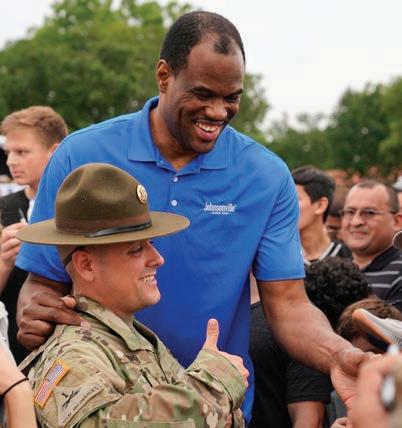
Jeff Gordon is a four-time NASCAR Cup Series champion and one of the world’s most recognizable drivers. He began racing at the age of five and had won 35 main events by age six. With 86 career wins, he ranks third on the all-time wins list.
Inspired by his crew chief’s son’s battle with leukemia, Jeff established the Jeff Gordon Children’s Foundation in 1999, to aid in the fight against pediatric cancer. In 2007 he founded the Jeff Gordon Children’s Hospital in Concord, NC, serving children in the community with a high level of primary and specialty pediatric care, regardless of their ability to pay. What started as a small project driven by one special child has grown into an organization that has raised many millions of dollars for children’s health organizations. In 2011, Jeff Gordon Children’s Foundation extended its efforts, bringing pediatric cancer care to Rwanda, Africa. With the Foundation’s support, organizations are able to improve patients’ quality of life, provide essential treatments, and conduct medical research. The Jeff Gordon Children’s Foundation has contributed over $16 million to support children battling cancer. www.jeffgordonchildrensfoundation.org

Marty Lyons was selected by the New York Jets in the first round of the 1979 NFL draft, following a successful career as an All-American defensive tackle at the University of Alabama, where he helped lead the team to a National Championship in 1978. Lyons played eleven memorable seasons with the Jets as a member of the famed “New York Sack Exchange,” one of the top defensive lines in NFL history.
While still active as a player, he established The Marty Lyons Foundation to fulfill the special wishes of children diagnosed with a terminal or life-threatening illness. Since 1982, The Marty Lyons Foundation has brought much-needed joy to children and families nationwide, with 11 chapters granting wishes in 14 states. To date they have granted more than 8,200 wishes. www.martylyonsfoundation.org

Warrick Dunn was drafted by the Tampa Bay Buccaneers 12th overall in the 1997 NFL draft. He was named AP NFL Offensive Rookie of the Year in 1997 and earned three Pro Bowl selections in his career. He played for the Atlanta Falcons from 2002 to 2007 between stints in Tampa Bay. After his NFL career, Dunn took a stake in the Falcons’ ownership group led by Arthur Blank and is a minority owner of the team. Warrick founded Homes for the Holidays (HFTH) in 1997 to honor his late mother’s dream of homeownership. The program partners with local community organizations to reduce the burden on new, single parent homeowners by fully furnishing their new house, providing down payment assistance checks, and stocking the pantry with food. Today, Warrick Dunn Charities has expanded from HFTH into four additional programs: Betty’s Hope, Count on Your Future, SCULPT, and Hearts for Community Service Scholarships. Together, the programs are dedicated to strengthening and transforming communities by combating poverty, hunger, and improving the quality of lives for families academically, socially, and economically. www.wdc.org
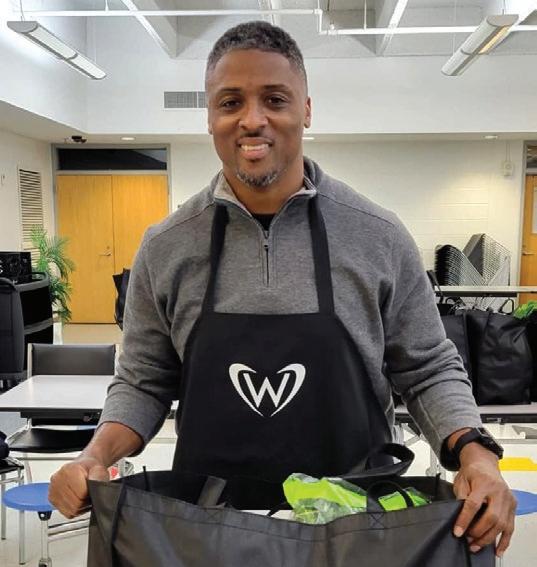
Mia Hamm is widely regarded as one of the best female soccer players of all time. In 1987, at age fifteen, Hamm became the youngest woman to play with the U.S. National Team. She won two Olympic gold medals, an Olympic silver medal, two FIFA World Cups, and four NCAA National Championships with the University of North Carolina. She was a founding member of the Women’s United Soccer Association and led the Washington Freedom to the Founder’s Cup. Hamm has won numerous awards on and off the field, including ESPN’s ESPY Awards for Female Athlete of the Year and Soccer Player of the Year. Mia is a part owner of both LAFC and Angel City FC, a National Women’s Soccer League expansion team.
Hamm established the Mia Hamm Foundation after her brother Garrett passed away due to complications of aplastic anemia. The foundation focuses on raising funds and awareness for families in need of marrow or cord blood transplants, and also expanding opportunities for young women in sports. Mia is a pioneer in her sport and a role model for athletes and fans who believe in equal opportunity, Title IX legislation, and the love of the game. www.miafoundation.org

Hockey legend Pat LaFontaine founded Companions in Courage in 1997. CiC raises funds to build interactive playrooms in hospitals throughout North America. Through innovative communication tools, these playrooms replace the isolation of a hospital with a connection to family, friends, and even celebrities. Companions in Courage believes that no child in the fight for life or health should ever have to go through it alone. The foundation aims to give courage, friendship, compassion, and support to children and families who are overcoming life-threatening illness, by providing a space to play and connect.
CiC has also been selected by Microsoft to administer a program delivering mobile XBox 360 kiosks to patients bedsides throughout North America. Through the generosity of “companions,” innovative communications tools introduce technology to the healing process and improve the hospital experience for all patients by giving them “courage.” The Companions in Courage Foundation partners with some of the best and brightest technology firms to provide resources that benefit pediatric patients and their families. By introducing technology to the healing process, CiC impacts more than 50,000 pediatric patients per year. www.CiC16.org
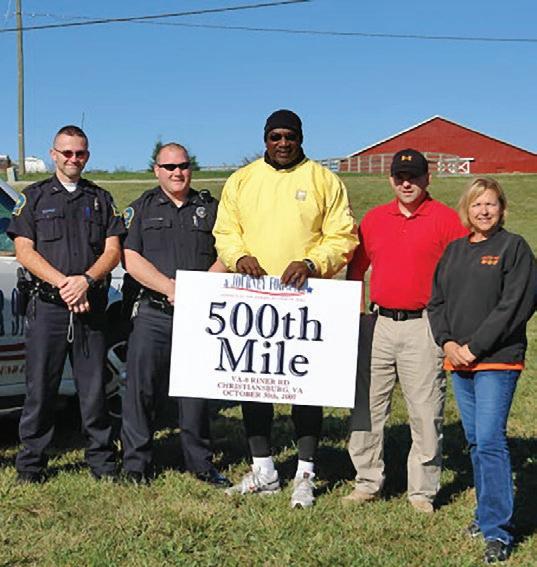
George Martin anchored the New York Giants defense as a defensive end from 1975–88. He served as co-captain of the Giants Super Bowl championship team in 1986, and as president of the National Football League Players Association. Following his football career, Martin became a successful business executive.
Martin lost several friends in the attacks of 9/11 and, in the aftermath, learned of the thousands of rescue and recovery workers suffering health-related illnesses resulting from their service at Ground Zero. In response he founded A Journey for 9/11, a nonprofit initiative to raise awareness and funds for their medical treatment. In September 2007 Martin began a charitable cross-country walk from New York City to San Diego, finishing on June 21, 2008. In total, Martin walked 3,003 miles through 13 states and Washington, D.C., wearing out 27 pairs of sneakers and 413 sets of socks, losing 41 pounds, and gaining countless friends and much support for his initiative. He raised the equivalent of several million dollars in funds and medical monitoring and treatment. Hackensack University Medical Center, North Shore-Long Island Jewish Health Systems, and Mount Sinai Medical Center in New York City matched the financial donations in medical services. Though Martin’s walk is over, his advocacy for the ailing heroes still continues.
Joey Cheek, Olympic gold medalist and active philanthropist, was the first recipient of the Heisman Humanitarian Award. In 2006, after winning the Olympic gold medal in the men’s 500 speed skating, Cheek donated his $25,000 medal bonus to Right to Play, an international humanitarian organization that uses sports to empower children in underprivileged countries. Right To Play programs are implemented in 15 countries throughout the world, using sports to teach children about teamwork, fair play, conflict resolution, self-esteem, communication, commitment, respect, and integrity. Right To Play is committed to improving the lives of children and strengthening their communities by translating the best practices of sport and play into opportunities to promote development, health, and peace. “Elite sport is great, it’s a luxury,” Cheek says. “But play is a necessity. The lessons Right To Play teaches children, they’re necessary for us to have the world we want to live in.”
Cheek also co-founded Team Darfur, with UCLA water polo player Brad Greiner. Team Darfur was an international coalition of athletes committed to raising awareness about the crisis in Darfur, Sudan, which attracted much attention leading up to the 2008 Beijing Olympics.
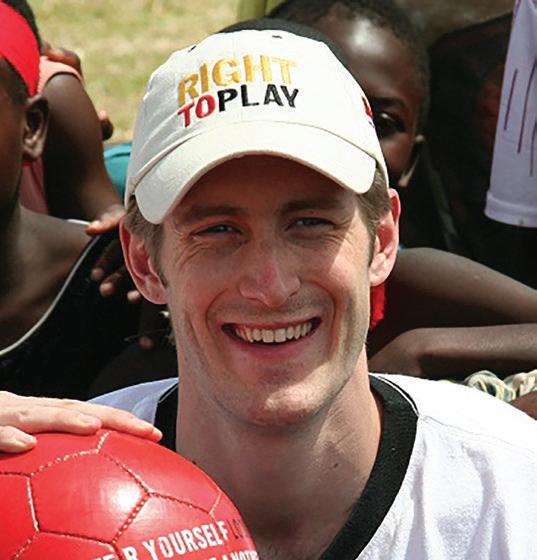

The East Atlanta Kids Club provides high quality, STEAMbased out-of-schooltime programming that meets youth where they are and empowers them to realize their potential.



L.E.A.D. empowers local youth to become the next generation of leaders through lessons learned on the baseball field.
Elevate Your Game Summer Camp and Mentoring Support utilizes sports to help children excel, and at-risk youth break negative cycles to prepare them for greater opportunities.

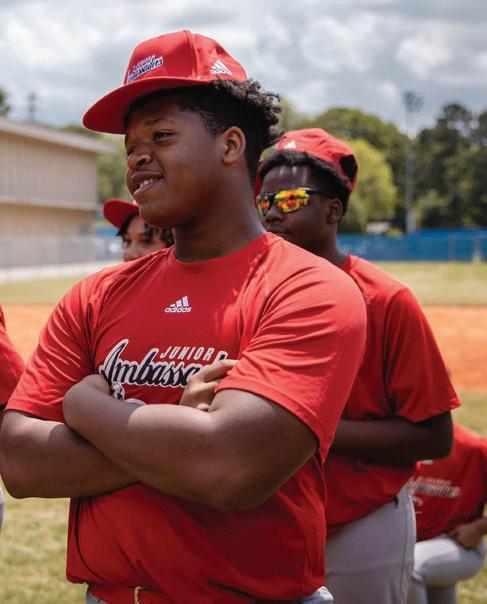
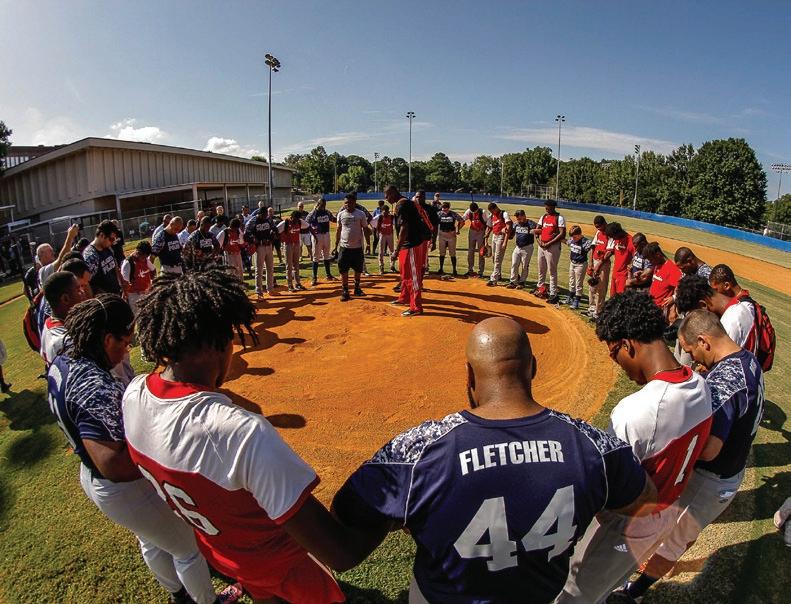
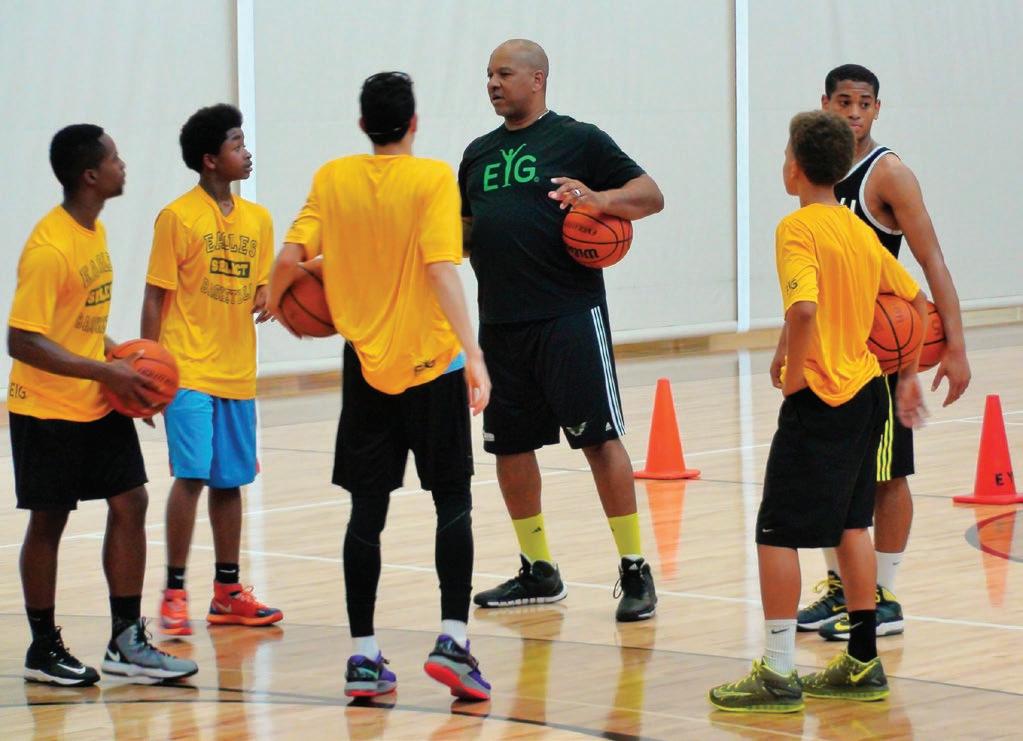
Fugees Family is changing the futures of refugee and immigrant youth by facilitating successful transitions to the American education system leading to a 100% college acceptance rate for their participants.
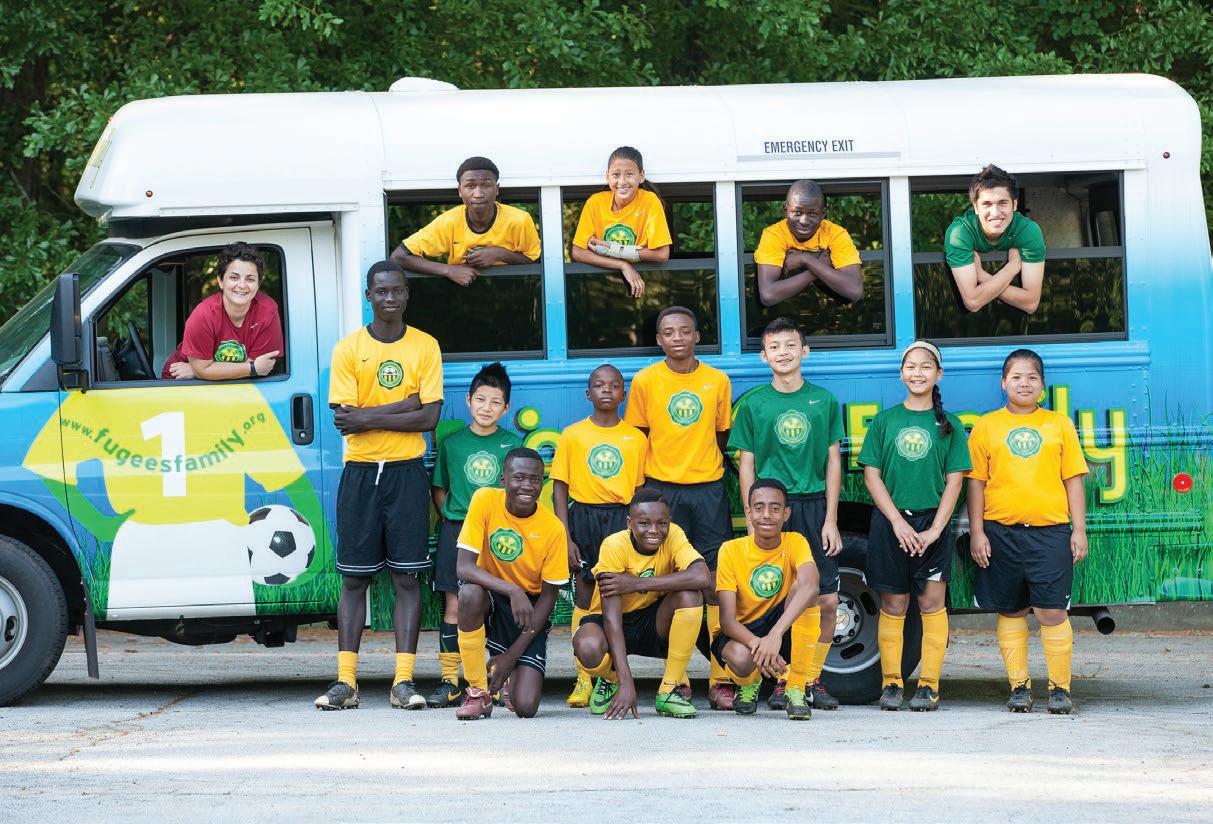
The Heisman Trophy Trust’s mission is to preserve and grow the legacy of the Heisman Memorial Trophy and harness its power to positively impact our country’s youth and provide more equitable opportunities for underserved communities. This year, the trust expanded into two new regions through its support of youth development organizations in Atlanta and Dallas, several of which are highlighted on these pages. By broadening its reach and positively impacting children in these new regions of the country, the Heisman Trophy Trust continues to build on the trophy’s legacy of responsibility and service.
Distinctly His Ministries’ Athletic Summer College Tour provides student athletes the opportunity to visit and meet with college football programs, resulting in university scholarships and athletic team placement.
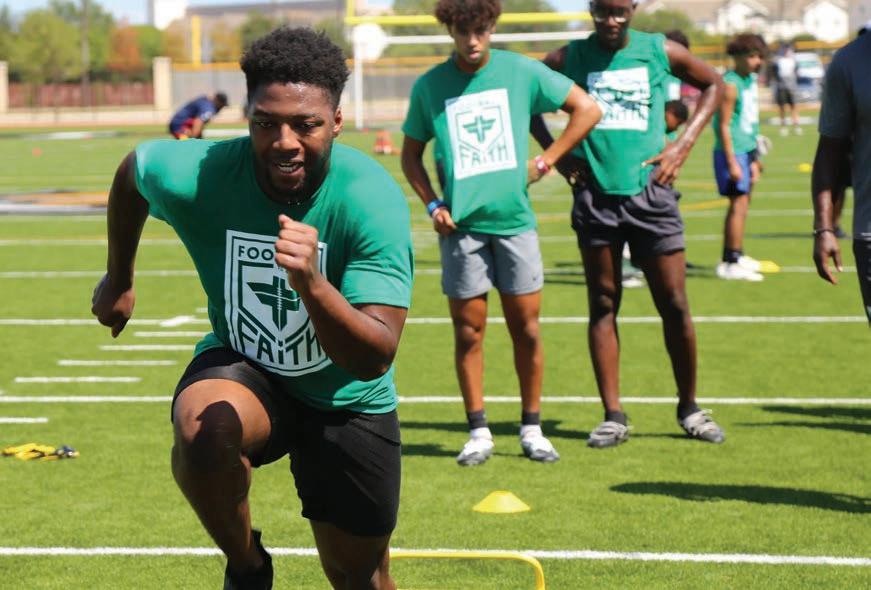
Buckner Children & Family Services’ MLB Youth Academy goes beyond baseball and softball programming to offer athletes and their families mentorship, classes and life skills.
The Boys and Girls Club of Greater Dallas has a legacy of enabling children to reach their full potential through educational and sports programming for teens, in-person and virtually.

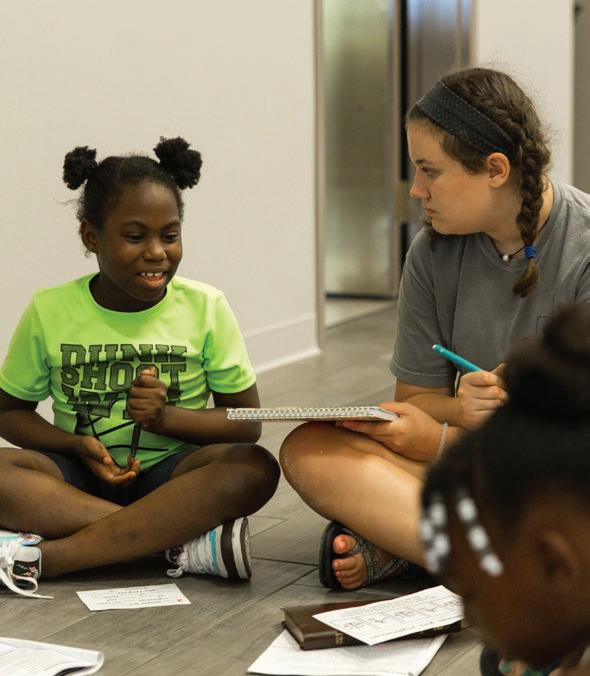

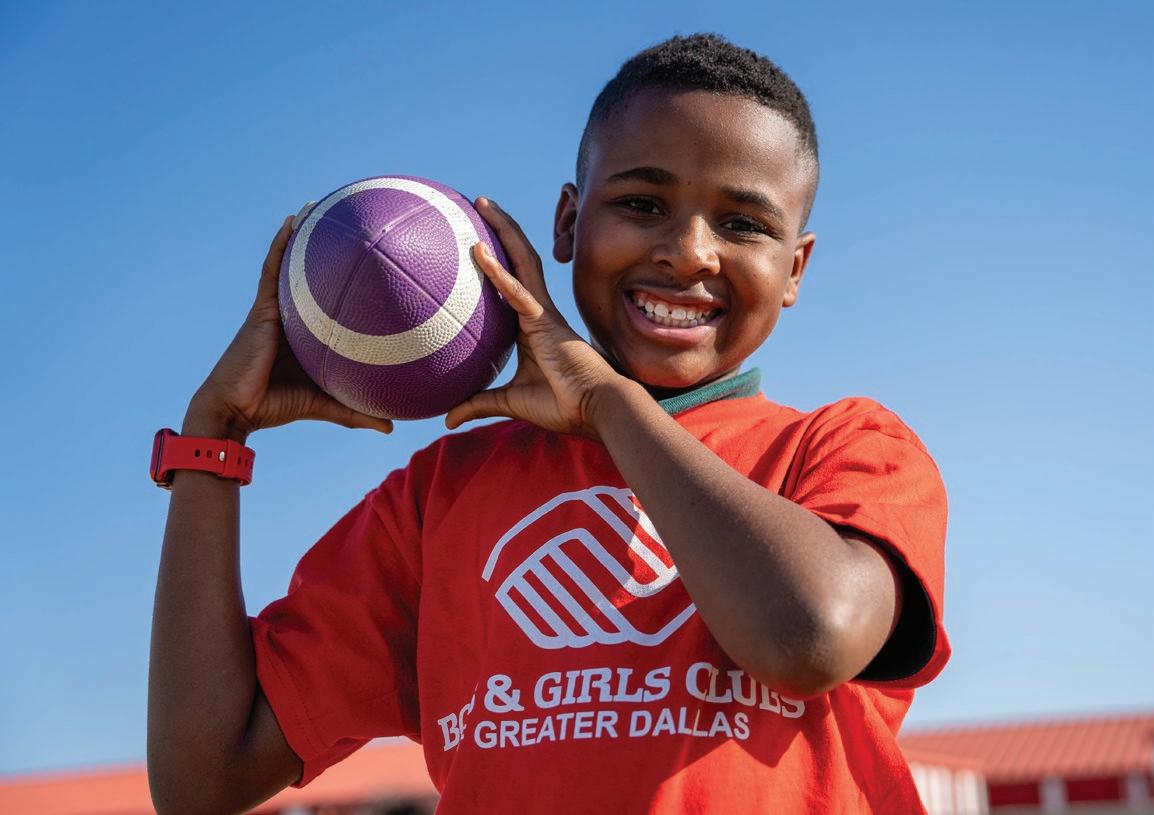
Bridge Lacrosse harnesses the unique benefits of lacrosse to broaden the horizons of under-resourced and urban communities in North Texas.
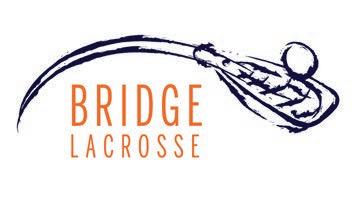

52nd Street Project
A Journey for 9/11
Achilles International
Adaptive Sports Program of Ohio
Alan Ameche Foundation
All Stars Helping Kids
Allies in Service
ALS Therapy Development Institute
Always Dream Foundation America Scores New York
American Cancer Society – Elizabeth, NJ
American Express
American Legion Post #138
American Red Cross
American Red Cross – South Florida Region
American Softball
An Claidheamh Soluis, Inc.
Annapolis Maritime Museum Inc.
Ara Parseghian Foundation
Archie and Bonita Griffin Scholarship Fund
Army Ranger Lead The Way Fund
Athletes & Entertainers for Kids
Athlife Foundation, Inc. – Irvington High School
Believe in Kids Foundation
Beth Israel Medical Center
Big Brothers Big Sisters of Central Minnesota
Big Brothers Big Sisters of Northwest Florida
Big Brothers Big Sisters of NYC
Big Brothers Big Sisters of the Desert BIG Vision Foundation
Billy Sims Foundation Bloomingdale Family Program Bob Woodruff Foundation
Boomer Esiason Foundation Boy Scouts of America – Greenwich Council, CT
Boy Scout Troop 1084
Boys & Girls Club of Alachua County Boys & Girls Club of America
Boys & Girls Club of Brazos Valley Boys & Girls Club of Greater Lowell, Inc
Boys & Girls Club of Newark Boys & Girls Club of Northern Westchester Boys and Girls Club of Paterson and Passaic Boys & Girls Club of South Central Kansas
Boys and Girls Club of St. Joseph Boys Club of New York
Breakthrough Miami, Inc.
Bridge Builders Community Partnership
Broadway Cares
Brooklyn Boatworks
Brooklyn Community Services
Brooklyn Heights Association
Brooklyn Jesuit Prep Brooklyn Youth Sports Club
C2 Mission
Camden Schools Foundation
Cardinal Shehan Center
Catholic Charities, Archdioces of NY (CYO)
Catholic Charities Maine – St. Louis Child Development Center
Cavett Kids Foundation
Center for Children and Families, Inc.
Center for the Homeless
Center for Therapeutic Riding of the East End Cerebral Palsy of Westchester
Cesar & Ilusión Millan Foundation
Chess in the Schools
Child Abuse Prevention Program
Child and Family Services of Newport County
Children’s Cancer Center
Childrens Hospital of New Jersey City Care
City Harvest, Inc. City Meals-On-Wheels
City University of New York
Columbia University Medical Center Committee for SHARC
Common Ground Montgomery Community Foundation of Atlanta Community Foundation of Middle Tennessee, Inc. Community Foundation of Texas Community Funds, Inc
Community Preparatory School
Community Rowing, Inc
Companions in Courage Foundation
Concussion Legacy Foundation (formerly Sports Legacy Institute)
Cooke Center for Learning & Development Cookies for Kids’ Cancer
CoSIDA
Creative Arts Alliance
Cristo Rey New York High School
Curtis Granderson Foundation
Dallas Area Habitat for Humanity
Dancing Classrooms NYC
Dave Thomas Foundation for Adoption
David Robinson Foundation
Dawkins Family Foundation
Desire Street Ministries
Diabetes Research Institute Foundation Dickinson ISD Education Foundation
Disabled and Limbless Veterans, Inc.
Disabled Sports USA Doc Wayne Youth Services DOMUS
Domus Pacis Family Respite Donors Choose
Doug Flutie Jr. Foundation for Autism DREAM (formerly Harlem RBI) Driven Foundation
Dr John E. Upledger Foundation, Inc.
Dynamite Youth Center Foundation, Inc.
East Harlem Tutorial Program
East Hartford Public Schools
East Texas Communities Foundation
Economic Opportunity Program
Elevate New York
Els for Autism
Emerging Scholars Program
Empire Dragon Boat Team - Breast Cancer
Survivors
Epworth Children’s Home
Ernie Els Foundation
Escambia County Public Schools Foundation
Ethos Education Group
Faith & Family Foundation at Wheatland Farms
Family Farms of NE Fla. - The Parent Help Center
FCS Urban Ministries
Feeding America
Fellowship of Christian Athletes, N. Central Fla
Figure Skating in Harlem
First Descents
First Tee of Metro NY
Friends of Glastonbury Sports. Inc.
Friends of Grace Church School
Friends of the Children
FSU Foundation, Inc.
Future Foundations Family Center
Gary Sinise Foundation
G.B. Charities
George Rogers Foundation of the Carolinas
Give and Learn
Give Me A Chance Foundation
Grants-Milan Rotary Foundation Inc.
Green Beret Foundation
Guiding Eyes for the Blind
Habitat for Humanity International
HALOS
Hand in Hand
Harlem Lacrosse and Leadership HBC Foundation Inc
Heroes’ Movement
Herschel’s 34 & Johnson County Class of 1980 Inc.
Hillsborough High School JROTC Program
Holtz Charitable Foundation
Hope Street Kids
Horace Mann
Horizons at the Rumson Country Day School
Hospice Brazos Valley
Hudson County Child Abuse Prevention Center
Hudson River Community Sailing
Hunter College Foundation, Inc.
IMG Student-Athlete Foundation
Independent Group Home Living Program, Inc.
International Rescue Committee
Island Harvest
Israel Community Service Program, Inc.
Jameis Winston’s Dream Forever Foundation
JDRF Minnesota & Dakotas
Jeff Gordon Children’s Foundation
JFCS of the Suncoast, Inc
Joe Burrow Hunger Relief Fund
Joe Torre Safe at Home Foundation
Johnny Rodgers Youth Foundation
Jonathan’s Place
Jordan-Jackson Group Homes
Journey to New Life, Inc.
JSerra Catholic High School
Jubilee Park & Community Center
Judeo Christian Health Clinic
Juvenile Diabetes Research Foundation KIDS, Inc.
Kingston City School District
Koinonia Foster Homes & Family Services
Last Prisoner Project
Leake & Watts Services, Inc.
Lighthouse Tabernacle of 7th Day Adventists –Happy Hearts Summer Day Camp
Loyola High School
LUCY Outreach
LUNGevity Foundation
Lupus Foundation of America Madison4Kids, Inc.
Madison Square Boys & Girls Club
Maine Adaptive Sports & Recreation
Maine-Niles Association of Special Recreation
Manchester Public Schools
Manhattan Youth Recreation & Resources
March of Dimes, Oklahoma Chapter
Marine Corps Scholarship Foundation
Mark E Beban Foundation
The Heisman Trophy Trust has proudly supported the following organizations and their charitable missions.Mark Ingram Foundation
Marquis Studios
Marty Lyons Foundation
Massachusetts Interscholastic Athletic Association
Mater Dei High School
Matt Leinart Foundation
Maumee City Schools
McGuire Memorial Foundation
Melanoma Research Foundation
Memorial Sloan Kettering Mercy Center of the Bronx
Mia Hamm Foundation
Miami Public Schools
Mike Rozier Cancer Foundation
Millard North High School
Minnie’s Food Pantry
Minority Athletes Network Etc., Inc.
Misericordia Home
Molloy College
Monmouth Medical Center Foundation
Monsignor Bonner High School
Motiv8 Foundation Inc.
Mount Sinai Medical Center
Mr Robbins Neighborhood
Muscular Dystrophy Association of LA
Mustang Booster Club
National Football Foundation
National MS Society/Pro Player Foundation
National Theatre Workshop of the Handicapped
NC Governor’s School Foundation
Nebraska Greats Foundation
New Alternatives for Children, Inc.
New Haven Gridiron Club
New Heights Youth
New York City Mission Society
New York Community Trust
New York Foundling
New York Legal Assistance Group
New York-Presbyterian Hospital
North Mianus Bulldogs
NYU Lutheran Medical Center
Ocean Drive Presbyterian Church
Ohio State Alumni Association
Opportunity Knocks
Orange Bowl Committee Foundation
Orange Duffel Bag Initiative
Our Kids of Miami-Dade/Monroe Inc.
Pacific Islands Athletic Alliance
Packer Collegiate Institute
Page Education Foundation
PALS Program
Pathways Home Health & Hospice
Paul Bear Bryant Scholarship Fund
Peter Westbrook Foundation
P.I.L.O.T. Services
Playgrounds For All Kids, Inc.
Point Lookout Little League
Power Play NYC
Prep For Prep
Prestonwood Christian Academy Inc.
Project City Kids
Promote Altruism
PS 130 The Parkside School
Quality Life Center of Southwest Florida Inc.
Recreation Unlimited
Red Hook Initiative
Regional Food Bank of Oklahoma Right To Play
Robert Packard Center for ALS Research at Johns Hopkins
Robert Griffin III Foundation
Rogosin Institute
Ronald McDonald House of Tulsa, Inc.
Roosevelt Union Free School District Row New York
Roy Hill Driven Foundation
Rusty Staub Foundation
Saco Food Pantry, Inc.
Sacred Heart Academy
Saint Andre Home
Saint Anthony’s High School
Saint Camillus School
Salisbury Family Services
Salt Lake Education Foundation
Samford University Athletic Foundation
Satellite Athletic Association
Saving Mothers Say Yes to Education
Scholarship America, Inc. Scholarship Fund of MOAA Schools That Can Sea Haven
Sean Dawkins Memorial Fund
Seton Foundation for Learning Shelter for the Homeless, Inc.
Shepherds Inc.
Sister Visitor Foundation
Sistercare, Inc.
Smilow Cancer Hospital – Yale New Haven Health Snack & Friends
Soccer Without Borders Solo Foundation
South Bronx United South Carolina Coalition Against Domestic Violence and Sexual Assault
Southern Youth Sports Association
Special Friends Foundation, Inc.
Lisa Rispoli, CPA, AEP, TEP
Partner, Trust & Estates Service Leader lrispoli@grassicpas.com
David M. Rottkamp, CPA
Partner, Nonprofit Practice Leader
drottkamp@grassicpas.com

Special Olympics Colorado
Special Olympics Connecticut
Special Olympics South Carolina
Special Olympics Texas
Spin Enterprises
Sports Authority Foundation
Sports Legacy Institute
St. Aedan’s Church, Connecticut
St. Joseph High School
St. Jude Children’s Research Hospital
St. Laurence Church
St. Patrick’s School
St. Raymond School
St. Rose of Lima
St. Vincent de Paul Society
Standing Tall Charitable Foundation
Steve Owens Foundation
Stonehill College – Tim Coughlin Fund
Strang Cancer Prevention Center
Strang Cancer Research Laboratory
StreetSquash, Inc.
Summer on the Hill Program
Summerhill Community Ministries
Support for People with Oral and Head Cancers
Synergy Alternative High School
Tallahassee Community College Foundation
Tamassee DAR School
Taylor Haugen Foundation, Inc.
Team Steady Buckets
TeamMates Mentoring Program
Texas A&M University 12th Man Foundation
The Braxton Miller Foundation
The Louisville Urban League Inc
Thunderbird Clubhouse – Oklahoma
Tim Brown Foundation
Tim Tebow Foundation
Torretta Foundation
Travis Mannion Foundation
Trenton Kappa Foundation
TriArts Sharon Playhouse
Tri-Town Youth Services
Troy Smith Foundation
Trustees University of Pennsylvania
Tuesday’s Children
Tyler Bernstein Memorial Foundation
UAB Comprehensive Cancer Center
United Cerebral Palsy of Greater Hartford (Camp Harkness)
United Cerebral Palsy of New York City
United Negro College Fund
United States Olympic Museum
United Way of Central and Northeastern Connecticut
United Way of Miami-Dade Counties
United Way of the Capital Area, CT
United Ways of Alabama (Bo Jackson’s Bike for Bama) Unleashed
Uplifting Athletes
Urban Promise Trenton
Bridge Golf Foundation
Brooklyn Boatworks
The New York Community Trust was proud to support the following organizations via the Heisman Trophy Fund for Youth Development
Achilles International After-School All-Stars
America Scores New York
American Youth Table Tennis Organization AthLife Foundation
Beat The Streets
Blazin Youth Academy
Boys and Girls Club of Metro Queens Boys & Girls Club of Mount Vernon Boys & Girls Club of Newark Boys and Girls Club of Northern Westchester Boys and Girls Club of the Bellport Area
Brooklyn Youth Sports Club Chess in the Schools CityLax CitySquash City of White Plains Youth Bureau DREAM (formerly Harlem RBI) East Harlem Tutorial Program Economic Opportunity Council of Suffolk County Figure Skating in Harlem First Tee New York Girls on the Run Long Island Girls on the Run NYC
Grenville Baker Boys and Girls Club Harlem Lacrosse and Leadership Hudson River Community Sailing I Challenge Myself
Inspirational Triathlon Racing International KING Kids United Kings County Tennis League
U.S. Naval Academy Foundation
USO
Vail Veterans Program
V Foundation for Cancer Research
VFW Post 4321
Visitation Catholic School
Visitation Parish – St. Vincent de Paul Society
Vista Center
Walter Camp Football Foundation Inc.
Warrick Dunn Family Foundation
Washington HS Quarterback Club
Waterside School
Weill Cornell Medical Center
Wellness in the Schools
Wendy Hilliard Foundation
Westbury Christian School
Western DuPage Special Recreation Foundation
Winchester Sports Foundation
Winterkids Inc.
Wolf Run Village, Inc.
Wounded EOD Warrior Foundation
Wounded Warriors Family Support
Write On Sports
WUCD Education Fund
Wuerffel Trophy, Inc.
Xavier High School
YIVO Institute for Jewish Research
YMCA of Greater NY
Yonkers Partners in Education
Youth Sailing Foundation of Indian River County
Kips Bay Boys and Girls Club
Madison Square Boys & Girls Club
New Heights Youth New Rochelle Basketball Association
Peter Westbrook Foundation Play Rugby USA
Riverside Hawks, Hope, Healthy, and Hoops Rocking the Boat Row New York
South Bronx United Special Olympics New York St. Christopher’s Street Squash Team First, Inc. Trident Swim Foundation
Urban Dove
Vita Sports Partners
Write on Sports YMCA of Long Island
Communities Foundation of Texas: Boys & Girls Club of Greater Dallas supported these new organizations via the Heisman Trophy Fund for Youth Development this year

Bridge Lacrosse
Mercy Street
Boys & Girls Club of Northeast Texas
Commerce Sports League
Buckner Children and Family Services MLB Youth Academy
Distinctly His Ministries
Elevate Your Game Summer Camp
Kernow Storm Futobol Club MetroSoccer Program launch
Community Foundation for Greater Atlanta supported these new organizations via the Heisman Trophy Fund for Youth Development this year
Carrie Steele Pits Home
East Atlanta Kids Club
Fugees Family Inc. Girls on the Run Atlanta
L.E.A.D. Inc.
YMCA of Metro Atlanta
As the tradition of the Heisman Memorial Trophy grows with each passing year, the life of the man memorialized by the award fades into the annals of history. No one more thoroughly studied the dynamics of football or witnessed more closely the game’s evolution. No one personally knew more immortals of the gridiron or effected more change in the game’s development, than John W. Heisman.
Born in Cleveland, Ohio on October 23, 1869, John William Heisman grew up on the oil fields of northwest Pennsylvania, in the town of Titusville. Heisman’s first football games were a hodgepodge of soccer and rugby. In 1887, at age seventeen, he left Titusville for Brown University where he played a form of club football with his classmates. In the fall of 1889, after two years at Brown, he transferred to The University of Pennsylvania to pursue a law degree. Though outsized at 5-foot-8 and 158 pounds, he played varsity football for three years as guard, center, tackle, and sometimes end.
Debilitated after a flash of lightning nearly cost him his eyesight, Heisman took his final exams orally and graduated with his law degree in the spring of 1892. Immediately after college, he got his first coaching job at Oberlin College, leading the team to win all of its seven games in only the second year of the football program. Heisman’s career was launched.
Heisman’s career as a coach developed with stints at Auburn, Clemson, University of Pennsylvania, Washington & Jefferson and Rice. His most impressive coaching reign was with Georgia Tech (1904–1919), where his Golden Tornadoes were a scoring powerhouse with an astounding thirty-three straight wins. Coach Heisman left Georgia Tech after the 1919 season to return as head coach at his alma mater, University of Pennsylvania. After three years he bought out his contract and spent one year at Washington & Jefferson before moving west to Texas and Rice Institute. His coaching career ultimately spanned more than three decades, and in 1927 at age sixty-two, John W. Heisman retired from coaching the game he loved and developed.
In New York, Heisman found more time to write as well as to serve in advisory positions. His articles appeared in publications such as American Liberty and Colliers Magazine, and he also served as football editor for the professional publication Sporting Goods Journal. This prodigious outpouring did not go unnoticed. On May 23, 1930, John W. Heisman was named the first Athletic Director of the Downtown Athletic Club of New York City (DAC). Serving in this capacity, Heisman founded and organized the Touchdown Club of New York, and later the National Football Coaches Association.
At the insistence of the DAC officers, Heisman devised and set in motion the structure and voting system to determine the best collegiate football player in the country. Though initially opposed to pointing out an individual over a team, he ultimately felt it a consummate team accomplishment to have such recognition. The first Downtown Athletic Club Award was given in 1935 to Chicago’s Jay Berwanger. On October 3, 1936, before the second award was bestowed, John W. Heisman succumbed to pneumonia. The officers of the DAC unanimously voted to rename the DAC Award the Heisman Memorial Trophy that year.
During his coaching career, John W. Heisman changed the face of the game that became America’s passion. What he considered his greatest contribution, the forward pass, was legalized in 1906, after three years of writing and pestering Walter Camp and the rules committee. Much of the official rule book of the day adopted Heisman’s suggestions word for word.
Men who respected and called John W. Heisman friend included coaches Robert C. Zuppke of Illinois, Fielding Yost of Michigan, Amos A. Stagg of Chicago, Dr. J.W. Wilce of the Ohio State University, D.X. Bible of Texas A&M, legendary sportswriter Grantland Rice, golf’s first Grand Slam winner Robert Jones Jr., and former teammate and Honorable Mayor of Philadelphia Harry A. Mackey. As did his life touch many, the spirit of his character continues to inspire the best in those who would receive his Memorial.
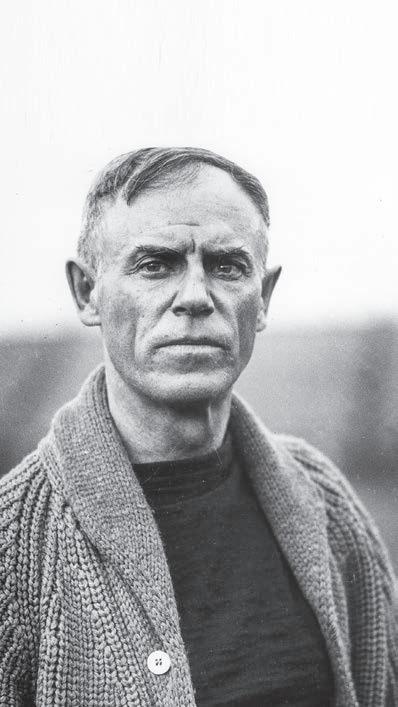
From the book, Heisman, the Man Behind the Trophy by John M. Heisman and Mark Schlabach, published by Howard Books a division of Simon & Schuster (2013). It is used by permission of the author, and is not for copy, reproduction or republication except by expressed written consent of the author, John M. Heisman.

Nearly a century ago, college football established that it was here to stay. As fanfare increased around the sport and its popularity spread, the Downtown Athletic Club (DAC), renowned for its devotion to sports, decided that it was time to honor outstanding college football players. The DAC appointed a Club Trophy Committee to present the first annual award at the end of the 1935 football season in the Club’s headquarters in southern Manhattan. That first award—initially named the DAC Trophy—was presented on December 9, 1935 to Jay Berwanger, a triple-threat cyclone and legendary “one-man-gang” in the University of Chicago’s backfield. With the creation of the trophy, the DAC recognized the promise and enormous legacy of college football, and had the foresight to institute one of the first, and now most sought-after, awards in American sports.
In 1936, following the death of legendary player and coach John W. Heisman, the trophy was renamed in appreciation of his inventiveness and contribution to football strategy. Recognizing the role a school plays in a player’s success, the Heisman Trophy Committee voted to award two trophies each year—one presented to the college football player, and the second awarded to his school. In the decades since it was created, the Heisman Memorial Trophy has become more than an award: its bestowal is a defining moment in the career of a college football player, when he is invited to join the ranks of the elite fraternity of Heisman Trophy winners. To this day, the Trophy remains a national symbol of collegiate football experience, prowess, and competitiveness, awarded annually to an athlete designated as the Outstanding College Football Player in the United States.
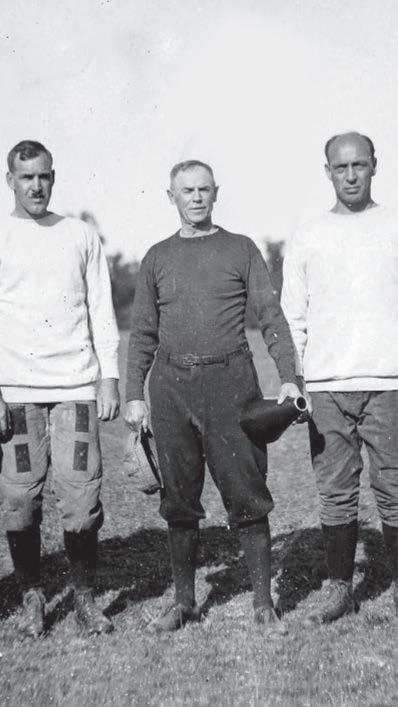

Before the now-famous stiff-arm design, the Club Trophy Committee agreed that the traditional cup or bowl seemed too commonplace, lacking in distinction, and not emblematic of the athletic talent that was to be celebrated. It was decided instead that the trophy should be the bronze embodiment of a muscular footballer driving for yardage. To create the trophy, the DAC commissioned Frank Eliscu, a well-known sculptor and National Academy of Design Prize winner. Eliscu chose Ed Smith, a leading player on the 1934 New York University football team as his primary model. He prepared a rough clay study that was sanctioned by the DAC Committee, and sent it uptown for approval by the head football coach at Fordham University, Jim Crowley, one of the legendary Four Horsemen of Notre Dame. The prototype was set up on a field, and Crowley’s players were asked to assume various positions to illustrate and verify the sidestep, the forward drive, and a strong right-arm thrust. Eliscu closely observed these actions and modified his clay prototype. The result was a truly lifelike simulation of a player in action, which was then duplicated in plaster—a preliminary step towards its ultimate production in bronze.
A final inspection of the cast was made after dinner at the McAlpin Hotel on November 16, 1935. The dinner was attended by Coach Elmer Layden (another member of the Four Horsemen) and the Notre Dame football team who had just played in a memorable 6-6 tie game with Army in front of 78,114 fans. Layden and the Fighting Irish squad were impressed by the animated realism of Eliscu’s model—especially noted by Wally Fromhart, Don Elser, and Wayne Millner—and that evening the team put its seal of approval on the new trophy.
While the task of designating the Outstanding College Football Player of the year was daunting, a more crucial decision was choosing the group who would select him. A panel of electors was chosen, consisting of informed, capable, and impartial sports journalists from all across the country.
The Heisman Trophy Trust governs the policies and procedures of the balloting process. A multitiered system was established, and still serves as the framework that distributes the group of electors proportionally across the United States. Six Sectional Representatives are responsible for the appointment of the State Representatives. State Representatives select the voters within their particular state, with the number of votes dependent on the population and the number of media outlets within the state. The Sectional and State Representatives are listed on page 42. Each section has 145 media votes, for a total of 870 media votes across the country. Additionally, every former Heisman winner has a vote and, in 1999, a program was introduced allowing the public to become part of the balloting process by making one fan vote eligible in the overall tabulation. This program continues in part thanks to the Heisman’s partnership with Nissan.
The ballot includes space for an elector to nominate three individuals for the Heisman Trophy; a first, second, and third choice must be indicated on each ballot. The first choice on a ballot receives three points in the overall tabulation; the second choice receives two points; and the third choice receives one point. The Heisman Committee created this point system in an effort to eliminate sectional favoritism. The ballots state that “in order that there will be no misunderstanding regarding the eligibility of a candidate, the recipient of the award MUST be a bona fide student of an accredited college or university, including the United States Academies. The recipients must be in compliance with the bylaws defining an NCAA student athlete.”
Independent accounting firm Deloitte is responsible for distributing the ballots and voting instructions, and tabulating the results. Since 2002, electors have been able to securely submit their ballots to Deloitte online. Deloitte tallies the votes according to the point system outlined above and the individual with the most overall points receives the Heisman Trophy. The 2022 Heisman ballots were distributed on November 28 and were due back to Deloitte by December 5 at 5:00pm EST. There were 929 votes for 2022.
A Heisman finalist is an active college football player who receives an invitation to attend the annual Heisman
ceremony held in New York City each December. The finalists are announced on the Monday before the televised Heisman Trophy Ceremony. Prior to 1982, only the winner of the Heisman was invited to New York, so there were no ‘Heisman finalists’. Beginning in 1982, multiple candidates were invited to take part in the live television show that accompanied the announcement of the winner. Herschel Walker, John Elway and Eric Dickerson were the first Heisman finalists, though Elway did not attend that year’s event.
Beginning in 2021, the Heisman Trophy Trust officially invites four finalists to New York City for the Heisman Trophy Weekend. In years prior, the number of finalists varied. There were always at least three finalists invited in a given year and the total rose to as high as eight in 1989 (though only four actually attended). Since 1982, the most common total to have been invited was five (11 times), followed by four (10 times) and three (nine times). In 1994 and 2013, there were six finalists invited to the ceremony and there has never been more than six finalists to actually attend a ceremony.
As of 2021, the four invited Heisman finalists are determined as the four individuals that receive the most votes. Prior to 2021, the determination of the finalists were one of the most misunderstood parts of the Heisman process. One might hear media or fans complain that a certain player was snubbed by not being invited to the Heisman ceremony, but the finalists were not determined arbitrarily.
Starting from the understanding that there was always a minimum of three finalists, the invitation of more finalists was determined by how close the succeeding points totals were to each other. A large gap in points would trigger a cutoff. For instance, in the 2008 Heisman vote, Florida’s Tim Tebow finished third with 1,575 points. In fourth place, Graham Harrell of Texas Tech totaled only 213 points and, because of the huge gap between those totals, he was not invited to the ceremony. In 2010, Kellen Moore’s fourth place finish of 635 points brought him much closer to LaMichael James’ thirdplace finish of 916, so Moore was included as one of the four finalists. The fifth-place finisher, Justin Blackmon of Oklahoma State, had just 105 points. There was a clear demarcation of support between him and Moore, so the 2010 finalists were capped at four.
From 1935 through 1976, early each December, the winning player was brought to New York City, along with his coach and dignitaries from his university. There, in a special convocation of past and current football luminaries, and with press, radio, and TV coverage, the player was crowned as the Heisman Trophy winner. A week
or so later the winner was further honored at a large, formal dinner in New York to which all former Heisman winners were invited. At this gala banquet, replete with renowned personalities in sports, entertainment, and politics, the actual award was presented, with appropriate remarks from the winner and his coach.
Until 1973, this gala dinner was held at the Downtown Athletic Club. By 1973, the event’s popularity outgrew the DAC facilities, and it was moved to the Grand Ballroom of the New York Hilton, where it remained until 1986. But even the Grand Ballroom of the New York Hilton was unable to accommodate the many fans that regarded the Heisman Trophy as the most prestigious and coveted individual collegiate athletic award in America. A Heisman winner instantly becomes a hero to millions of football devotees.
Until 1976, the Heisman Trophy had been a local New York affair that was only modestly publicized. In response to hundreds of letters and strong urging by the DAC members, the Officers and Governors of the Downtown Athletic Club, together with the Trophy Committee, decided that the Heisman Award was indeed an event of great interest to many people outside the Club. They decided the ceremony deserved a far wider audience and in 1977, the President of the DAC and the Heisman Committee decided to present the award as part of an hour-long, primetime television spectacular. The program was designed to enhance the prestige of the Downtown Athletic Club and the Heisman Trophy, while bringing an exciting new sports television special to viewers. The Heisman Trophy winner was announced at the dinner, along with six other outstanding players meriting special DAC Awards that recognized the vital importance of linemen and defensive units. These winners received a distinctive, modern crystal sculpture created for the DAC by Tiffany & Co.

The following year, the DAC returned to the traditional format of announcing and presenting the Heisman winner. At that time, Pannell Kerr Forster tallied the balloting for the awards. The DAC was notified of the Heisman results on November 28, and the media was informed of the winner at a press conference that day. In order to maintain some element of suspense, the winners of the other six DAC Awards were revealed at the Heisman Dinner and Presentation that was held on December 7. They would be the last group so honored; in 1979 the Heisman Committee decided to discontinue the six special DAC Awards and only give out the Heisman Memorial Trophy.
Since 1980, the winner of the Heisman Trophy has traditionally been announced on the second Saturday in December, with the Presentation Dinner Gala being held the following Monday evening. The award was announced annually through 2000 at the Downtown
Athletic Club. Following the tragic events of September 11, 2001, the presentation was moved to the New York Marriott Marquis in 2001, and then to the Yale Club of NYC in 2002–03. In 2004, the announcement was held at the New York Hilton and in 2005 it was moved to the Nokia Theatre in the center of the Broadway Theater district in Times Square. The Theater was renamed from the Nokia Theatre, to the Best Buy Theater and ultimately to the PlayStation Theater, during the Heisman’s tenure there until 2019.
Due to the impact of COVID-19, there were no in-person events in 2020. Instead, the 2020 Heisman Memorial Trophy announcement was broadcast live on ESPN from the ESPN Studios in Bristol, Connecticut, with each of the finalists participating via satellite from their respective schools. Beginning in 2021, the Heisman Trophy announcement returned in-person at an exciting new NYC venue, Jazz at Lincoln Center.
FAR WEST — Robert S. Hammond
Laramie Boomerang/WyoSports.net | Laramie, WY
SOUTHWEST — Dave Campbell (1925–2021) Waco Tribune-Herald | Waco, TX
MIDWEST — Bob Hammel
Bloomington News Bloomington, Indiana
SOUTH — Lee Corso
ESPN | Orlando, Florida
NORTHEAST — Don Criqui CBS Sports | New York, NY
MID ATLANTIC — Dick Weiss
Blue Star Media/NY Daily News | Philadelphia, PA
ALABAMA
Jon Johnson
Dothan Eagle
ARIZONA Greg Hansen Arizona Daily Star
ARKANSAS
Bob Holt
Arkansas Democrat Gazette
CALIFORNIA
Jon Wilner San Jose Mercury News
COLORADO Randy Holtz
Freelance Writer
CONNECTICUT Sean Barker Hearst Connecticut Media
DELAWARE Kevin Tresolini News Journal delawareonline.com
DISTRICT OF COLUMBIA
Christine Brennan USA Today
FLORIDA
Mike Bianchi
Orlando Sentinel
GEORGIA
Marc Weiszer
Athens Banner-Herald
HAWAII
Paul Arnett
Honolulu Star-Advertiser
IDAHO
Dave Tester
Tester Broadcasting
ILLINOIS
Bob Asmussen Champaign News-Gazette
INDIANA
Bob Hammel Bloomington News
IOWA Randy Peterson Des Moines Register
KANSAS Kellis Robinett Wichita Eagle
KENTUCKY John Clay Lexington Herald Leader

LOUISIANA Scott Rabalais The Advocate
MAINE Dave Eid WGME TV

MARYLAND Heather Dinich ESPN.com
MASSACHUSETTS
Mark Blaudschun
TMG College Sports
MICHIGAN Jack Ebling Ebling Media
MINNESOTA Chip Scoggins
Minneapolis Star Tribune
MISSISSIPPI
Parrish Alford
Northeast Mississippi Daily Journal
MISSOURI
Dave Matter St. Louis Post-Dispatch
MONTANA Greg Rachac Montana Television Network
NEBRASKA Mike Babcock Freelance Writer
NEVADA Ed Graney Las Vegas Review-Journal
NEW HAMPSHIRE Roger Brown Union Leader
NEW JERSEY Brian Fronseca NJ Advance Media Star Ledger
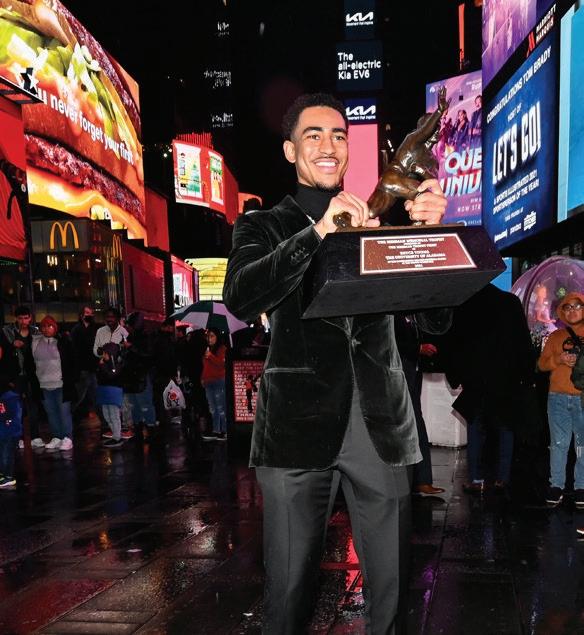
NEW MEXICO Randy Harrison Albuquerque Journal
NEW YORK CITY Kelly Whiteside USA Today
NEW YORK STATE Nate Mink Syracuse.com
NORTH CAROLINA Sammy Batten Fayetteville (N.C.) Observer
NORTH DAKOTA Abe Winter The Bismarck Tribune
OHIO Bruce Hooley PressProsMagazine.com
OKLAHOMA John Hoover Sports Illustrated Sooners
OREGON Gary Horowitz KBZY Radio
PENNSYLVANIA Dave Jones Harrisburg Patriot-News
SOUTH CAROLINA Gene Sapakoff The Post & Courier
SOUTH DAKOTA James Cimburek Press & Dakotan
TENNESSEE Jimmy Hyams WNML Radio Knoxville
TEXAS Robert Cessna The Eagle
UTAH Wesley Ruff KTVX - Channel 4
VERMONT Alex Abrami Burlington Free Press
VIRGINIA David Teel Richmond Times-Dispatch
WASHINGTON Dave Mahler KJR Radio
WEST VIRGINIA Michael Casazza CBS Interactive/247Sports
WISCONSIN Jim Polzin Wisconsin State Journal
WYOMING Reece Monaco KFBC Radio
1. 2021 Heisman finalists visit Rockefeller Center with ESPN’s Holly Rowe. 2. Finalists Aidan Hutchinson, CJ Stroud, and Bryce Young. 3. Finalists Aidan Hutchinson, Kenny Pickett, CJ Stroud, and Bryce Young prior to the announcement. 4. Pitt players: Tony Dorsett (‘76) and Finalist Kenny Pickett. 5. The 2021 announcement at Jazz at Lincoln Center. 6. 2021 Heisman Winner Bryce Young with Alabama Head Coach Nick Saban. 7. Young takes his Heisman to Times Square. 8. Chris Fowler leads the ESPN broadcast. 9. 2021 Heisman Winner Bryce Young poses with his parents and Coach Saban.
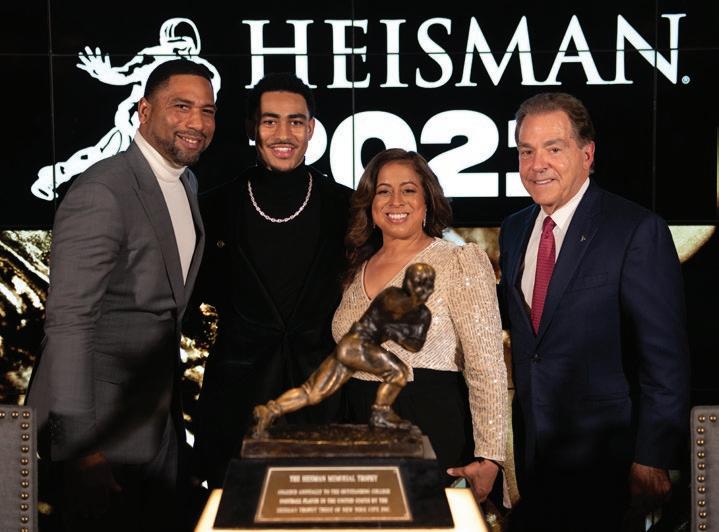
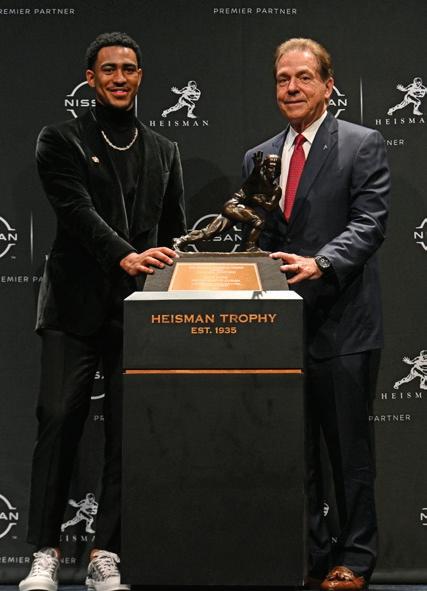



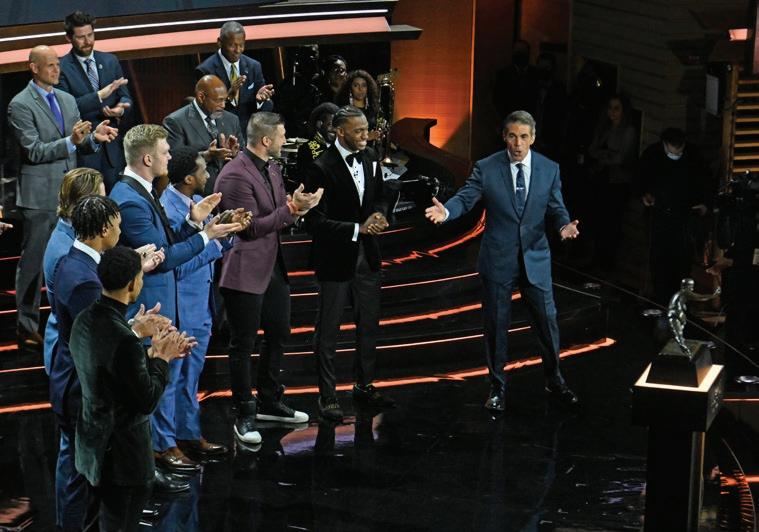
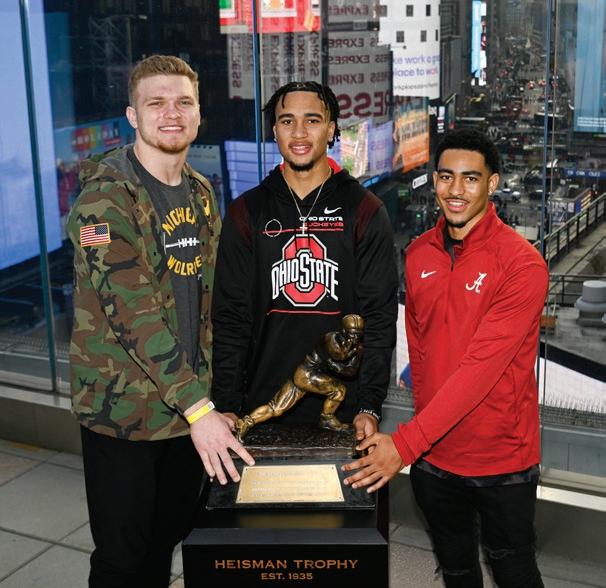



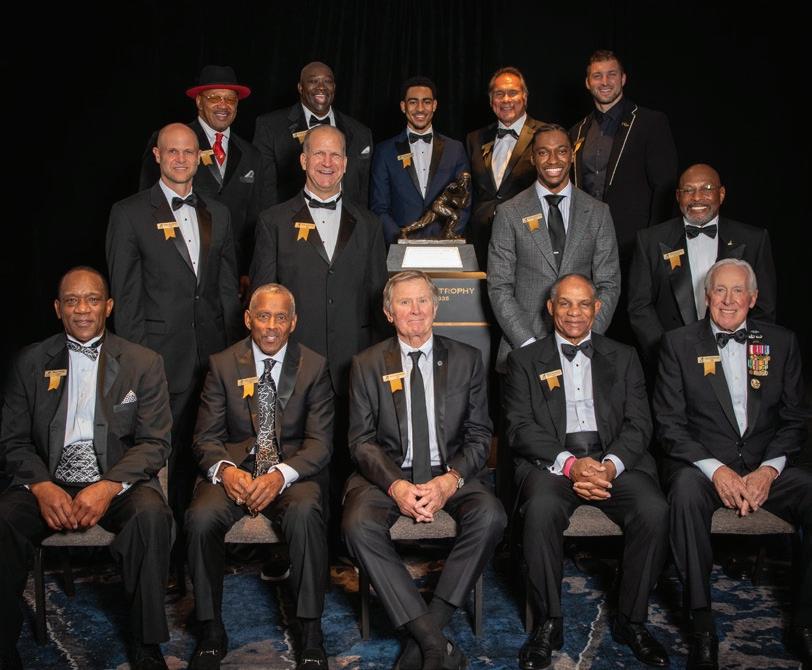
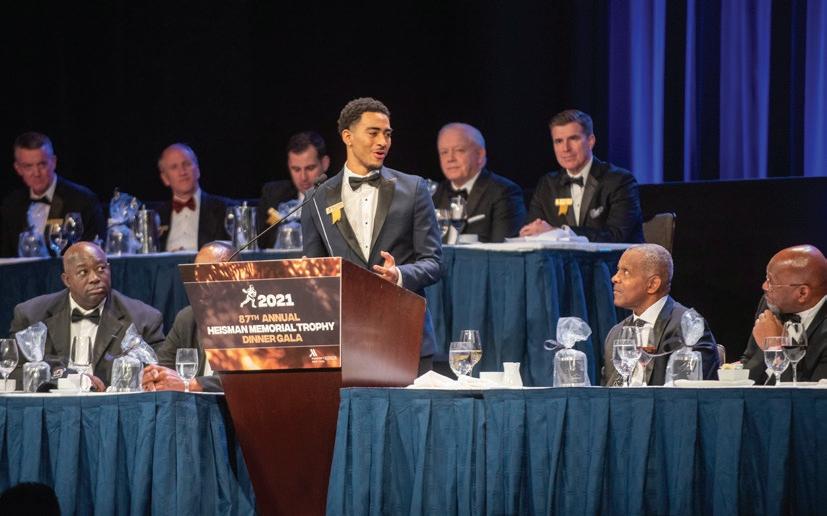




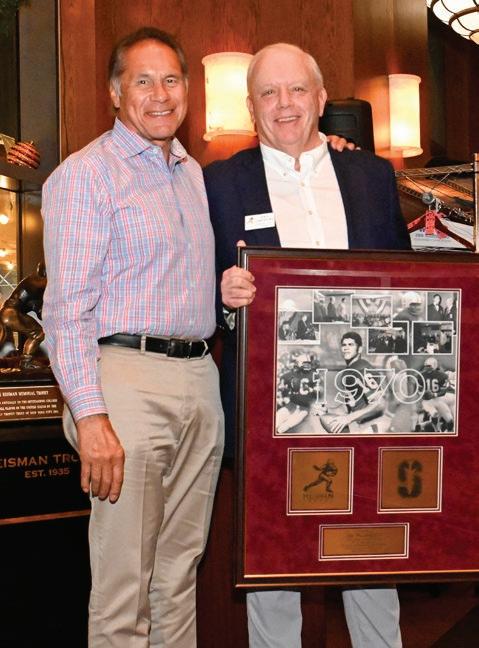

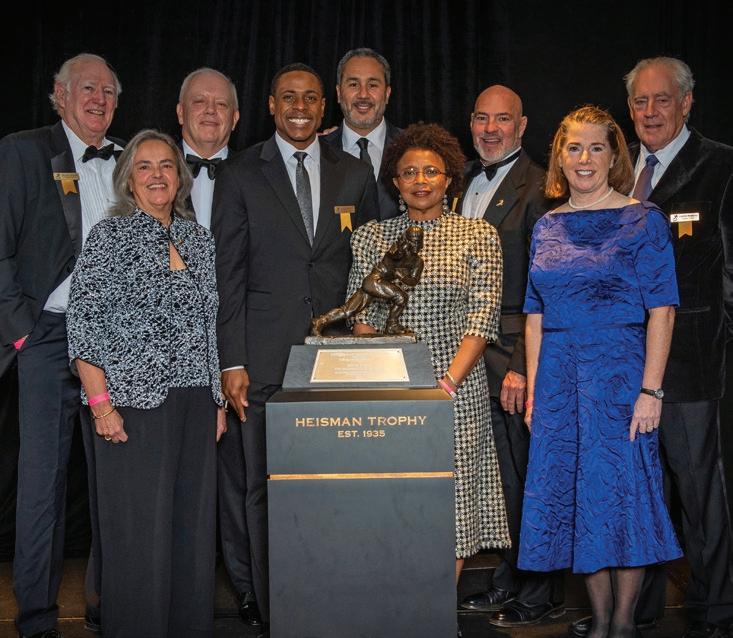



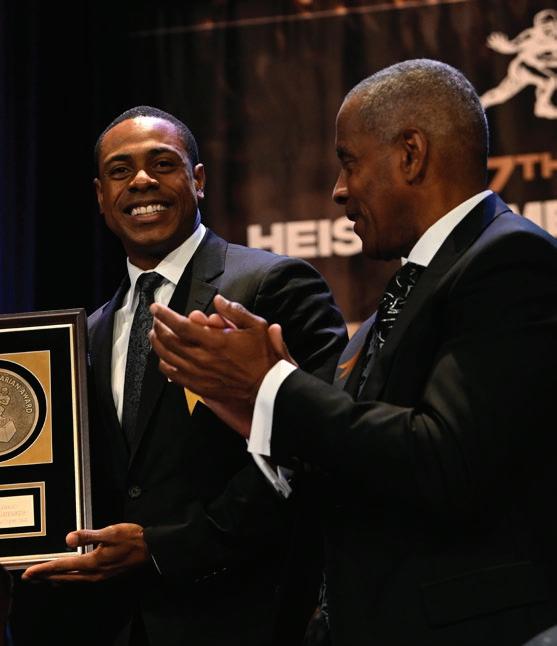
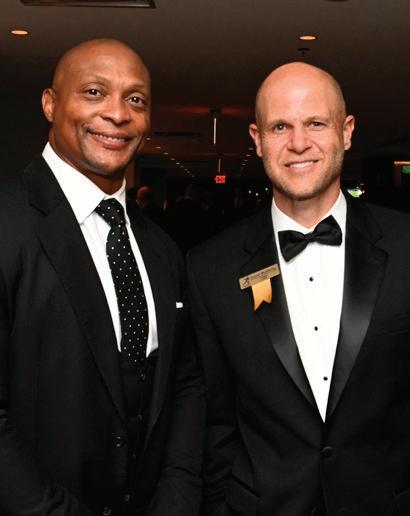

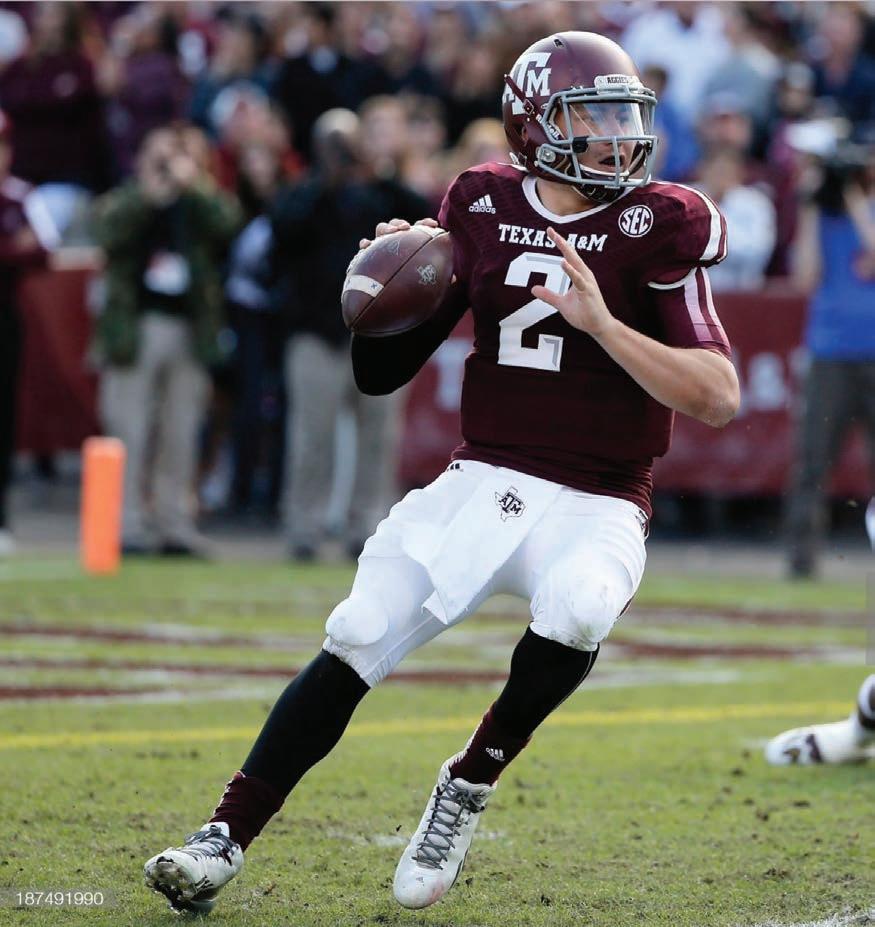

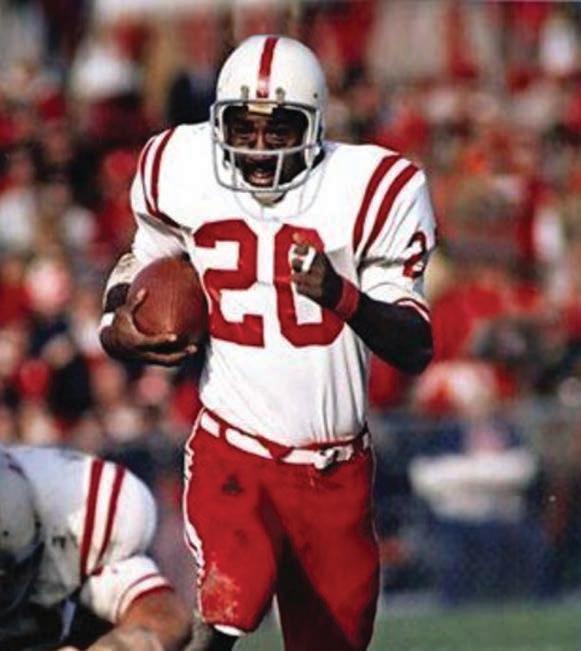



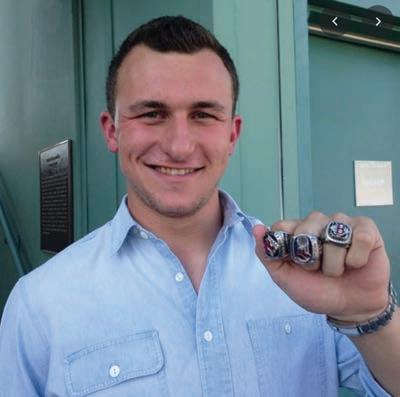
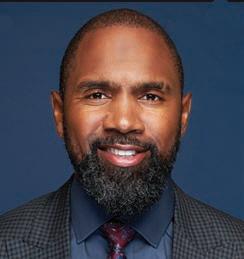






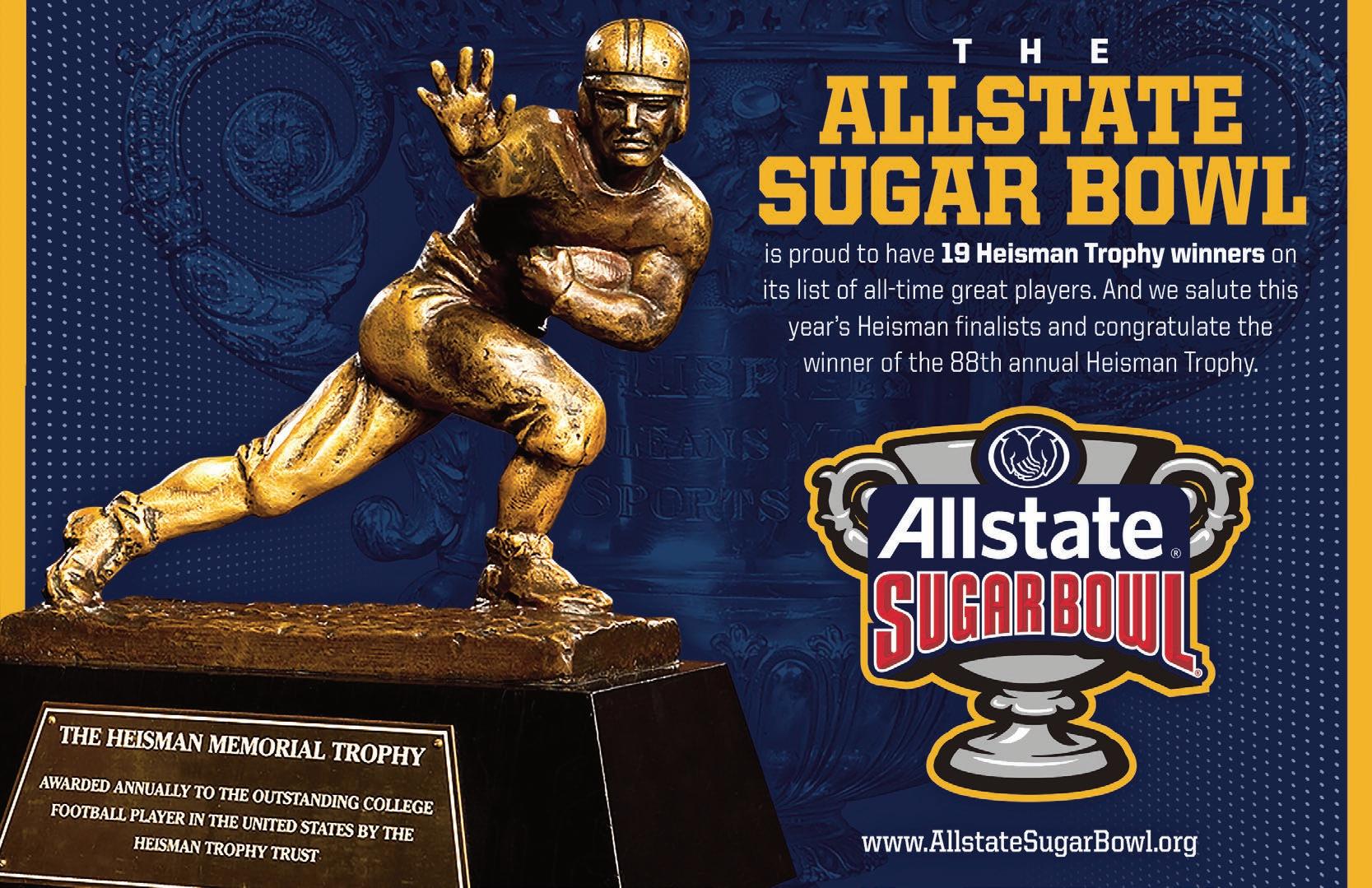




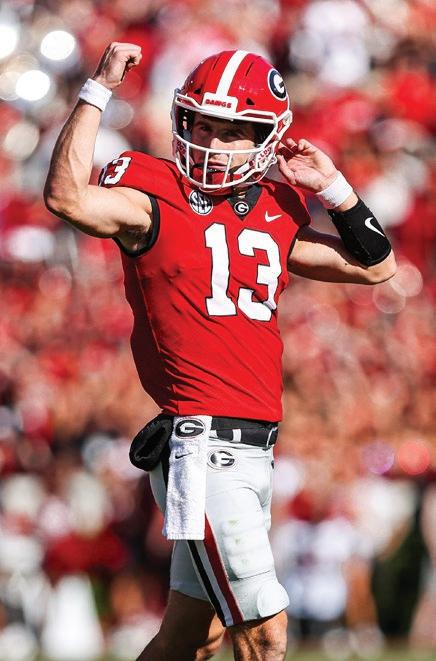

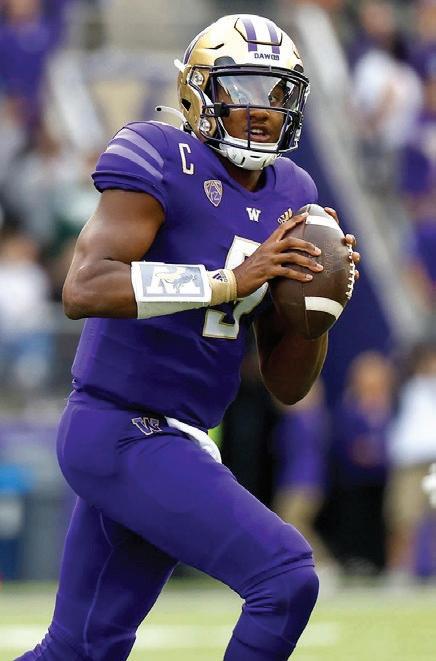


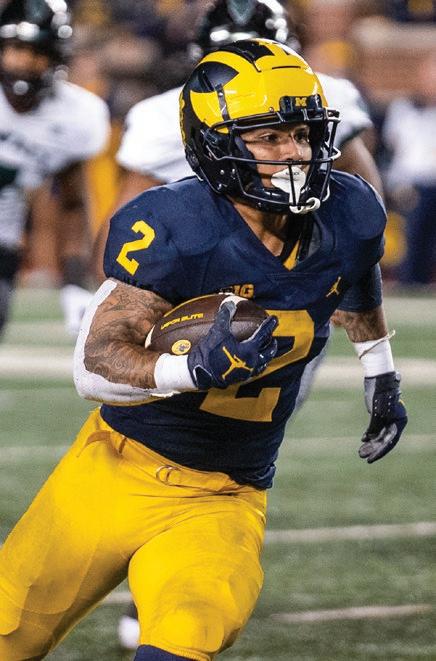
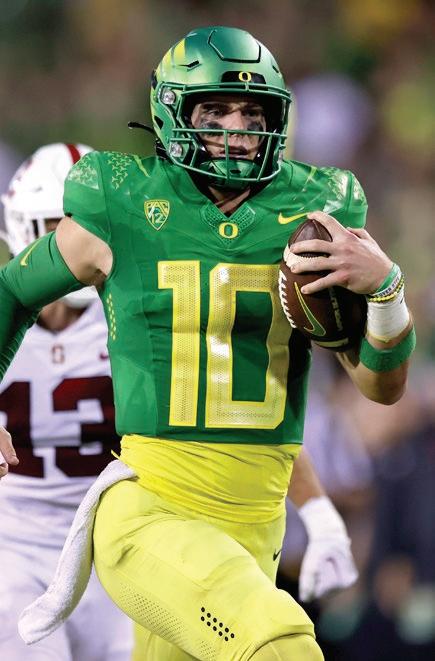


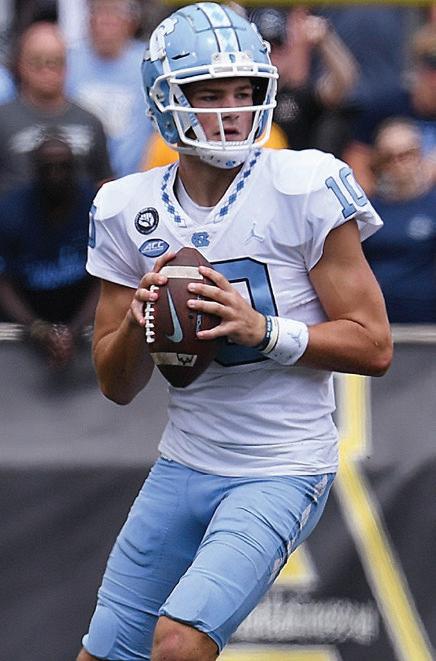
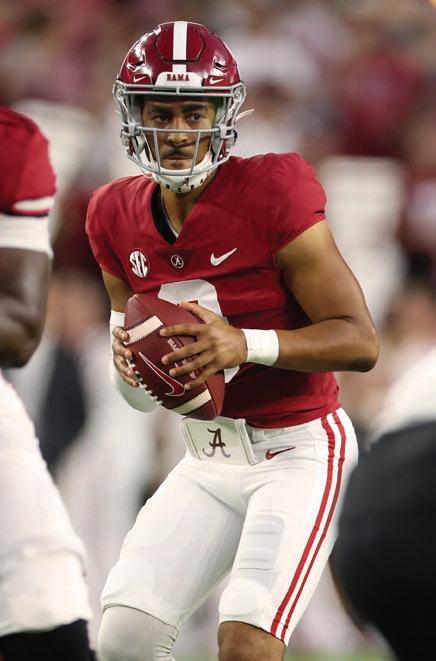

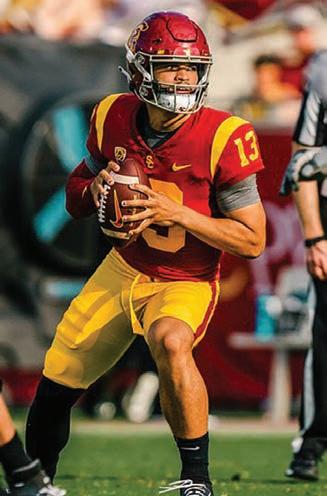
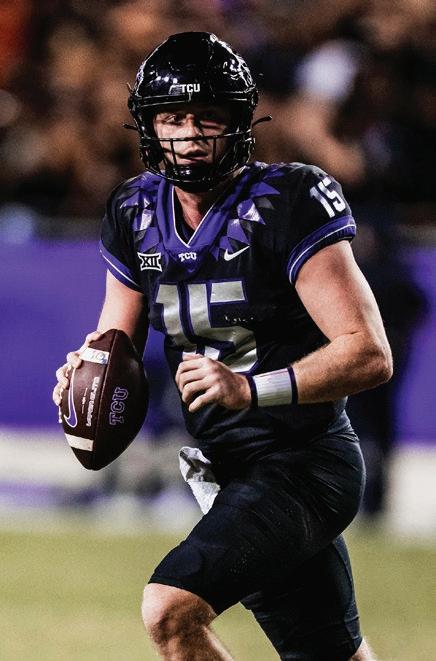
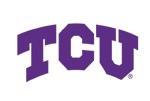

As the exclusive manufacturer and supplier of the Heisman Trophy and Heisman Ring, Jostens is honored to partner with the Heisman Trust for the 88th celebration of this iconic award.




Rece Davis, Master of Ceremonies and Host of ESPN’s College GameDay NATIONAL ANTHEM
Performed by Lessie Vonner, Will Wells and the Whole Team Winnin’

REFLECTION Danny Wuerffel 1996 Heisman Trophy winner
ANNOUNCEMENTS Michael J. Comerford Heisman Trophy Trust President More Than A Trophy Video
HEISMAN HUMANITARIAN AWARD
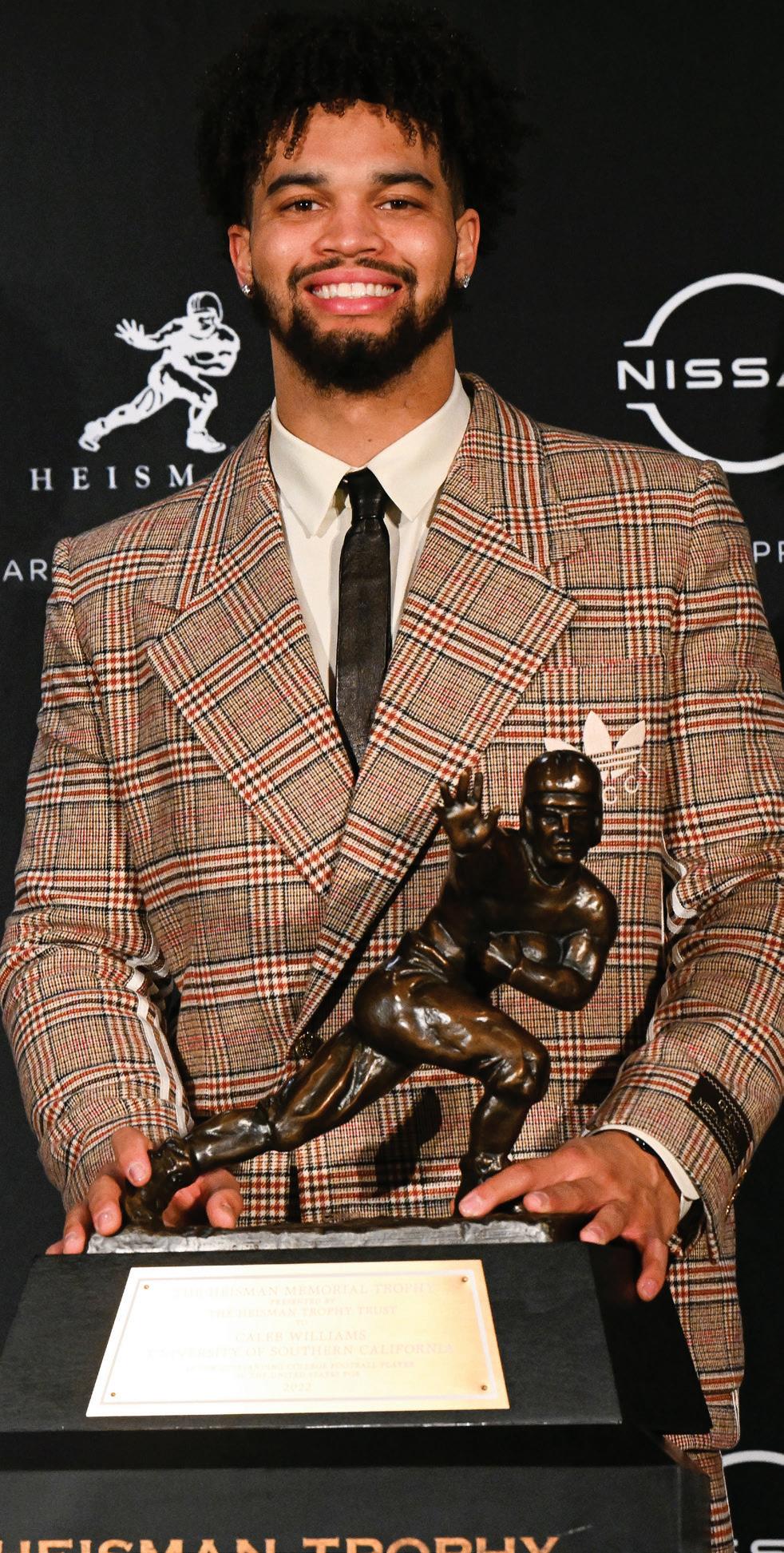
Introduction by Brian Obergfell Heisman Trophy Trustee Heisman Humanitarian Video
MIKE KRZYZEWSKI “COACH K” 2022 Heisman Humanitarian Award Recipient 2022 Heisman Trophy Trust Charity Video
DINNER Raffle and Silent Auction Winners Announced JOHNNY MANZIEL: 10TH ANNIVERSARY 2012 Heisman Trophy Winner Ring Presentation CHARLES WOODSON: 25TH ANNIVERSARY 1997 Heisman Trophy Winner JOHNNY RODGERS: 50TH ANNIVERSARY 1972 Heisman Trophy Winner DIGNITARIES ON BEHALF OF UNIVERSITY OF SOUTHERN CALIFORNIA Mike Bohn, Director of Athletics Lincoln Riley, Head Football Coach
PRESENTATION OF THE 88TH ANNUAL HEISMAN MEMORIAL TROPHY Michael J. Comerford Heisman Trophy Trust President
CALEB WILLIAMS 2022 Heisman Memorial Trophy Winner Acceptance of Trophy Will Wells and the Whole Team Winnin’ will provide tonight’s musical accompaniment.


The late John McKay, the legendary USC Head Football Coach from 1960 to 1975 who won four National Championships, coined that sentiment during his incredible coaching career. McKay passed in 2001 before he had the opportunity to watch Caleb Williams quarterback the Trojans. But had he had the chance, he may have come to the conclusion that there’s an exception to every rule and that Williams would be able to duplicate the impossible.
Caleb Williams, the 2022 Heisman Memorial Trophy Winner, often left opposing defenses and teams stunned by his abilities. Game after game, those impossible runs or impossible throws were being made time and time again by Williams, who burst onto the scene with the Oklahoma Sooners in 2021, before transferring to USC this year.
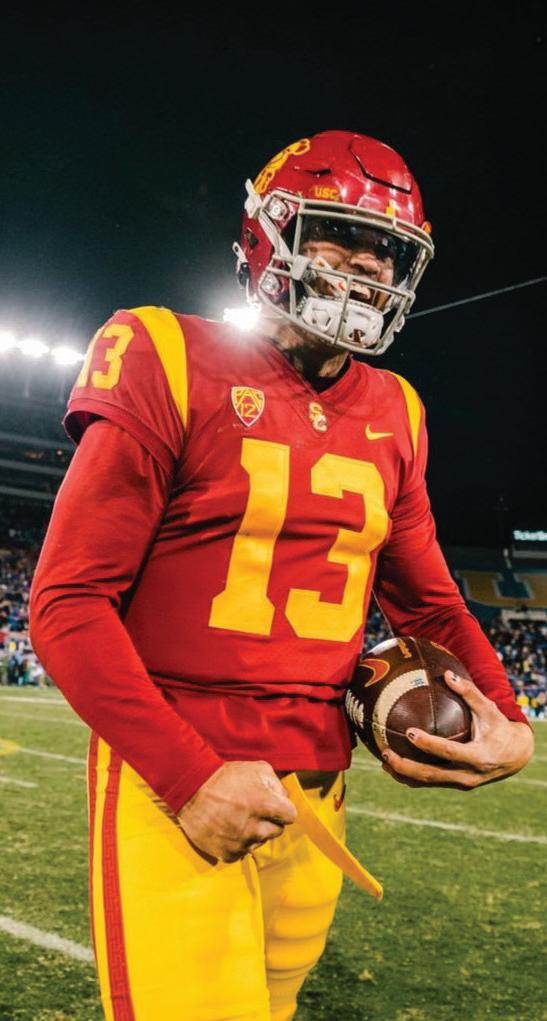

Leading up to the season Williams had written out a series of goals and dreams. Winning the Heisman was on the list. In accepting the award, Caleb acknowledged the work put in, the sacrifices made by family and the support of coaches, teammates, and his parents. It is that combination that enabled Williams to raise the bar for what he could achieve.
Lincoln Riley, USC’s Head Coach shared during the 2022 season “the worst thing you can ever do is put limits on what you can accomplish.”

Caleb Williams had no limits and kept pushing those impossible boundaries. Among the 448 pass attempts en route to completing 4075 yards and 37 touchdowns were his 21 yard touchdown strike to Jordan Addison to win
by Brian Dombrowski“The only problem with doing the impossible is that everybody expects you to duplicate the impossible”
at Oregon State; a no look touchdown pass to Austin Jones in a win against Colorado; and a 20 yard strike to Kyle Ford against rival UCLA with multiple defenders in pursuit, to name a few of those impossible throws.
Williams’s running and scrambling ability also became a weekly highlight reel as he finished the season with 372 rushing yards and 10 touchdowns. While the statbooks will officially list 372 rushing yards from scrimmage, Williams’s impossible runs were often twice as far as the record books indicate, as he would often scramble while avoiding pressure. Perhaps no run epitomized this more— and may go down in history as his ‘Heisman’ moment—than his 19 yard run in the 3rd quarter against Notre Dame. By backpedaling, spinning out of the grasp of multiple defensive backs and then cutting across the field, Williams’s actual distance covered was over 80 yards. Williams and the USC Trojans would earn a victory against Notre Dame on that November night with Williams throwing for over 230 yards and rushing for 35.

That Williams had his ‘Heisman’ moment and game against Notre Dame nearly 20 years to the day that Carson Palmer, USC’s first Heisman winning quarterback and 5th winner overall, had his against Notre Dame may be coincidence. But it may also be fate that Williams was born less than 2 weeks before Palmer led USC to that victory over the Fighting Irish.
On November 18th, 2002 a new USC legend was born in Washington DC. Across the country, on November 30th, Carson Palmer led the Trojans to a win over Notre Dame. Palmer hoisted the Heisman trophy on December 13, 2002.
Twenty years later, on November 26th, 2022, Williams led USC to victory against Notre Dame and on December 10th, 2022, Caleb Williams was named the 88th Heisman Memorial Trophy winner, following a season in which he knew no limits, duplicated the impossible, and made a dream come true.
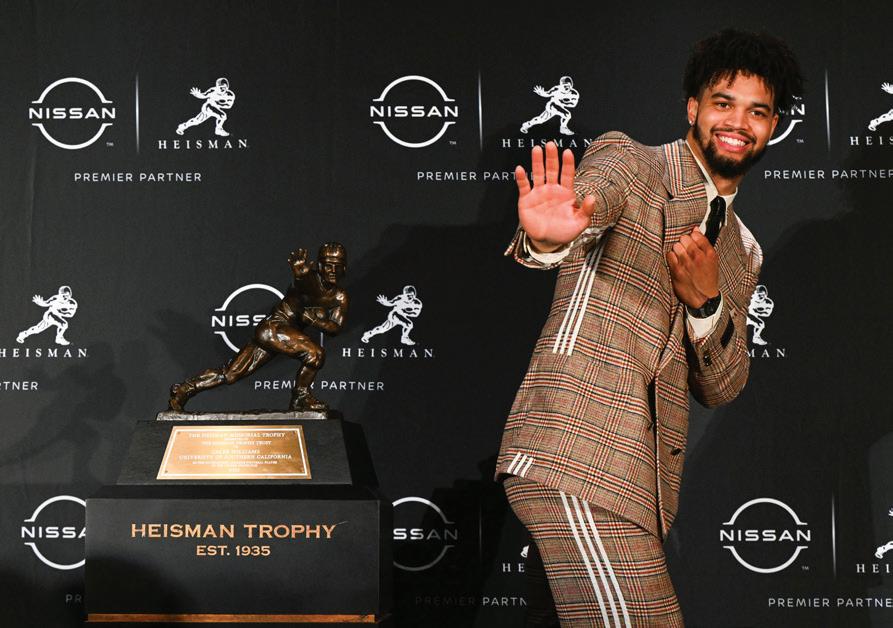
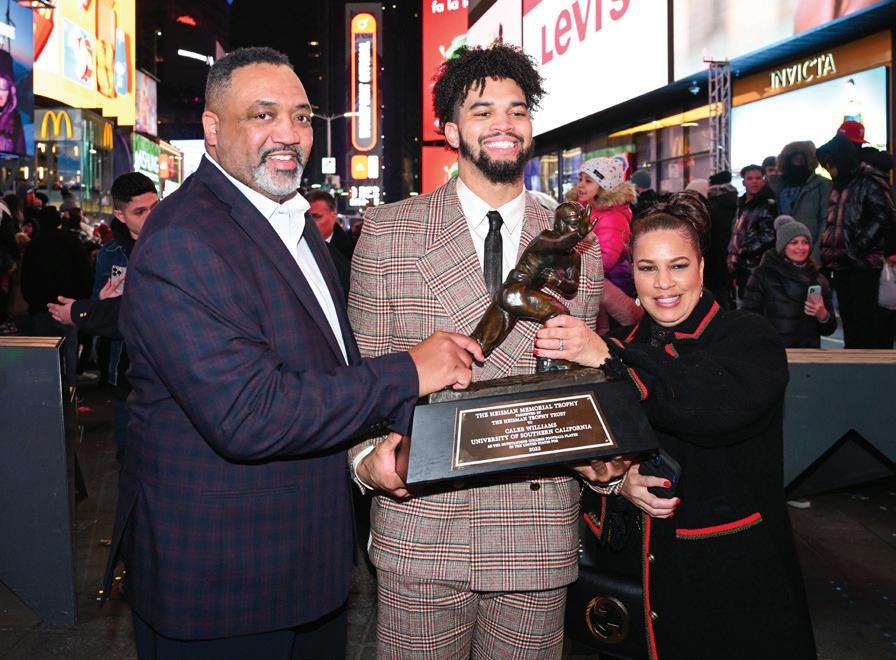
WELCOME
If you found all the Heisman Trophies from the front page, you’re ready for more Heisman fun. Scan the code to enter the house with the most thrills or go to NissanUSA.com/Heisman to learn more about the All-New, All-Electric Nissan ARIYA.

 PREMIER PARTNER
PREMIER PARTNER
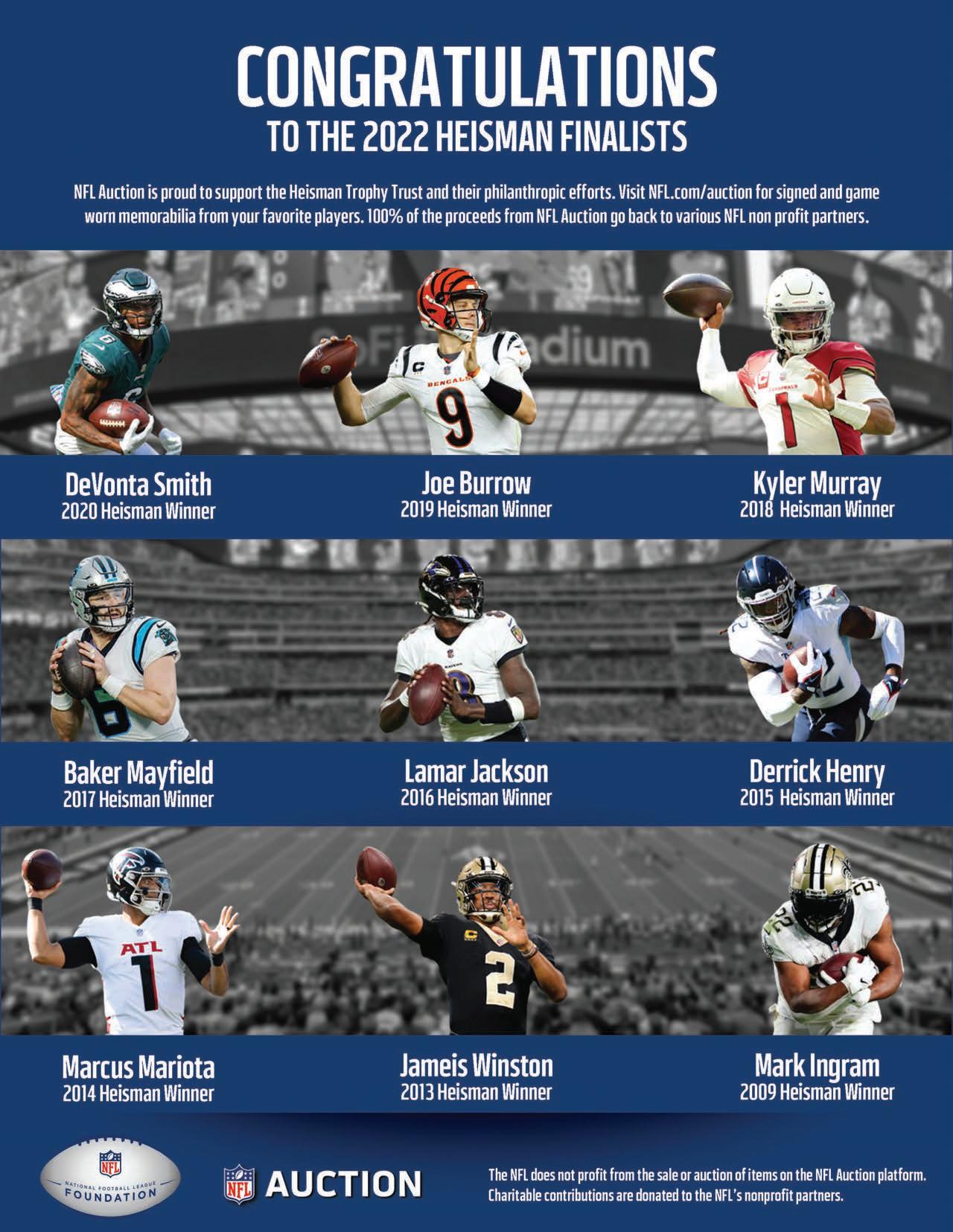
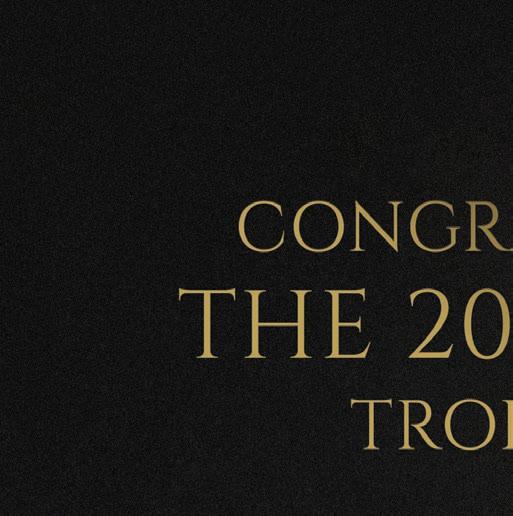






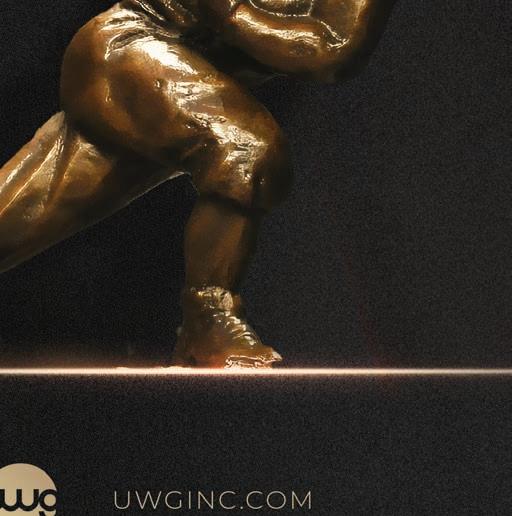

In twenty-three games for the Maroons, Chicago’s “one-man gang” gained more than a mile from scrimmage—a net yardage of 1,839, or an average of 4.19 for 439 attempts. Jay completed 50 of 146 passes for 921 yards, scored 22 touchdowns, and booted 20 extra points for a total of 152 points. He averaged 46.3 yards on 34 kickoffs and 38 yards on 233 punts. After graduation, Jay went into sales for a sponge rubber manufacturer in Chicago. Enlisting in the Navy Air in 1942, he spent most of the war teaching instrument flying. In September 1945, he started his own manufacturing business and split his time between Oak Brook, Illinois, and Manzanillo, Mexico. He passed away on June 26, 2002. Jay Berwanger was elected to the National Football Foundation and College Hall of Fame in 1954.


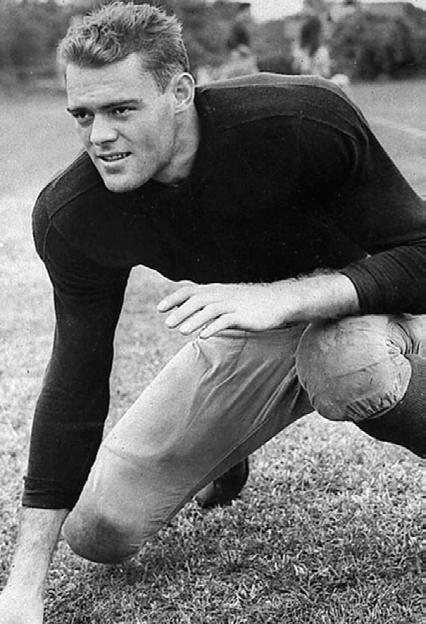
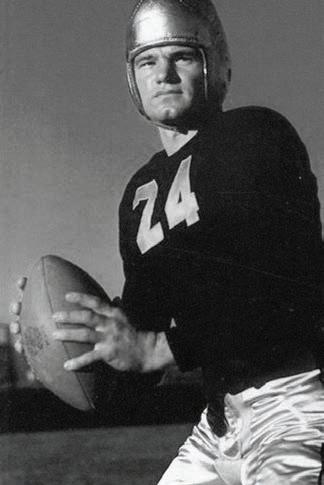

Berwanger, Chicago
Monk Meyer, Army
William Shakespeare, Notre Dame
Pepper Constable, Princeton
Against the Bulldogs’ traditional rivals, Harvard and Princeton, Larry scored at least once in every game. The first end to win the Heisman, his sensational pass-catching accounted for 15 Yale touchdowns, and he was a defensive giant. In his sophomore year, the rangy 6-foot-1 end brought Princeton’s long string of victories to a close when he caught a pass on the tips of his fingers and defeated the Tigers, 7-0. After Yale, Larry went into education, teaching and coaching until World War II. After the war, he tried his hand at the “cold, tough, business world,” and did well. The

field of secondary education however beckoned again and he joined the faculty of the Peddie School in New Jersey as a teacher, coach, and administrator. He passed away on June 27, 2000. Larry Kelley was elected to the National Football Foundation and College Hall of Fame in 1969.
1 Larry Kelley, Yale


2 Sam Francis, Nebraska
3 Ray Buivid, Marquette
4 Sammy Baugh, Texas Christian
5 Clinton Frank, Yale
the gridiron greats, he holds the all-time college record—at 400—for most rushing and passing plays in one season. A good runner and punter, he was an outstanding selector of plays and was the first Heisman winner to emerge from the Southwest Conference. After a brilliant 15-7 Sugar Bowl victory over Carnegie Tech, in which he kicked a field goal and threw a touchdown pass, the Philadelphia Eagles recruited him with a $12,000 bonus and a two-year contract. In his first season, Davey passed for 1,324 yards, breaking Sammy Baugh’s record. In his second season, he completed a still unchallenged record of 33 out of 60 passes against the Redskins. Davey retired to become an FBI agent and following that stint in the early ’50s, changed course to become a business executive. He passed away on November 18, 1977. Davey O’Brien was elected to the National Football Foundation and College Hall of Fame in 1955.
Clint was the Bulldogs’ No. 1 hero for three years, along with Larry Kelley, and was “the best back Yale ever had,” according to veteran coach Earl “Greasy” Neale. Twice All-American and Yale’s captain, he gained a mile and a quarter on the gridiron for the team in rushing and passing. As a ball carrier, his power and 10-second, 100-yard-dash speed combined to make him a constant threat. After college, armed with a degree in economics, Clint tackled the expanding field of advertising, joining Blackett-Sample-Hummert in Chicago. He then served for five years in the Air Force under General Doolittle, fighting in bomber groups in Italy, Africa, and England. In 1949 he formed his own advertising agency, which was sold in 1976 to Interpublic in New York. Clint became Chairman of Bridlewood Corporation, a private holding corporation in Chicago, and was Vice Chairman of the Board of Trustees of the Brain Research Foundation of Chicago, and Trustee of the Schepens Eye Research Institute of Boston. He was the National Football Hall of Fame’s 1988 Gold Medal Recipient. He passed away in July of 1992. Clinton Frank was elected to the National Football Foundation and College Hall of Fame in 1955.
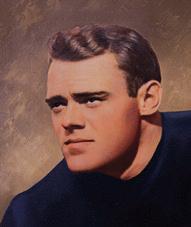
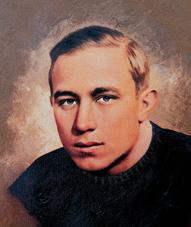
Clinton Frank, Yale
Byron White, Colorado
Marshall Goldberg, Pittsburgh
Alex Wojciechowicz, Fordham
Joe Kilgrow, Alabama
1938
This 5-foot-5, 140-pounder sparked Texas Christian to an undefeated season his senior year. Davey threw 194 passes, completed 110 for 1,733 yards, and 19 touchdowns. One of
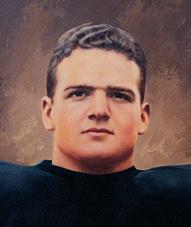
1 Davey O’Brien, Texas Christian 2 Marshall Goldberg, Pittsburgh 3 Sid Luckman, Columbia 4 Bob MacLeod, Dartmouth 5 Vic Bottari, California
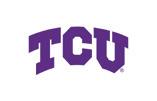
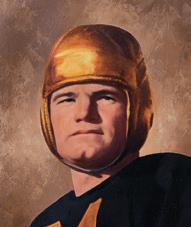

Nile, the Hawkeyes’ greatest player, gained 1,674 yards in his football career. In his senior year, he completed 31 passes for 638 yards, 11 for touchdowns. His 106 rushes netted 374 yards, and his 71 punts over three years were good for 2,834 yards—an average of 39.9 yards per kick. His return of kickoffs and punts totaled 604 yards, and he made 11 of his 17 drop kick attempts. In his acceptance speech at the Heisman dinner, Nile reflected the prevailing isolationist mood of the country, saying that he thanked God he had been born in America, “where they have football fields instead of in Europe, where they have battlefields.” And he added that he knew, “the football players of this country had rather battle for such medals as the Heisman Trophy rather than for such medals as the Croix de Guerre and the Iron Cross.” During World War II, Nile was a pilot attached to an aircraft carrier in the Caribbean. In June 1943, he crashlanded his fighter in the sea and was killed in action. Nile Kinnick was elected to the National Football Foundation and College Hall of Fame in 1951.

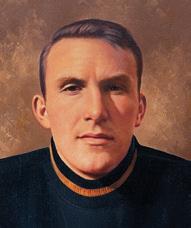
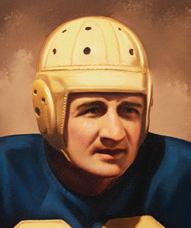

In his three seasons, “Old Ninety-Eight” scored 33 touchdowns, kicked 2 field goals, kicked 33 points after touchdowns for 237 points, and threw 16 touchdown passes. He gained 3,438 yards rushing and passing, and played almost every minute of his three-year career. A solid 193 pounds, Tom was a power runner noted for his cut-backs through tackle—often seen on the field with his jersey ripped by tacklers unable to hold on to him. He was probably the finest ball carrier in the country in his time.
After a four-year stint as a pilot during World War II (for which he earned a Silver Star and the Purple Heart), he married actress Elyse Knox and played for the Los Angeles Rams in 1947–48. Tom’s subsequent career in broadcasting proved as successful, if not more, than his time spent on the field. In 1949, after two posts as Sports Director of WJR in Detroit and commentator on KIEV in Glendale, he became Sports Director of the Columbia Pacific Network, managing daily radio and television shows. Tom reported live on major sporting events from the Olympics to the Rose Bowl for CBS, ABC, and NBC, to name just a fraction of his 10,000 broadcasts. Until Tom’s passing in March 1990, he was broadcasting the Los Angeles Raiders football games. Tom Harmon was elected to the National Football Foundation and College Hall of Fame in 1954. Balloting 1 Tom Harmon, Michigan 2 John Kimbrough, Texas A&M 3 George Franck, Minnesota 4 Frankie Albert, Stanford 5 Paul Christman, Missouri

Bruce received his Heisman two days after the bombing of Pearl Harbor. The marquee triple-threat tailback of his era, Smith epitomized the single-wing offense and could seemingly do it all. Although over 200 pounds, he was one of the Big Ten Conference’s fastest men. In 1941, he led the Gophers to their second consecutive undefeated season and national championship. After graduation, the All-American halfback earned MVP honors in the College All-Star game against the Chicago Bears. The next year, before going off to fight in WWII, Smith went to Hollywood and starred in the movie Smith of
Minnesota, about a small-town family whose son becomes an All-American halfback. Smith went on to become a Navy fighter pilot, and also played service football for the Great Lake Navy team. Returning home in 1945, he signed with the Green Bay Packers and later the Los Angeles Rams. He played for four years in the NFL but injuries prevented him from performing up to his collegiate standards. In 1947, he nearly died when he ruptured a kidney during a Chicago Bears game. He retired at the young age of 29, moving back to his hometown to raise a family. Sadly, Smith was diagnosed with cancer in the spring of 1967 and died of the disease later that year. Bruce Smith was elected to the National Football Foundation and College Hall of Fame in 1972 and, in 1977, became the first Minnesota player to have his number (54) retired.

1 Bruce Smith, Minnesota 2 Angelo Bertelli, Notre Dame 3 Frankie Albert, Stanford 4 Frank Sinkwich, Georgia 5 Bill Dudley, Virginia

Frank was in a Marine uniform when he accepted his Heisman Trophy. He passed for 2,331 yards during his college career, and still holds the Orange Bowl total offense record—382 yards rushing and passing. His 13 passes for 243 yards and 3 touchdowns, and 139 rushing yards including a 43-yard TD run, totaling 382 yards, is still regarded as the greatest performance in any Orange Bowl Classic. Frank played several seasons in professional football, and coached at the University of Tampa in Florida for the 1950–51 seasons. He then entered the wholesale beer distribution business in Asheville, North Carolina, Athens and Gainesville, Georgia, and was elected President of the Georgia Beer Wholesalers in 1977. Frank was a member of the University of Georgia President’s Club, Outstanding Alumni, and a member of the Athens Country Club and Chamber of Commerce. He passed away on October 22, 1990. Frank Sinkwich was elected to the National Football Foundation and College Hall of Fame in 1954.
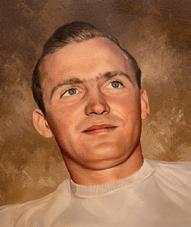
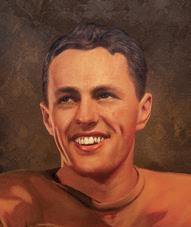
1 Frank Sinkwich, Georgia
2 Paul Governali, Columbia
3 Clint Castleberry, Georgia
4 Mike Holovak, Boston College 5 Bill Hillenbrand, Indiana
Angelo made the T-Formation click for the Fighting Irish until his entry into the Marine Corps in 1943. He completed 169 of 324 passes in twenty-six games, accounting for 2,582 yards; 29 of those completions were for touchdowns. In his senior year, his team averaged more than 40 points a game. His legerdemain with the football, and capacity for the big play, gripped the attention of football fans and sportswriters alike. Grantland Rice called Angelo a great passer and a T-Formation magician. Frank Leahy, in his book The T-Formation, called Angelo “The man around whom we built all our hopes and dreams when we shifted into the T in 1942. He more than lived up to our highest expectations as he led Notre Dame to their many successful years with the T.” Angelo saw action as a Marine officer in Iwo Jima and Guam. He and his wife, Jill, have four children and five grandchildren. He passed away on June 26, 1999. Angelo Bertelli was elected to the National Football Foundation and College Hall of Fame in 1972.
Angelo Bertelli, Notre Dame
Bob Odell, Pennsylvania
Otto Graham, Northwestern
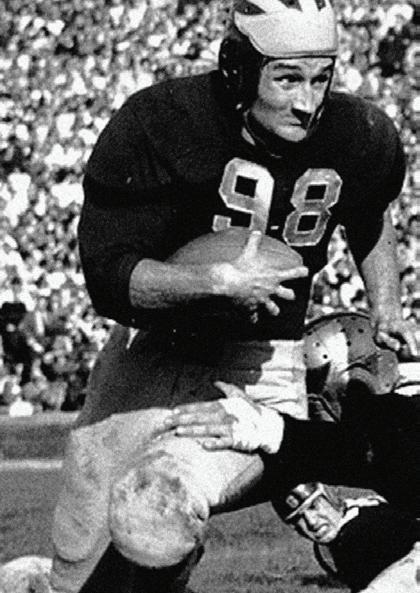
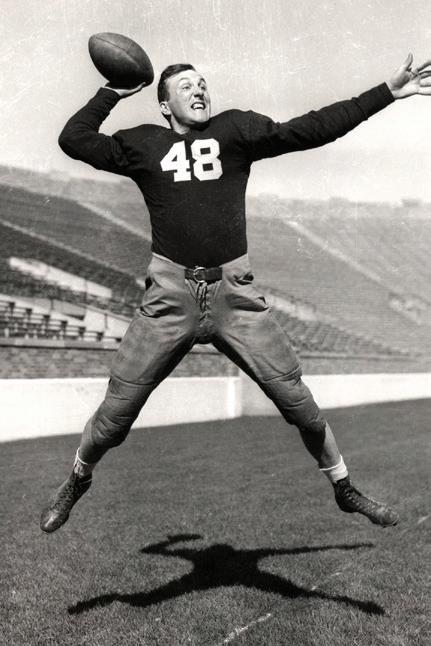

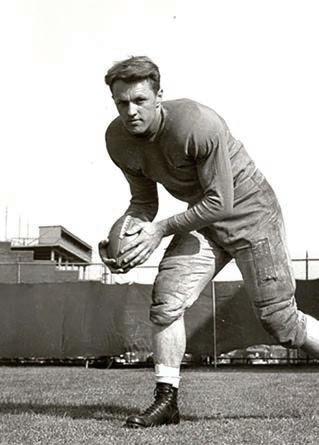
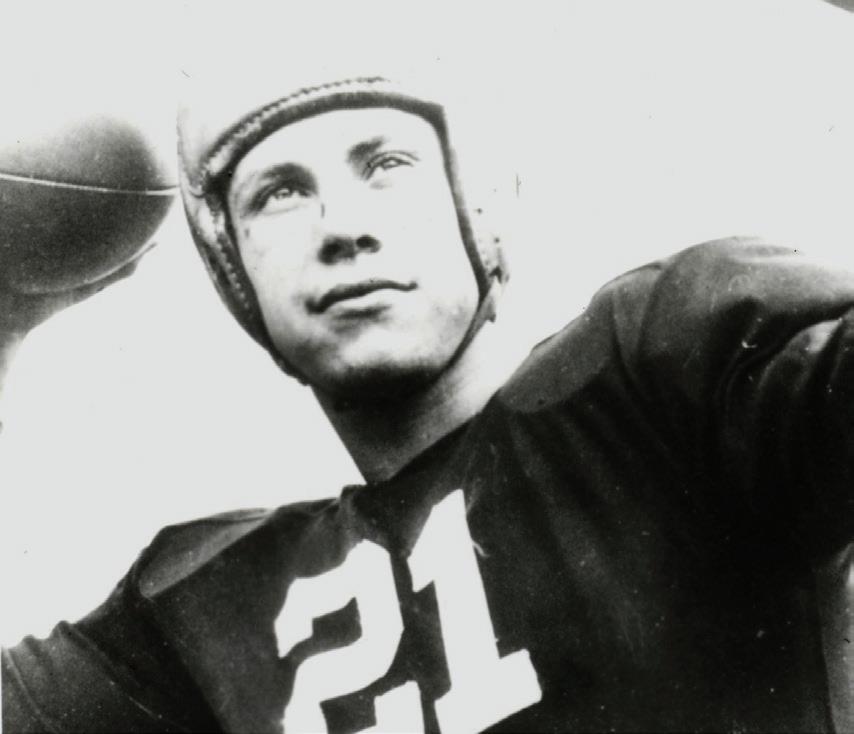
Creighton Miller, Notre Dame
Eddie Prokop, Georgia Tech
Les hit his peak in his senior year, gaining 924 yards on 162 carries for 5.7 yards per carry. He scored 12 touchdowns in 1944, and completed 14 of 32 passes for 344 yards—6 of the 14 pass completions were for touchdowns. He set a new Big Ten rushing record and played in all of his team’s nine games. One of the more versatile backs seen on any football team, he kicked, passed, blocked, tackled, and carried OSU through a perfect season, all of which won him the title of the “Playing Coach.” Les was no slouch in the classroom either, graduating in June 1945 with a degree in dentistry. Les entered the Navy in June 1945 as a double threat: dental officer in the morning and assistant football coach to Paul Brown in the afternoon. He continued coaching when he was transferred to Hawaii, and won the service championship. After a three-year fling with the pros (Rams and Browns), Dr. Horvath established a practice in Los Angeles. His hobby was golf and from 1970–72, he very successfully coached Bantam Football, winning the League Title for Glendale. He passed away in November of 1995. Leslie Horvath was elected to the National Football Foundation and College Hall of Fame in 1969.
1 Leslie Horvath, Ohio State
Glenn Davis, Army
Felix Blanchard, Army
Don Whitmire, Navy
Buddy Young, Illinois
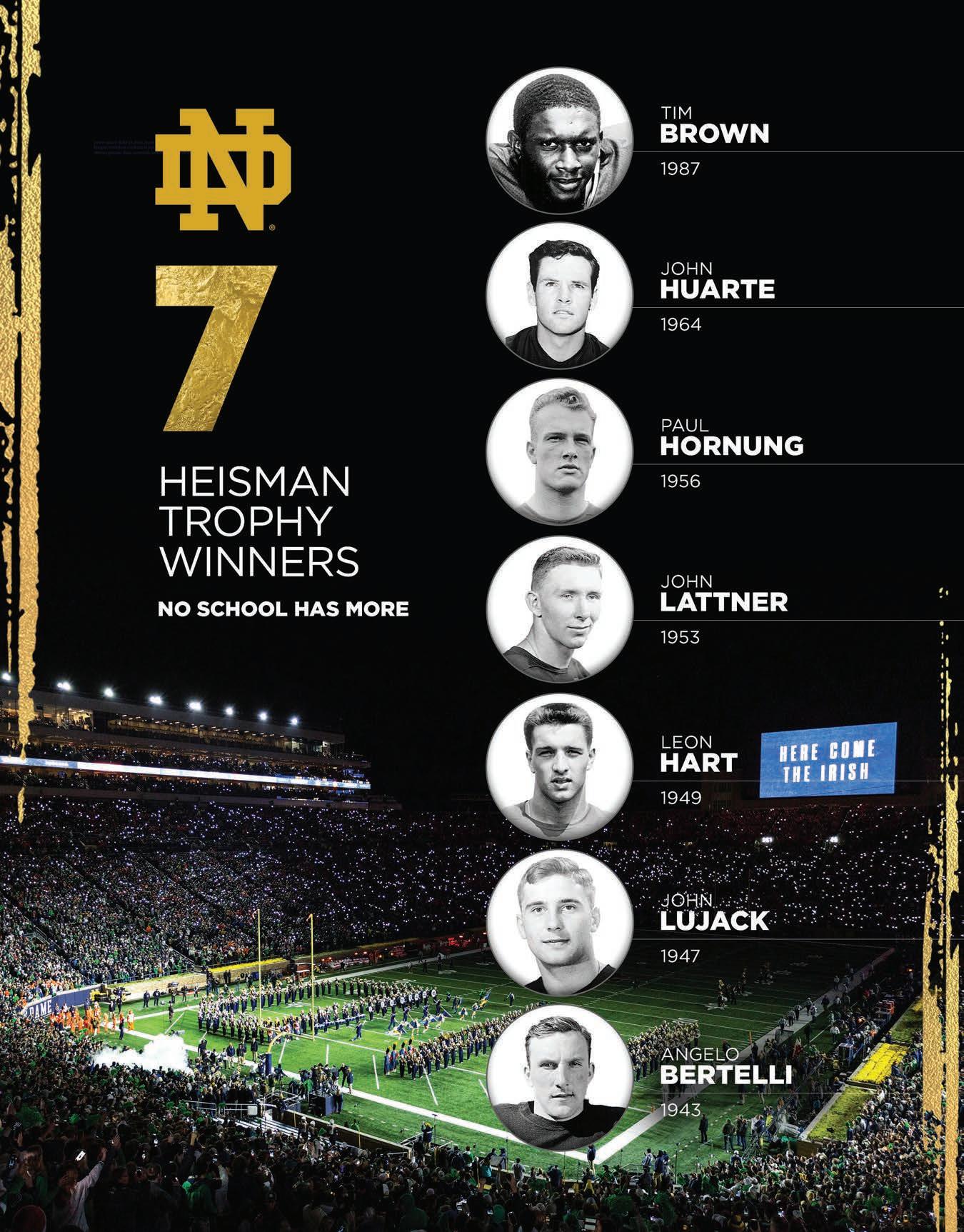
CONGRATULATIONS to the 2022 Heisman Trophy Winner as well as all of tonight’s honorees! We are proud to be the tuxedo outfitter of the Heisman Winner at every Heisman Dinner since 2004.

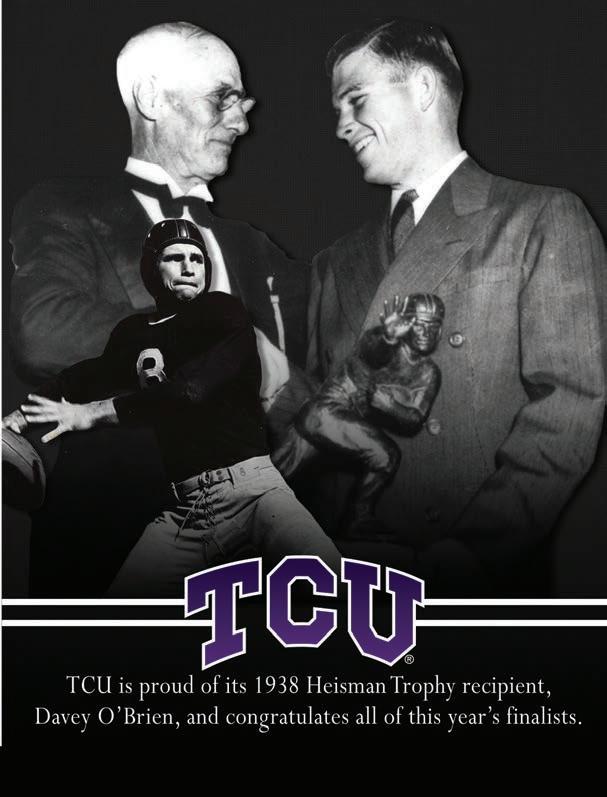
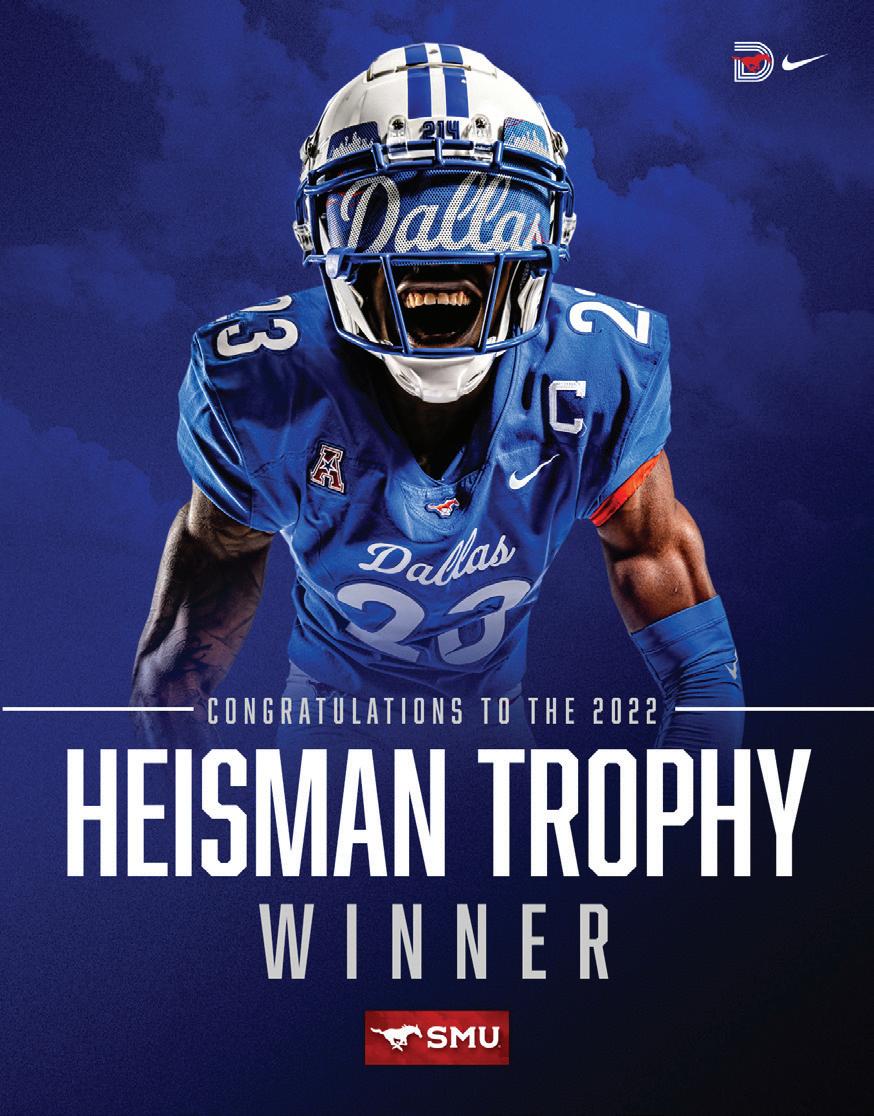
Modern Formals, Inc. was founded by Sal Dominello Sr. in 1950. Sons John and Sal Jr. now run the day to day operations. We are still a family-run business! We have been voted Connecticut’s “Best Tuxedo Shop” for the past 15 years in the Reader’s Choice Awards.
Southington,
Modern Formals Mobile Showroom | 888-289-2TUX (889)
J. Reid Parker Director of Athletics: Josh Brooks Head Football Coach: Kirby SmartAn All-American for three years, the 6-foot, 205-pound “Mr. Inside” scored 38 touchdowns and gained 1,908 yards on three powerhouse West Point teams that were unbeatable during the World War II years. The pulverizing fullback ran the 100 yards in 10 seconds flat. In his very first game against North Carolina, Felix averaged 58 yards on kickoffs, punted once for 40 yards, and carried the ball 4 times for a 4.5 yard average, although he only played for 17 minutes. Felix was the first junior to win the Heisman Trophy. After graduation from USMA, he spent his entire working career with the Army Air Force, retiring with the rank of Colonel. After retirement, “Doc” enjoyed relaxing and life in Texas where he could fish and hunt to his heart’s content. He passed away in 2009. Felix Blanchard was elected to the National Football Foundation and College Hall of Fame in 1959.
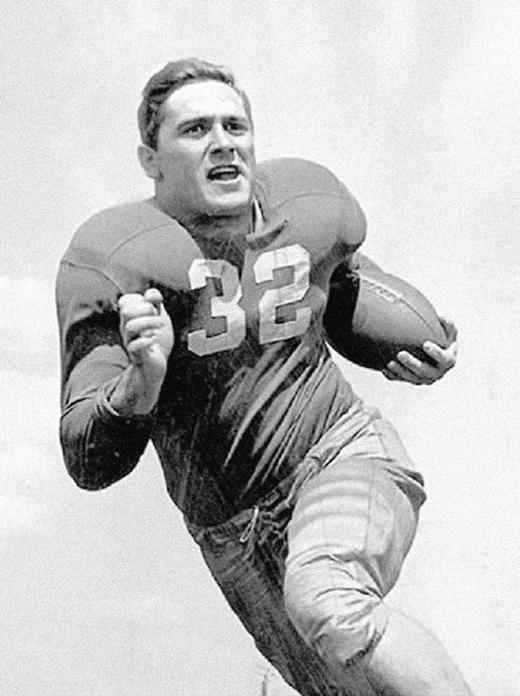
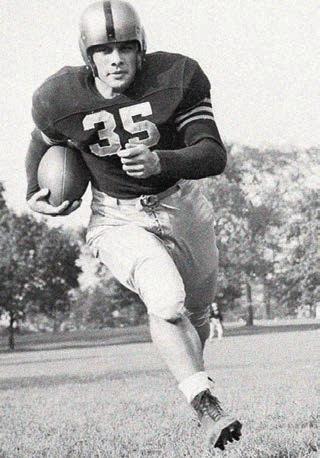
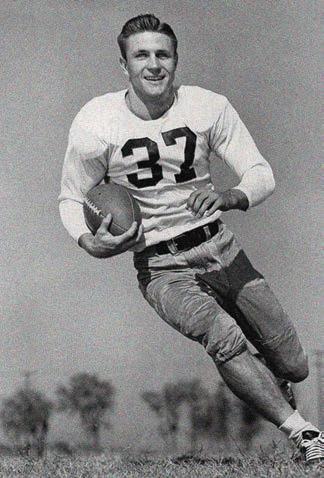


1 Felix Blanchard, Army 2 Glenn Davis, Army 3 Bob Fenimore, Oklahoma A&M 4 Herman Wedemeyer, St. Mary’s 5 Harry Gilmer, Alabama
Glenn was the “Mr. Outside” of the famed Davis-Blanchard duo. He scored 59 touchdowns in his career and gained an amazing 4,129 yards from rushing and passing for the Black Knights. He holds the major college record for most yards gained per play in one season, and ranks as one of the most versatile players in college football history. He averaged 58 minutes a game against a tough schedule. No major collegian ever approached his remarkable career average of almost one touchdown every 9 plays. Serving in the Army in Korea until 1950, Glenn resigned his commission to join the Los Angeles Rams and played on two championship teams. Injuries cut his career short, however, and he turned to public relations and promotions for the Los Angeles Times special events department, with the primary goal of raising money for youth activities. On July 12, 1996, Glenn married Yvonne Ameche, Alan Ameche’s widow. He passed away March 9, 2005. Glenn Davis was elected to the National Football Foundation and College Hall of Fame in 1961.
1 Glenn Davis, Army 2 Charles Trippi, Georgia 3 John Lujack, Notre Dame 4 Felix Blanchard, Army 5 Herman Wedemeyer, St. Mary’s
John is considered one of the greatest T-formation collegiate quarterbacks of all time. Filling in for Angelo Bertelli, who was in the Marines in 1943, he quarterbacked a 26-0 victory over the previously unbeaten Army Cadets. John gained 2,080 yards in three years, and achieved a marvelous passing record of 144 completions out of 282 throws. His accurate arm accounted for many of Notre Dame’s 24 victories in the Golden Dome. In his three seasons at Notre Dame (1943, and after military service, 1946–1947) the Fighting Irish were National Champions. In 1947, he received the Athlete of the Year award. After graduation, John played four years with the Chicago Bears and was named All-Pro on defense in 1948 and All-Pro on offense in 1950. In 1949 he established a new NFL passing record of 468 yards and 6 touchdowns in one game against the Chicago Cardinals. From 1952–53 he served as Notre Dame’s backfield coach under Frank Leahy, coaching John Lattner, the 1953 Heisman winner. In 1954, John became a Chevrolet dealer. He currently resides in Davenport, Iowa, in the summers and Indian Wells, California, during the winters, enjoying his hobby of golf. John Lujack was elected to the National Football Foundation and College Hall of Fame in 1960.

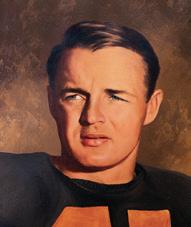
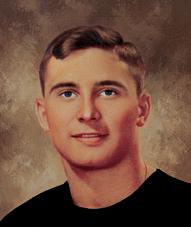
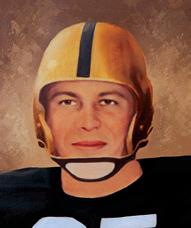
1 John Lujack, Notre Dame 2 Bob Chappius, Michigan
Doak Walker, SMU
Charles Conerly, Pennsylvania
Harry Gilmer, Alabama
1948
The greatest player to come out of the Southwest Conference, Doak was the second junior to win a Heisman Trophy. For three years he was an All-American at Southern Methodist, where, in 35 games, he scored 303 points on 40 touchdowns, 60 extra points after touchdowns, and one field goal. Doak gained over 3,500 yards running and passing, and established several other Southwest Conference records that still stand. He led the Mustangs to the Cotton Bowl in 1948 and 1949. Doak was
signed by the Detroit Lions, where he played for six seasons, leading the league in rushing in his best year. After retiring from football, he formed his own firm, Walker Chemical Co., which he subsequently sold, and following, served as Vice President of Fischbach & Moore Electric Group. Doak was married to former Olympic skier Gladys “Skeeter” Werner. He passed away in September of 1998. Doak Walker was elected to the National Football Foundation and College Hall of Fame in 1959 and the Pro Football Hall of Fame in 1986.
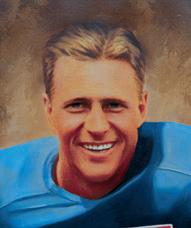
1 Doak Walker, SMU

2 Charlie Justice, North Carolina
3 Chuck Bednarik, Pennsylvania
4 Jackie Jensen, California
5 Stanley Heath, Nevada
Leon was the second end to win the Heisman Trophy. He co-captained Notre Dame’s 1949 National Championship team, and was considered by some experts to be the all-time All-American at his position. Leon played both offense and defense. He was a savage blocker and tackler, running the end-around play from fullback with devastating effect. He was voted on All-American teams three of his four years, during which Notre Dame never lost a game. He received every major football award in 1949, including Athlete of the Year by the Associated Press. Leon received a Bachelor of Science degree in Mechanical Engineering. He was Bonus Choice of the Detroit Lions in 1950, and in 1951 was voted All-Pro on offense and defense. During Leon’s eight seasons with Detroit they won four divisional titles and three world championships. He and his beloved late wife, Lois, are survived by five sons, one daughter, and fourteen grandchildren. He passed away September 24, 2002. Leon Hart was elected to the National Football Foundation and College Hall of Fame in 1973.
1 Leon Hart, Notre Dame
2 Charlie Justice, North Carolina
Invaluable as a defensive player, Vic was the key factor in the Buckeyes’ success in 1950, and the third junior to win the Heisman Trophy. The late Woody Hayes, the venerable Ohio State coach, had this to say about Vic: “He was not only a great runner, but also passed, was a place kicker and punter, played safety in defense and was an outstanding blocker. Vic epitomized the triple-threat football player.” After a stint in the service, Vic signed with the Pittsburgh Pirates as a catcher for 1953 and 1954. He returned to football in 1954 with the Redskins and played defensive back. In 1955, he led the NFL in scoring until the final day of the season when Doak Walker beat him out. In 1956, a near fatal automobile accident ended his football career. Subsequently, Vic was appointed an administrative assistant to Jim Petro, the Auditor of the State of Ohio. In 1991, the Columbus Downtown Quarterback Club honored him as “the greatest OSU athlete in the past fifty years.” He was also a member of the OSU, Elyris, and the Polish-American Hall of Fame. Vic passed away in February of 1996. Victor Janowicz was elected to the National Football Foundation and College Hall of Fame in 1976.
1 Victor Janowicz, Ohio State 2 Kyle Rote, SMU 3 Red Bagnell, Pennsylvania 4 Babe Parilli, Kentucky 5 Bobby Reynolds, Nebraska
Dick’s team was the best in the East in 1951, and was ranked sixth nationally. The Tigers completed that season with a 22-game winning streak and back-to-back undefeated teams. Dick was the nation’s total offense leader in 1951, and the most accurate passer in the country. He was also voted the Athlete of the Year in 1951 by the Associated Press. The last single wing triple-threat tailback to win the Heisman, Dick is also the Trophy’s last Ivy League winner. Dick was Chairman of Kazmaier Associates, Inc., a family investment company. He served as a Trustee of Princeton University, and as Chairman of
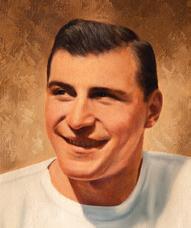


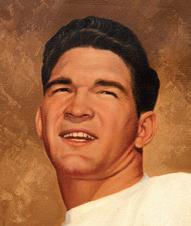
the President’s Council on Physical Fitness and Sports under President Ronald Reagan. The National Football Foundation honored Dick by presenting him with the Distinguished American Award for 1993. Richard passed away on August 1, 2013. Kazmaier is survived by his wife of sixty years, Patricia, as well as five of his six daughters and many grandchildren. Richard Kazmaier was elected to the National Football Foundation and College Hall of Fame in 1966.
1 Richard Kazmaier, Princeton

2 Hank Lauricella, Tennessee
3 Babe Parilli, Kentucky
4 Bill McColl, Stanford
5 John Bright, Drake
A great star on a star-studded Sooner team, Billy scored 18 touchdowns, gained over 1,000 yards rushing, and caught 8 passes for 200 yards. In his senior year, he threw 18 passes and completed 7 for 209 yards and 3 touchdowns. A fierce competitor, he is best remembered for his running savagery against Notre Dame, scoring 3 touchdowns and surging 195 yards rushing on 17 carries, for an average of 11.5 yards per carry. In 1953, Billy turned pro for the Edmonton Eskimos and won the Schenley Award as the top player in Canada, before serving as an officer in the US Army. He spent one year (1956) with the Baltimore Colts and then moved to Florida in 1957 to become assistant to the president of Mackle Company, a major real estate developer. Billy was active in fund-raising, alumni association work, and served on President John F. Kennedy’s Physical Fitness Program. He passed away on November 17, 2001 and is survived by his wife and three children. Billy Vessels was elected to the National Football Foundation and College Hall of Fame in 1974.

1 Billy Vessels, Oklahoma
2 Jack Scarbath, Maryland 3 Paul Giel, Minnesota
4 Donn Moomaw, UCLA 5 John Lattner, Notre Dame
John scored 20 touchdowns and 120 points for the Fighting Irish. He gained 1,726 yards from scrimmage and caught 39 passes for 479 yards. He advanced the ball 3,095 yards by running, catching passes, returning punts and kickoffs, and intercepting passes. During his time at Notre Dame, the team lost only three times in three years. The 195-pound, smack-over halfback turned in fine performances in showcase games against the top caliber teams of Oklahoma, Purdue, Southern Cal, and Iowa. John went from Notre Dame to the Pittsburgh Steelers, and then served for two years in the Air Force from 1955–57. Following his military service, he took up coaching at St. Joseph High School and later Denver University. In 1962, he opened a steak house in Chicago, which bore his name, as well as a second restaurant there called Marina City. His Heisman Trophy was always proudly on display at Lattner’s Steak House. John was Vice President of sales for PAL Graphics, Inc. and was active in fundraising for many charities. He also served on the Physical Fitness Committee of the State of Illinois. He passed away on February 13, 2016. John Lattner was elected to the National Football Foundation and College Hall of Fame in 1979.

1 John Lattner, Notre Dame 2 Paul Giel, Minnesota 3 Paul Cameron, UCLA 4 Bernie Faloney, Maryland 5 Bob Garrett, Stanford

This stampeding fullback who played in thirty-seven games over four years scored 25 touchdowns, gained 3,345 scrimmage yards, and was mainly responsible for the Badgers’ 26 victories between 1951–54. His ability to play 55 or more minutes per game earned him the nickname “The Iron Horse.” Upon graduation, Alan held all rushing records for single game and season performances at Wisconsin, scoring more points and touchdowns than any player in the school’s history; he was Wisconsin’s greatest grid star. Alan played as a fullback with the Baltimore Colts for six seasons (1955–60). He then founded Gino’s, Inc., a chain of successful restaurants, and served as its Corporate Secretary and a member of the Board. Alan was awarded a Doctor of Humane Letters from St. Joseph’s College, was Director of the Philadelphia Orchestra, Director of the Multiple Sclerosis Society, a Trustee of Malvern Prep, and was Corporations Chairman for the United Negro College Fund. He passed away on August 8, 1988. Alan Ameche was elected to the National Football Foundation and College Hall of Fame in 1975.

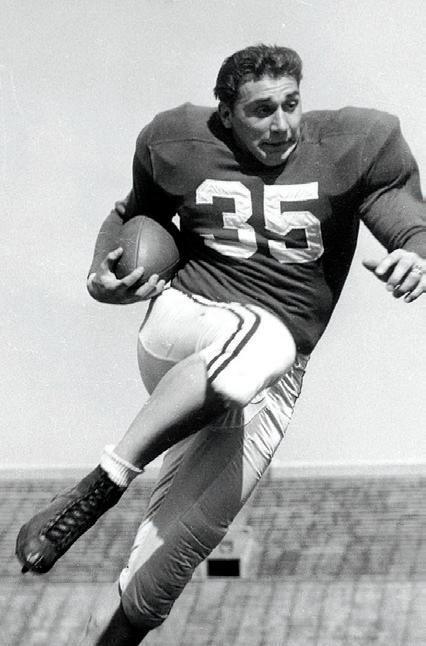
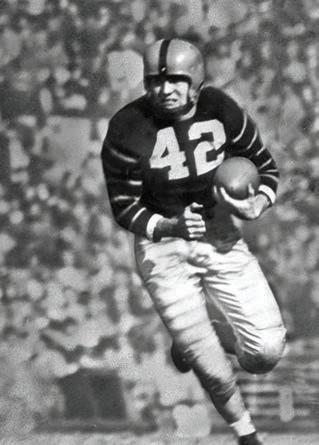

1
Alan Ameche, Wisconsin
2 Kurt Burris, Oklahoma 3 Howard Cassady, Ohio State 4 Ralph Gugliemi, Notre Dame 5 Paul Larson, California
“Hopalong” was one of Ohio State’s best ever, scoring 37 touchdowns in thirty-six games for 222 points. He gained 2,466 yards rushing for an average of 5.6 per try. A player’s player, his 964 yards with a total of 15 touchdowns his senior season led the team, as Ohio State repeated as Big Ten champions. Often overlooked were his sparkling defensive plays; he never had a pass completed over him in four years of Big Ten competition. He held the Buckeyes’ yardage-gained record for many years and was voted All-American 1954–55. Howard also played baseball for Ohio State for four years, and in 1955 was named Athlete of the Year by the Associated Press. He played eight years with the Detroit Lions, one with the Philadelphia Eagles, and one with the Cleveland Browns. He then founded his own company that manufactured concrete pipe, which he sold in 1968 when he began selling steel with Hopalong Cassady Associates. Howard later worked for American Shipbuilding in Tampa, and was a scout and coach for the New York Yankees. He was inducted into the Columbus Clippers Hall of Fame in August 2005. Howard and his wife, Barbara have three children and four grandchildren. He passed away in September 2019. Howard Cassady was elected to the National Football Foundation and College Hall of Fame in 1979.

1 Howard Cassady, Ohio State 2 Jim Swink, Texas Christian 3 George Welsh, Navy 4 Earl Morrall, Michigan State 5 Paul Hornung, Notre Dame
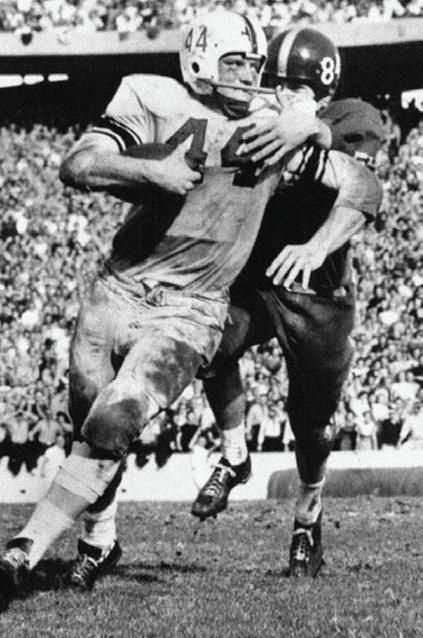
Despite a mediocre Notre Dame team, the blond, 220-pound “Golden Boy,” carried the ball 94 times his senior year for 420 yards for an average of 4.5 per try. He completed 59 of 111 passes for 917 yards, 3 touchdowns, and a .532 completion percentage, giving him a total offensive figure of 1,337 yards. The jack-of-all-trades could run, pass, block, and tackle. Paul was probably the greatest all-around player in Notre Dame’s history and is the only Heisman winner to have played on a losing team, as the Fighting Irish were 2–8 in 1956. As almost every football fan knows, Paul went to the Green Bay Packers, leading the NFL in scoring for three straight years, and was voted MVP in 1960 and 1961. He accomplished his records despite injuries and military obligations, and it is no wonder that his coach, Vince Lombardi, called him “the most versatile man who ever played the game.” He was President of Paul Hornung Sports Showcase and Paul Hornung Enterprises, Inc., Vice President of Real Estate and Investment Co. and a member of the National High School Hall of Fame. He passed away in November 2020. Paul Hornung was elected to the National Football Foundation and College Hall of Fame in 1985 and the Pro Football Hall of Fame in 1986.
1 Paul Hornung, Notre Dame
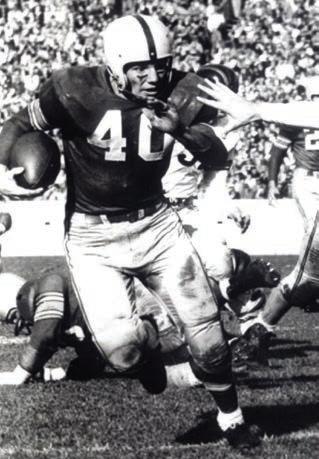
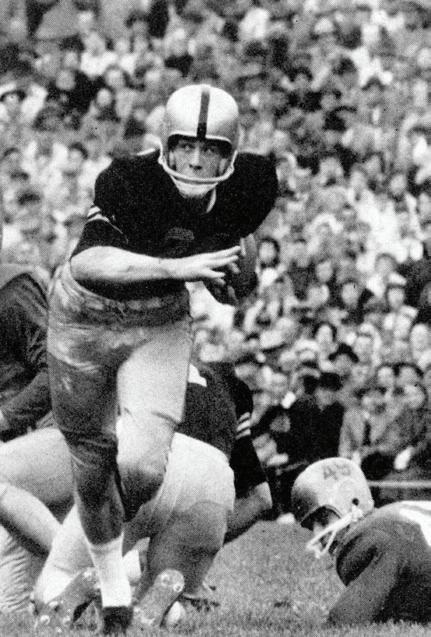
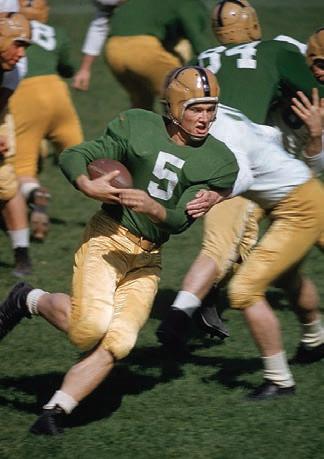
2 John Majors, Tennessee
3 Tom McDonald, Oklahoma
4 Jerry Tubbs, Oklahoma
5 Jimmy Brown, Syracuse
Despite suffering some early season injuries in 1957, during his senior campaign, John David carried the ball 129 times for 562 yards, scored 6 touchdowns, passed for 5 more, and added 5 interceptions. John David was named a scholastic All-American his senior year and was named to Who’s Who in American Colleges and Universities. John David had a memorable professional career with the Cardinals and 49ers, playing eleven years and setting rushing and touchdown records, some of which still stand. He rushed for 5,000 yards and gained over 3,000 yards on pass receptions. Returning to college ball in 1968, he worked as offensive backfield coach under his old A&M mentor, Bear Bryant, in Alabama. He then went on to the Cleveland Browns and San Diego Chargers in a similar capacity and was named Athletic Director and Head Football Coach at Northeast Louisiana State University in 1975, a position he held until 1980. John David served Texas A&M as Associate AD, AD, and as Director of Development for Athletics until his retirement in 2001 and was named a distinguished alumnus of Texas A&M. He served on the Board of Directors of Gulf Greyhound Partners, Ltd. and The Green Group, Inc. John David and his wife Carolyn have three children (one deceased), seven grandchildren, and five great granddaughters. He passed away in 2016. John David Crow was elected to the Texas and Louisiana Sports Hall of Fame, and the National Football Foundation and College Hall of Fame 1976.
1 John David Crow, Texas A&M 2 Alex Karras, Iowa 3 Walt Kowalczyk, Michigan State 4 Lou Michaels, Kentucky 5 Tom Forrestal, Navy

1958
Pete, the sixty-ninth Army football captain and a polio victim, posed a double threat as a runner and a left-handed passer. In three years, he rushed for 1,123 yards, threw 16 passes, 7 for touchdowns, caught 27 passes for 716 yards and scored 158 points, leading the Cadets to an undefeated season. Pete was Class President and Cadet First Captain, and went on to attend Oxford University as a Rhodes Scholar, where he played for the university’s rugby team for three years. Later,

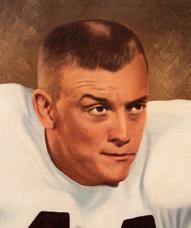
he attended Princeton, where he received an MPA and PhD. His military career was equally impressive, and he rose to the rank of Brigadier General with commands in both the 82nd and 101st Airborne Divisions. After serving twenty-four years, Pete retired from the Army and entered the world of business. After several years on Wall Street, he ran for a seat in the U.S. Senate, and subsequently served for over twenty years in executive positions in Primerica Corporation, Travelers, and Citigroup. Pete is currently Senior Advisor at Vitu Financial, the largest non-bank liquidity provider in the global markets. He was elected to the National Football Foundation and College Hall of Fame in 1975 and, along with Roger Staubach, received the Hall of Fame’s Gold Medal Award in 2007.
1 Pete Dawkins, Army
2 Randy Duncan, Iowa 3 Billy Cannon, Louisiana State 4 Bob White, Ohio State 5 Joe Kapp, California
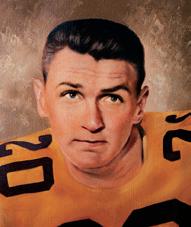

At LSU, Billy gained 598 yards rushing, an average of 4.3 yards, completed 2 passes for 20 yards, caught 15 punts and ran them back for 221 yards, returned 8 kickoffs for 191 yards, scored 7 touchdowns and punted 44 times for an average of 40.3 yards. The shifty, slashing 6-foot-1, 210-pound “Atomic Cannon” was clocked in the hundred at 9.4, and was the scourge of LSU’s Southeastern Conference opponents for three years. Billy went on to a distinguished pro career with the Houston Oilers (four years), the Oakland Raiders (six years), and the Kansas City Chiefs (one year). He was named All-Pro halfback with Houston and All-Pro tight end with Oakland. During his pro years, Billy went to dental school at the University of Tennessee, graduating in 1968 with a DDS. He continued his studies at a graduate program in orthodontia at Loyola in Chicago, earning two additional degrees. Billy and his wife, Dorothy, have five children and resided in Baton Rouge, Louisiana, where he was an orthodontist. Billy Cannon passed away in 2018. He was elected to the National Football Foundation and College Hall of Fame in 2008.
1 Billy Cannon, Louisiana State
2 Richie Lucas, Penn State
3 Don Meredith, SMU
4 Bill Burrell, Illinois
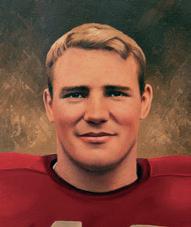












At 5-feet-9 and 181 pounds, Joe gained 834 yards, over half of his team’s total 1,650 yards, in Navy’s 1960 season (9-1). He completed 5 of 14 passes, 2 for touchdowns, caught 15 passes for 264 yards and 3 touchdowns. His quick-kicks averaged 47.1 yards, and he returned 5 punts for 97 yards and 11 kickoffs for 240 yards. He was Navy’s chief scorer in 1960 with 18 touchdowns for 110 points and played safety on defense, averaging over 40 minutes per game. After a four-year stint in the Navy, Joe was signed by the (then) Boston Patriots and played for three seasons. In 1968, he was drafted by the Cincinnati Bengals, but preferred to retire from football rather than move his family. Although semi-retired, for the last thirty years, Joe worked in the automobile industry, specializing in the wholesale auto auction and consumer leasing business. Joe was Director of National Accounts for ADESA Boston, also Director of the Northern Bank and Trust Company, and was active in many charities in the New England area. He served over twentyeight years in the U.S. Navy and Naval Reserve and held the rank of Captain, USNR, Retired. Joe passed away in 2019, survived by his wife, Ann, and two children, Therese and John. Joseph Bellino was elected to the National Football Foundation and College Hall of Fame in 1977.

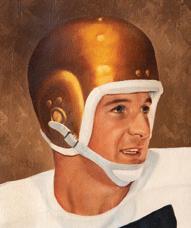
Balloting
1 Joseph Bellino, Navy
2 Tom Brown, Minnesota 3 Jake Gibbs, Mississippi 4 Ed Dyas, Auburn 5 Bill Kilmer, UCLA

1961
Ernie, a big, rugged 6-foot-2, 211-pounder, played left halfback and was his team’s leading ground-gainer for three seasons. He completed 1961 with 823 yards on 150 carries, averaging 5.5 yards. He scored 15 touchdowns and totaled 94 points, leading Syracuse in pass receiving with 16 catches for 157 yards. He broke Jim Brown’s career records in rushing (2,386 yards), yards gained all ways (3,414), scoring (220 points), and touchdowns (35). Ernie was the first African American to win
the Heisman Trophy. After graduating from college, he was signed by the Cleveland Browns for the (then) astronomical sum of $80,000. Shortly after signing, and before he suited up for his first pro game, Ernie was struck down by leukemia. He died on May 18, 1963, after a sixteen-month battle for survival. Ernest Davis was elected to the National Football Foundation and College Hall of Fame in 1979.
1 Ernest Davis, Syracuse 2 Bob Ferguson, Ohio State 3 Jimmy Saxton, Texas 4 Sandy Stephens, Minnesota 5 Pat Trammel, Alabama
The West Coast’s first Heisman winner established an amazing record in total offense, running and passing for 4,980 yards at Oregon State. In 1962, Terry completed 111 passes out of 202 attempts for 1,723 yards, including 15 touchdown passes. He led his team in net yards gained rushing, averaging 4.5 yards per carry and kicked 33 of his team’s 42 punts, averaging 37.4 yards per punt. A fine all-around athlete, he is the only Heisman winner to also play in an NCAA Final Four. Terry graduated with a degree in Mechanical Engineering in 1963, then played pro ball with the Los Angeles Rams and the Edmonton Eskimos. He attended law school at USC, received his Juris Doctorate in 1968, and was admitted to the Oregon State Bar that year. Terry served on the staff of the President’s Commission on Campus Unrest and Kent State Task Force in 1970. He practiced law in Portland, Oregon, as a partner in the law firm Tonkon Torp LLP until retiring in 2012. He received the NCAA Silver Anniversary Award in 1988 and was elected to the GTE Academic All-American Hall of Fame in 1991. Terry Baker was elected to the National Football Foundation and College Hall of Fame in 1982.



1 Terry Baker, Oregon State
2 Jerry Stovall, Louisiana State 3 Bob Bell, Minnesota


Roger was hailed by Navy coach Wayne Hardin as “the greatest quarterback Navy ever had.” In 1963, he completed more than 115 passes, 9 for touchdowns, and as a sophomore completed 67 of 98 pass attempts as the leading percentage passer in the nation. In the Michigan-Navy game of 1963, he connected on 14 passes for 237 yards, and against West Virginia, he completed 17 passes. He was the fourth junior to win the Heisman Trophy. Of Roger’s subsequent professional career with the Dallas Cowboys, not much needs to be said other than that he proved himself to be one of the finest quarterbacks in history in terms of both performance and team leadership. Roger joined the Cowboys in 1969, following four years of service in the Navy, with one year in Vietnam. He was voted MVP in Super Bowl VI. Roger was the Executive Chairman of Americas of Jones Lang LaSalle, an international diversified commercial real estate company headquartered in Chicago. Roger Staubach was elected to the National Football Foundation and College Hall of Fame in 1981 and the Pro Football Hall of Fame in 1985—the first year he became eligible for this honor.

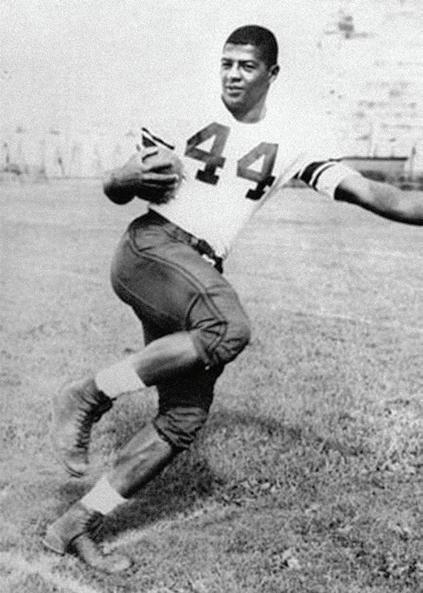
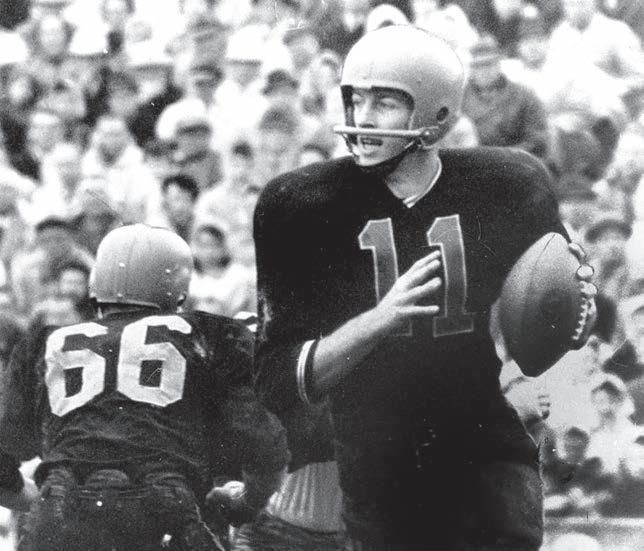
1 Roger Staubach, Navy 2 Billy Lothridge, Georgia Tech 3 Sherman Lewis, Michigan State 4 Don Trull, Baylor 5 Scott Appleton, Texas
The grim-jawed passer led Notre Dame to a brilliant season of nine victories in ten games. Although he played only 5 minutes as a sophomore and 45 as a junior, he established nine Notre Dame records and tied another. He completed 114 of 205 passes for 2,062 yards and 16 touchdowns for an average of 18.1 per completion in his senior year. He was the sixth Notre Dame player to win the Heisman Trophy. After graduation, John played ten years of pro football, eight in the NFL, and two in the WFL playing for Memphis. He is the owner and president of Arizona Tile, a group of twenty-five granite tile centers located throughout California, Arizona, Nevada, New Mexico, Colorado, Utah, and Texas, and is the No. 1 distributor of these products in North America. He is married to the former Eileen Devine of New York City and they have five children and eleven grandchildren. John Huarte was elected to the National Football Foundation and College Hall of Fame in 2005.
1 John Huarte, Notre Dame 2 Jerry Rhome, Tulsa 3 Dick Butkus, Illinois 4 Bob Timberlake, Michgan 5 Jack Snow, Notre Dame
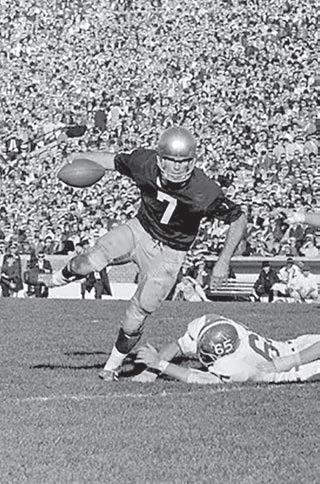

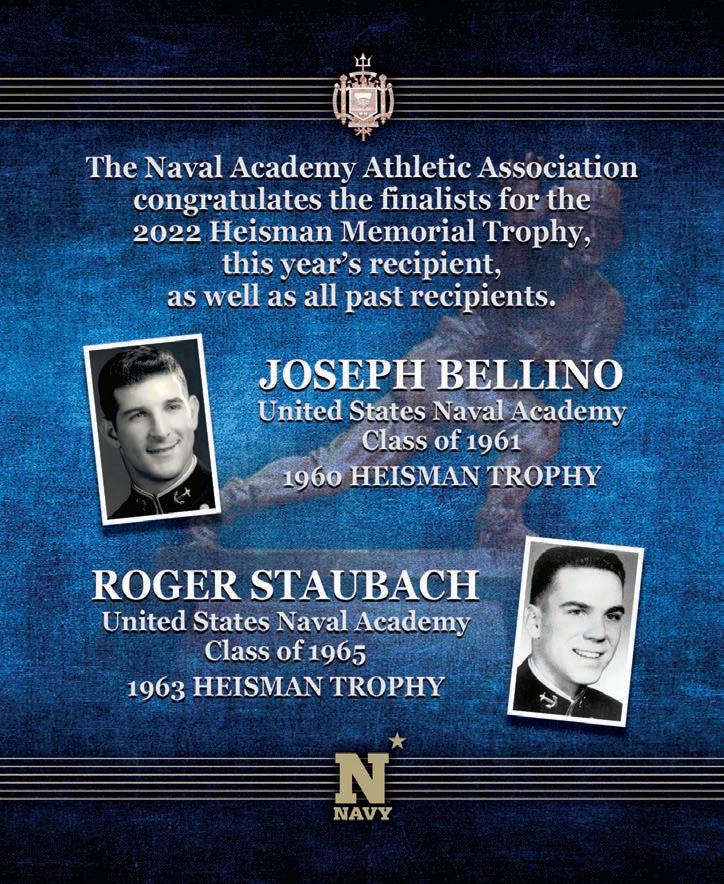
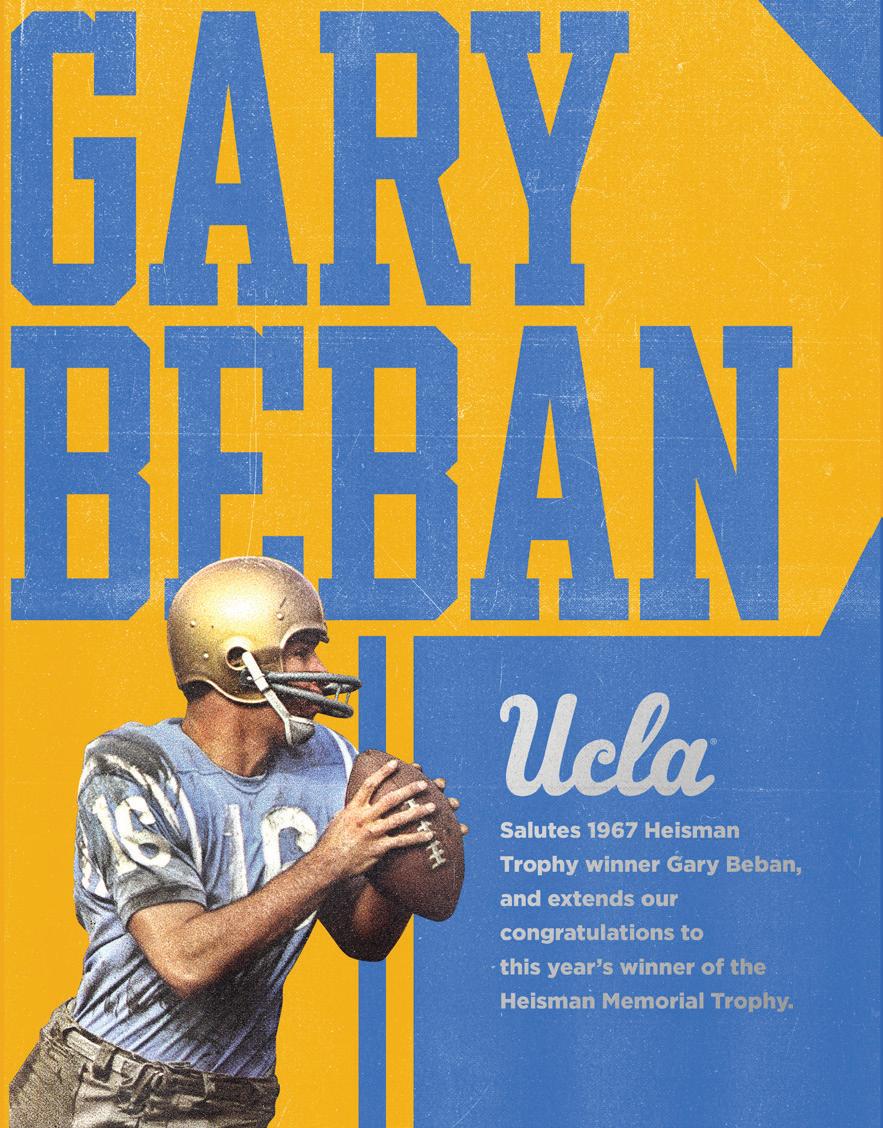 Les Horvath 1944 Heisman Winner
Vic Janowicz 1950 Heisman Winner
Howard Cassady 1955 Heisman Winner Archie Griffin 1974 & 1975 Heisman Winner
Eddie George 1995 Heisman Winner
Les Horvath 1944 Heisman Winner
Vic Janowicz 1950 Heisman Winner
Howard Cassady 1955 Heisman Winner Archie Griffin 1974 & 1975 Heisman Winner
Eddie George 1995 Heisman Winner

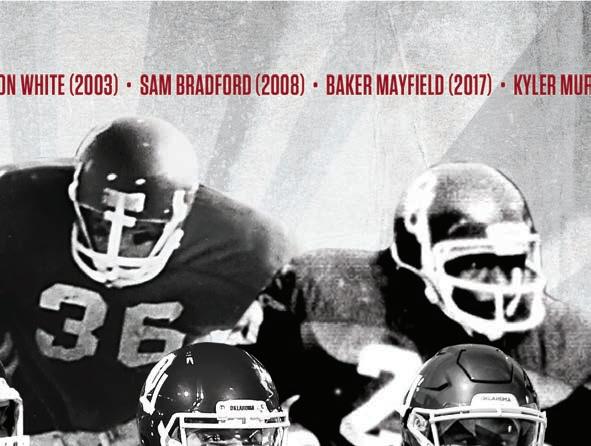



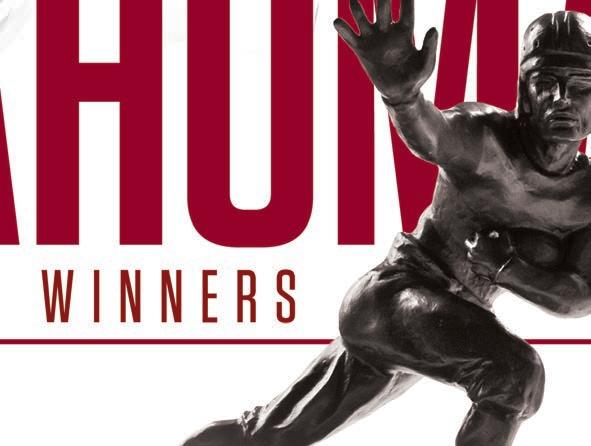

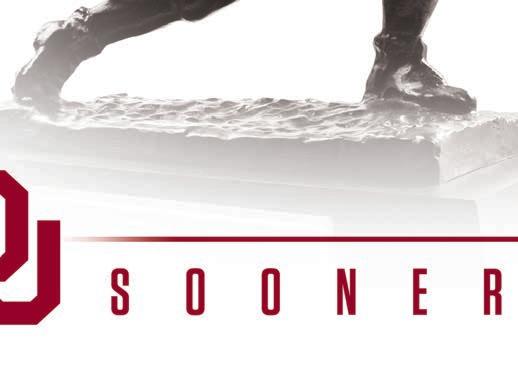
In three years with the Trojans, Mike gained 4,876 yards in rushing, passing, receiving, punt returns, and kickoff returns. Mike’s 1,440 rushing yards led the nation’s runners in 1965 and his 3,221 career yards on the ground was among the best in NCAA history. The 5-foot-9, 189-pound halfback broke nearly all of his college’s football offensive records and many of the AAWU Conference on the West Coast. After college, Mike played four years with the Kansas City Chiefs, winning a Super Bowl in 1970, and four more with the San Diego Chargers. In San Diego, Mike also founded a community-based educational program for underprivileged children. Mike returned to his alma mater, the University of Southern California, as Associate Athletic Director and was then named Athletic Director in 1993. He has remained actively involved in youth programs in Los Angeles, starting East Los Angeles Youth Activities to deal with gang youth, and has been a motivating force behind several charity sports programs. Mike and his wife, Suzanne, have four children, Sara, Daniel, and twins, Michael William and John Sherman. Mike Garrett was elected to the National Football Foundation and College Hall of Fame in 1985.
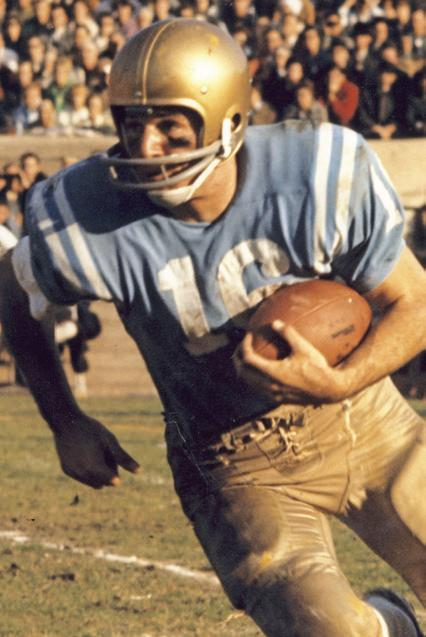

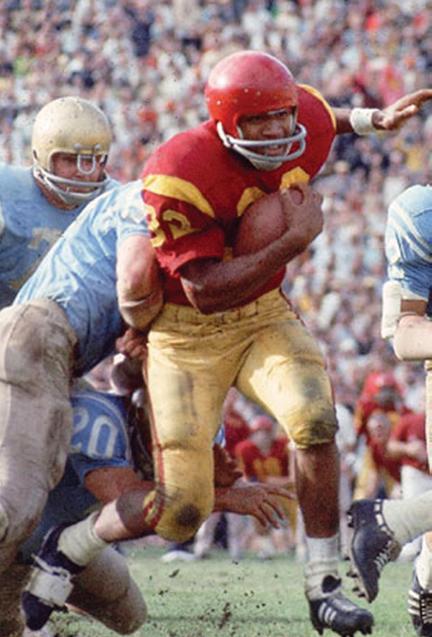
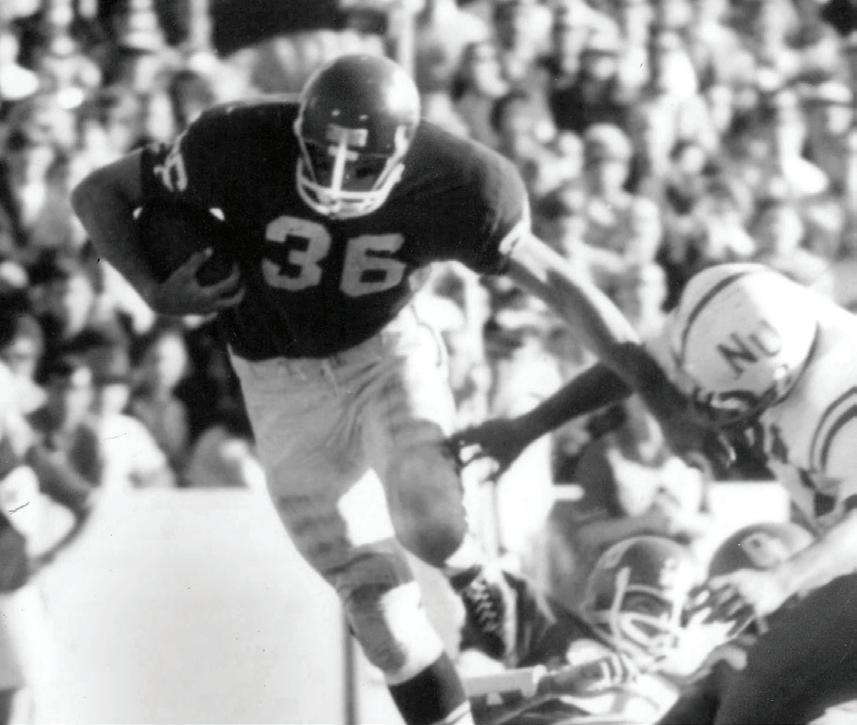
1 Mike Garrett, USC 2 Howard Twilley, Tulsa 3 Jim Grabowski, Illinois 4 Don Anderson, Texas Tech 5 Floyd Little, Syracuse

6-feet-2 and 203 pounds, “Super Steve” broke many Florida and Southeastern Conference records in a career that spanned 31 games. He completed 392 passes out of 692 attempts for a total yardage of 4,848, including 37 touchdowns and picked up 442 yards rushing. The number one draft choice of the San Francisco 49ers, he played for nine years, spelling John Brodie as quarterback in 1972 and leading the 49ers to a third consecutive NFC West Title. In the ’72 season he threw for 5 touchdown passes to tie Brodie and Albert for the team record. A collegiate head coach for 29 years, he was 20-13-1 at Duke and won the ACC title in 1989. As Florida head coach, his team won the SEC title in 1990–91, 1993–96, 2000 and the National Championship in 1996. He was the winningest coach in Florida history with a record of 122-27-1 for 12 years. As head coach at the University of South Carolina, his teams have qualified for a Bowl game all nine years, with an Eastern Division title in 2010. In 2011, he led South Carolina to the best record, 11-2, and is the winningest football coach in that school’s history. He won nine Conference
Coach of the Year awards and the Davey O’Brien Legends Award. He is married to the former Jerri Starr; they have four children and fourteen grandchildren. Steve Spurrier is one of four people to be elected to the National Football Foundation and College Football Hall of Fame as both a player (1986) and a coach (2017).
1 Steve Spurrier, Florida

2 Bob Griese, Purdue
3 Nick Eddy, Notre Dame
4 Gary Beban, UCLA
5 Floyd Little, Syracuse
Since graduation, O.J. has become not only a legendary rusher in the NFL, but an actor, and an advertising pitchman. He closed out a great football career in 1979 with the 49ers. He went on to be seen on television and movie screens regularly. He was a sports broadcaster for NBC and ABC. He owns and is CEO of two companies, Orenthal Productions and O.J. Simpson Enterprises. O.J. Simpson was elected to the National Football Foundation and College Hall of Fame and the Pro Football Hall of Fame in 1985.
O.J. Simpson, USC
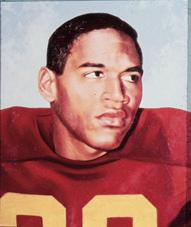
Leroy Keyes, Purdue
Terry Hanratty, Notre Dame
Ted Kwallick, Penn State
Ted Hendricks, Miami
Gary quarterbacked UCLA to twenty-three victories against five losses and two ties in his three-year reign with the Bruins. He completed 240 of 454 passes for a total of 4,070 yards, while rushing for 1,280 yards, crossing the goal line 35 times, and running for 2 two-point conversions. Against USC in his senior year, Gary completed 16 out of 24 passes for 301 yards and 2 touchdown strikes of 53 and 20 yards. After college, Gary played for the Redskins until 1970. He then joined CB Commercial, the nation’s leading full-service real estate organization. After serving as an industrial property specialist and holding various management positions, Gary served as the President of CB Richard Ellis (CBRE) from 1987 to 1998, and co-chaired the Global Account Management Group until his retirement in 2008. Still active with CBRE as an advisor and client account manager, he also serves as a Director of the Hubbell Realty Company. Gary Beban was elected to the National Football Foundation and College Hall of Fame in 1998.
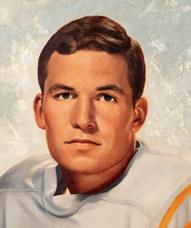
1 Gary Beban, UCLA 2 O.J. Simpson, USC 3 Leroy Keyes, Purdue 4 Larry Csonka, Syracuse 5 Kim Hammond, Florida State
The second Heisman Trophy winner from USC, O.J. piled up a monumental record in two seasons at USC. In eighteen games he gained 3,187 yards, scored 21 touchdowns in 1968 and 13 in 1967. His 40 carries in the UCLA game his senior year gave him an NCAA record of 334 for one season. His 205 yards in that same game swelled his season total to 1,654 for another NCAA record.
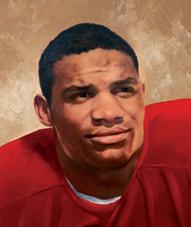
Steve was named to the All Big Eight Conference team in 1967–69; received Big 8 Player of the Year in 1968–69; was a Consensus All-American in 1968–69 and was selected by his teammates as co-captain of the 1969 Sooners. Steve was drafted in the 1st round by the Detroit Lions, was the first Lion to gain over 1,000 yards in a season, and was an All-Pro selection in 1971. After six years with Detroit, he retired with a serious knee injury. In 1991, Steve was named to The Oklahoma Sports Hall of Fame, and was the Walter Camp Foundation Alumnus of the Year. He was inducted into the Orange Bowl Hall of Honor in 1992. Steve is CEO of Steve Owens Associates and Steve Owens Insurance Group, which offer a full range of insurance and service related products, located in Norman, Oklahoma. Steve keeps strong ties to the University of Oklahoma, serving as AD from 1996–98. He is the founding member of the Norman Public School Foundation and Miami (OK) Public School Foundation. He has been a spokesman for the Ronald McDonald House and played a key role in raising funds to bring the House to Oklahoma City. Steve has given his time to the Make-A-Wish Foundation, the Cystic Fibrosis Foundation, the Child Welfare Citizens Advisory Board, the Oklahoma Chapter of the National Football Foundation, and the Advisory Board for the Norman Family YMCA. He is on the Board of Directors of Arvest Bank and also serves on the Selection Committees for the Doak Walker and the Danny Wuerffel Awards. Steve resides in Norman with his wife, Barbara. They have two sons, their beloved Blake, and Mike, his wife Lindsay and children Quincy, Austin, Madden and Campbell. Steve Owens was elected to the National Football Foundation and College Hall of Fame in 1991.

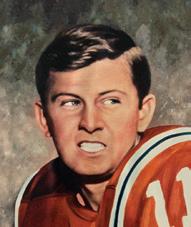

In three seasons with the Indians, Jim’s total offense records included most pass attempts (962), most pass completions (530), most net yards passing (7,544), most touchdown passes (52), most plays total offense (1,174), and most yards total offense (7,887). His net yards passing and most yards total offense were NCAA records at the time. When he connected for 22 of 36 passes for 268 yards against Washington, he broke the career passing mark of 7,076 yards held by Steve Ramsey of North Carolina. After Rose Bowl heroics (leading Stanford over Ohio State in 1971, 27-17), Jim went on to the New England Patriots—as a No. 1 draft choice—where he compiled a brilliant freshman record as starting quarterback passing for 2,158 yards, and winning Rookie of the Year honors. He played in every Patriots game until injuries sidelined him in 1975. He was traded in 1976 to the 49ers, and in 1980, joined the Oakland Raiders and quarterbacked them to two Super Bowl wins, in 1980 (in which he was named MVP) and 1983. Jim retired after a stellar seventeen-season pro-football career, and works as an analyst for the Oakland Raiders pre-season television and co-hosts a weekly Oakland Raiders highlight television show. He was named the First Recipient of the Leukemia Society of America’s Ernie Davis Award. Jim Plunkett was elected to the National Football Foundation and College Hall of Fame in 1990. Balloting 1 Jim Plunkett, Stanford 2 Joe Theismann, Notre Dame 3 Archie Manning, Mississippi 4 Steve Worster, Texas 5 Rex Kern, Ohio State


A three-season starter, Pat led Auburn to 25 victories in 30 games. The Tigers averaged well over 34.4 points and 425.8 yards a game and Pat accounted for 73 touchdowns (18 running and 55 passing) to equal the all-time NCAA mark. He received the Sammy Baugh Award (1970), the Walter Camp Player of the Year Award (1971), and was the 1972 MVP of the College All-Star Game. After graduation, Pat played for the Atlanta Falcons. In 1976, he was traded to the Washington Redskins and in 1977, to the 49ers. Following his pro career, Pat was successful as an insurance and tire company executive in
his hometown of Birmingham, Alabama. For 5 years, he served as the color analyst on Auburn’s radio broadcast. In 1986 he returned to Auburn as QB coach. In 1992 he became the Head Football Coach at TCU and was named SWC Coach of the Year in 1994. Pat was the Offensive Coordinator and QB Coach at The University of Alabama at Birmingham from 1999–2005, and the Assistant Head Coach in 2006. In 2007 he was named Head Football Coach at Samford University in Birmingham and led them to a 2013 SO-CON championship. Pat retired from coaching in 2014 and worked for the President of Samford University in Campus and Community Development. Pat volunteered for the UAB Head and Neck Cancer Survivor Care Program. He and his wife Jean have three children and eight grandchildren. He passed away in December 2019. Pat was a member of the Gator Bowl, Sugar Bowl, and Senior Bowl Hall of Fame. In 1981 Pat Sullivan was inducted into the Alabama Sports Hall of Fame, in 1991, the National Football Foundation and College Hall of Fame, and in 2012, the National High School Hall of Fame.
1 Pat Sullivan, Auburn 2 Ed Marinaro, Cornell 3 Gregg Pruitt, Oklahoma 4 John Musso, Alabama 5 Lydell Mitchell, Penn State

The first wide receiver to win the Heisman, Johnny was one of the most versatile players in Cornhusker history. Operating as a punt and kickoff returner, he broke offensive and punt return records by the dozen. In his three-year career he racked up 5,586 all-purpose yards for an NCAA record. Johnny sits among Orange Bowl royalty, winning three straight Orange Bowls and two National Championships concluding his Heisman-winning season with a 5-touchdown performance against Notre Dame. He rushed for 3 touchdowns, caught a 50-yard touchdown and even threw a 52-yard touchdown on a halfback pass play. His 24 points scored in 1973 and 30 career points scored in Orange Bowl games are both tied for first all-time. Johnny chose to go to the CFL and played for the Montreal Alouettes where he was named Rookie of the Year in 1973 and All-Pro from 1974–1976. He also had a career with the San Diego Chargers. Johnny is “The Huskers Player of the Century“ and “Most Valuable Player in the History of the Big Eight Conference.” In 2011 he authored his second book “10 Minutes of Insanity,” The Johnny Rodgers Story, a must read for anyone who wants our youth to know

that just one bad decision can have life long consequences. All readers will find this book interesting, informative, and inspiring. In 2011, he established the Johnny ”The Jet” Rodgers National College Football Return Specialist Award and the Jet Legacy Award to honor Return Specialists from the past. The Johnny Rodgers Career and Technical Education Scholarships at Metropolitan Community College Foundation assist low-income and first generation students entering the career and technical trades programs at Metropolitan Community College, a comprehensive, public community college that offers two-year associate degrees and apprenticeship training programs. Johnny Rodgers was elected to the National Football Foundation and College Hall of Fame in 2000.
1 Johnny Rodgers, Nebraska


Greg Pruitt, Oklahoma
Rich Glover, Nebraska
Bert Jones, Louisiana State
Terry Davis, Alabama
In 1972, John had the 3rd best year in Penn State history when he gained 1,117 yards rushing. In 1973, he had the 2nd best year in Penn State history, rushing for 1,522 yards. In his two-year career, he gained 100 yards in thirteen games and had a career total of 2,639 yards and 29 touchdowns for an average of 120 yards per game and 5.1 yards per carry. John’s statistics cover two years as running back as he played defensive back in 1971. He was named to virtually every All-American team, including the Kodak All-American team. John’s acceptance speech at the Heisman Dinner (with Vice President Gerald Ford next to him on the dais) was considered the most moving ever given at these ceremonies, as he honored his brother, Joey, a victim of leukemia. John was a first-round draft choice of the Rams, and spent two years grinding out short yardage. In 1976, he was promoted to starting duties and rushed for 688 yards in 177 carries. Placed on the injured reserve list in 1979, he was traded to the San Diego Chargers in 1980 and retired after the 1983 season. John was previously a partner in Family Classic Cars in San Juan Capistrano, California. He and his wife, Betty, have four sons, John Jr., Thomas, Joseph, and Nicholas, who, with his wife Elizabeth, had the Cappelletti’s first granddaughter, Elianna. John and Betty reside in Laguna Niguel, California. John Cappelletti was elected to the National Football Foundation and College Hall of Fame in 1993.

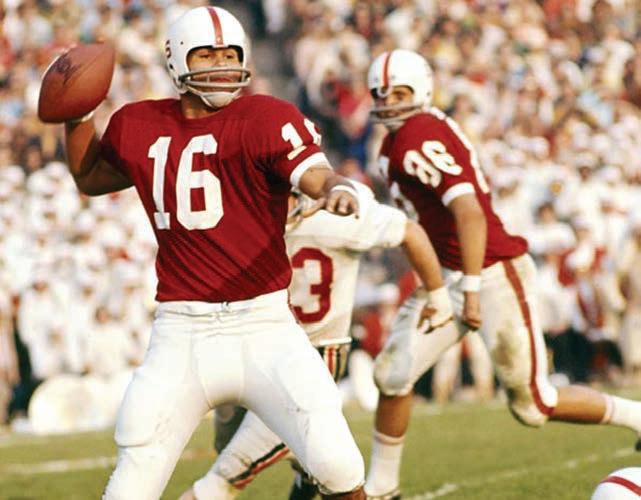
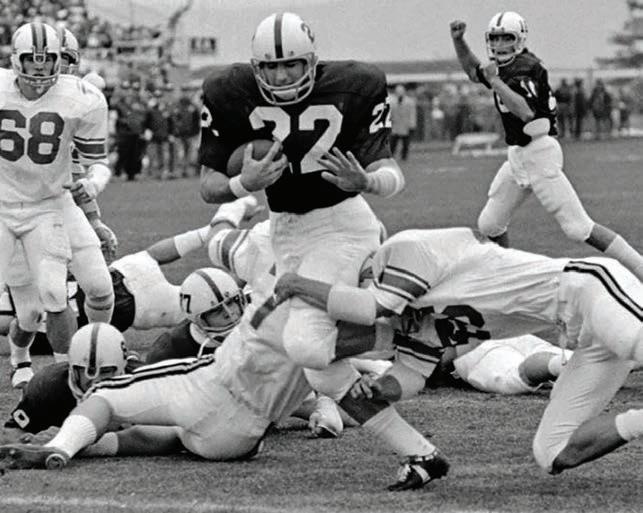
1 John Cappelletti, Penn State 2 John Hicks, Ohio State 3 Roosevelt Leaks, Texas 4 David Jaynes, Kansas 5 Archie Griffin, Ohio State




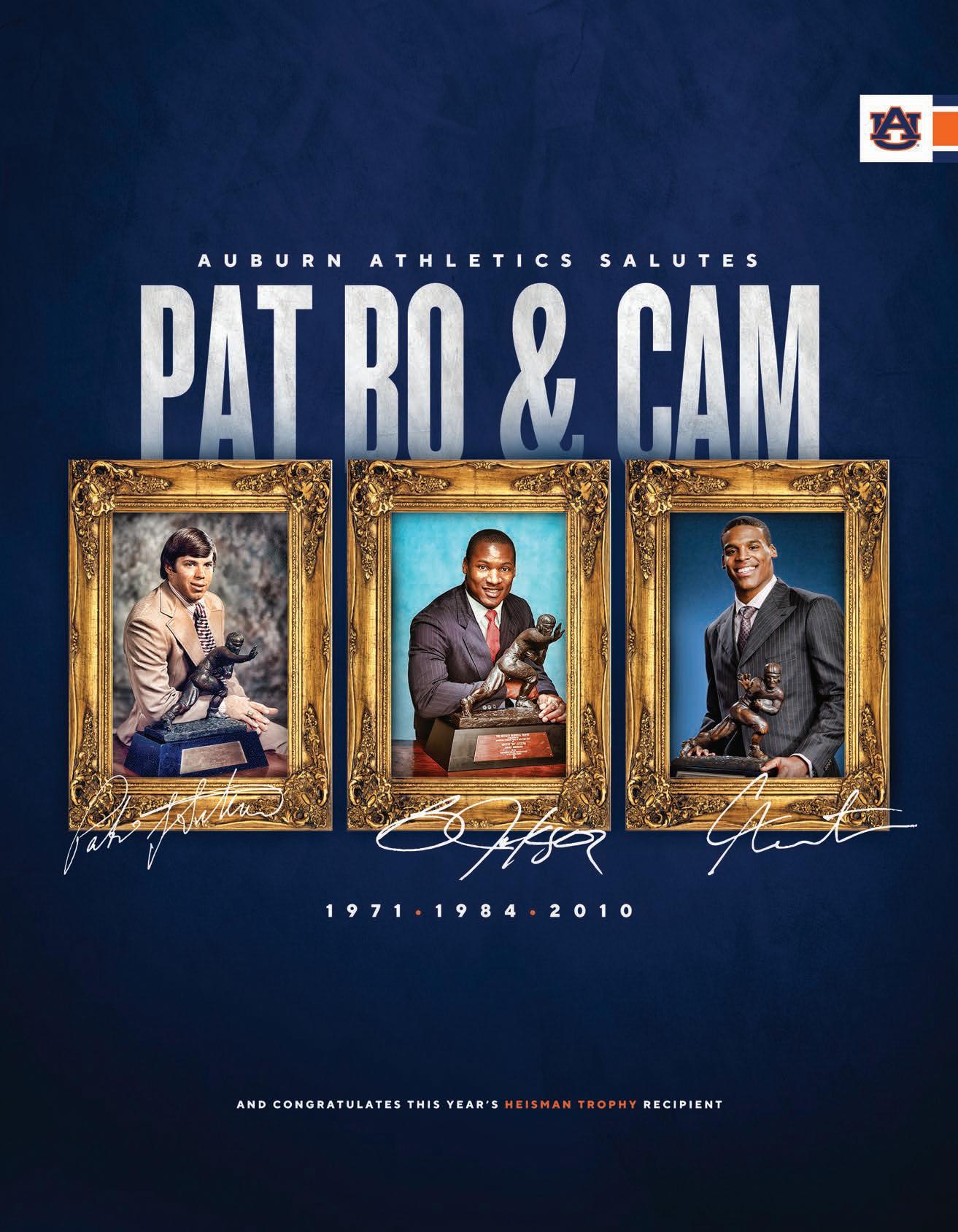


As a junior, Archie Griffin was named to every All-American team and was called “the greatest football player I’ve ever coached” by Woody Hayes. Combining power, speed, and an uncanny ability to break 4 or 5 tackles on a single play, he smashed the all-time record for running backs in the Big Ten, amassing 4,064 yards. As a senior, Archie extended his record of consecutive 100-plus yard games to 31, and his overall yardage to 5,176. Archie was exceptional in many ways: he was magnificently consistent, grinding out 100-plus yards week in and week out, and he was a leader on the field and off, despite his modesty. Archie Griffin is the only player ever to win the Heisman twice: 1974 and 1975. But most of all, Archie reflected the high standards of the Griffin family, which exemplified hard work, devotion to excellence, and resilience. After graduating early from Ohio State with an excellent scholastic record, Archie was signed by the Cincinnati Bengals and played seven seasons. Archie retired in June of 2017 after thirtythree years of service in the Ohio State Department of Athletics (Associate Director), Alumni Association (President and CEO), and Advancement (Senior Advisor). Archie Griffin was elected to the National Football Foundation and College Hall of Fame in 1986.
1 Archie Griffin, Ohio State
Anthony Davis, USC
Joe Washington, Oklahoma
Tom Clements, Notre Dame
Dave Humm, Nebraska
1 Archie Griffin, Ohio State
Chuck Muncie, California
Ricky Bell, USC
Tony Dorsett, Pittsburgh
Joe Washington, Oklahoma

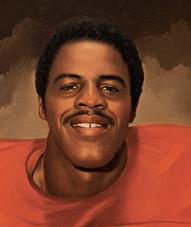
In his fantastic four-year career at Pittsburgh, Tony established so many NCAA records that he deserves his own record book. Just to skim the surface, Tony had most yards gained; most seasons gaining 1,000 yards; most seasons gaining 1,500 yards; most rushes; most yards rushing; most yards gained in a season; as well as many freshman records. As a freshman, Tony weighed only 155 pounds, but a strenuous weight-lifting program brought him up to 192 pounds. Even as a “lightweight” he was a star, finishing thirteenth in Heisman voting as a freshman. The 1976 season saw
Tony eclipse several important marks—the most important being his 1,948 yards rushing which gave him a four-year total of 6,082. Tony equaled the record for most games rushing 100 yards or more (11 for a season, 33 for his career). In winning the Heisman Trophy, Tony beat Ricky Bell, his only serious competition, by an overwhelming 701–73 margin in first place votes. After playing in the collegiate national championship in 1976, Tony went to the Dallas Cowboys for the 1977 season, starting in the backfield under the 1963 winner, Roger Staubach. Tony was named NFL Rookie of the Year in 1977, and played in the Super Bowl. He retired from the NFL in 1990, and is owner of Touchdown Productions. Tony Dorsett was elected to the National Football Foundation and College Hall of Fame and the Pro Football Hall of Fame in 1994.
1 Tony Dorsett, Pittsburgh 2 Ricky Bell, USC
Rob Lytle, Michigan
Terry Miller, Oklahoma State 5 Tom Kramer, Rice


Earl has an affinity for the number “4”: four times he was All-Southwest running back—the first time in that conference’s history one man earned such an honor; his college career in rushing is 4,444 yards; and in his fourth year of college he captured both the Heisman Trophy and consensus All-American. Earl’s top game was in 1977, where he gained 222 yards rushing against Texas A&M. His incredible talent for rushing brought him eighteen games in which he gained 100 yards or more. After graduating with a degree in speech communications from the University of Texas, Earl was the first player drafted by the NFL for the 1978 season by the Houston Oilers. With the Oilers, he showed definite record-breaking tendencies, becoming one of the few rookies in their first season to go over 1,000 yards rushing, and breaking the single season rushing record for a rookie. Earl set the Oilers team record for most touchdowns in a single season and tied the record for touchdowns in a single game. Retired from the NFL, Earl is Assistant to the Athletic Director at the University of Texas, He is also the President of Earl Campbell Foods, Inc., called the fastest growing food company in America. Earl Campbell was elected to the National Football Foundation and College Hall of Fame in 1990 and the Pro Football Hall of Fame in 1991.
1 Earl Campbell, Texas
2 Terry Miller, Oklahoma State
3 Ken MacAfee, Notre Dame
4 Doug Williams, Grambling College
5 Ross Browner, Notre Dame

Billy became the sixth junior to win the Heisman and was the nation’s leading rusher and scorer for 1978, averaging 160.1 yards and 10.9 points. He set the Big Eight Conference single season rushing record of 1,762 on 231 carries for a phenomenal average of 7.6 yards every time he touched the ball. Billy was the only back in the nation’s top 50 to average 7.0 per carry, and became the first player in Big Eight’s history to rush for more than 200 yards in three straight games. In 1978, Billy was elected College Player of the Year by both the Associated Press and the United Press, and was Sports Magazine’s Player of the Year. He finished as the Heisman runner up to Charles White in 1979, then went on to become the NFL’s Rookie of the Year for Detroit in 1980. In 1990, he was inducted into the Michigan Hall of Fame and, in 1994, the Oklahoma Hall of Fame. In 2004 Sims co-founded Billy Sims BBQ and he continues to be actively involved in the day to day running of the company. He spends his days off with his kids and grandchildren. Billy Sims was elected to the National Football Foundation and College Hall of Fame in 1995.
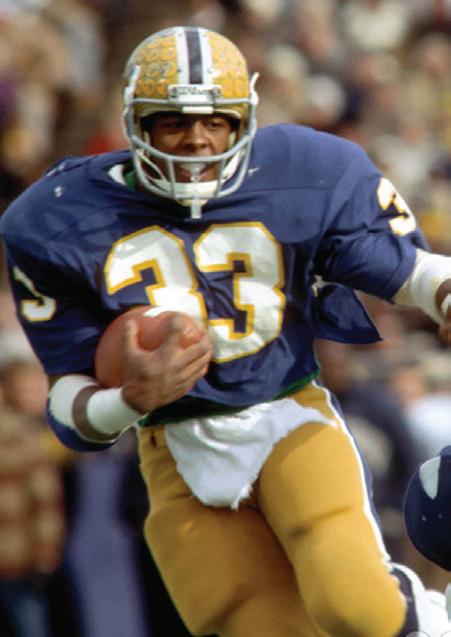
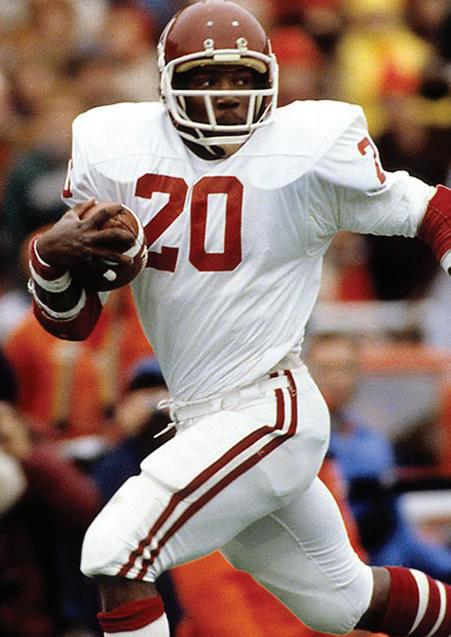
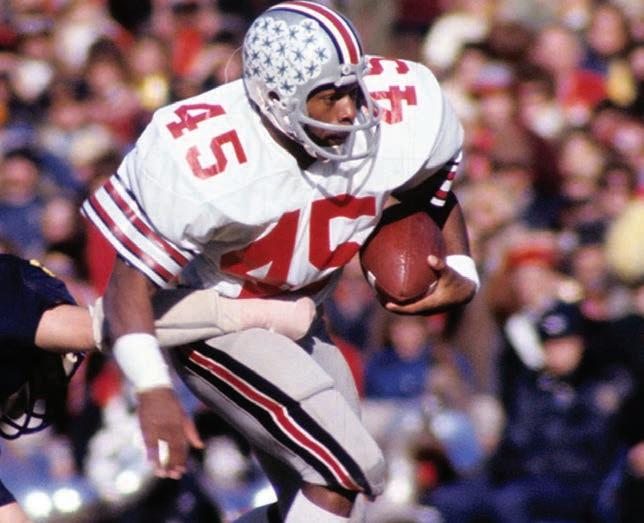
1 Billy Sims, Oklahoma 2 Chuck Fusina, Penn State 3 Rick Leach, Michigan 4 Charles White, USC 5 Charles Alexander, Louisiana State
Coach John Robinson stated, “Charlie is simply the most competitive athlete I’ve ever seen.” Incredibly, as USC’s all-purpose back, Charlie averaged 30 to 40 carries a game. Against Notre Dame, he scored 4 touchdowns, carrying 44 times and rushing for 261 yards. In his regular season career he rushed for 5,598 yards, including Bowl Games: 6,245 yards. Charlie had a lifetime average of 5.4 yards per carry, caught 59 passes for 541 yards, and scored 53 touchdowns—a Pac 10 record. Charlie set a total of 22 records in the NCAA, Pac 10, and USC. In his senior year, he led the nation with an average of 194.1 yards per game and in the last ten games of that year, he averaged 201 rushing yards per game. Charlie graduated with a degree in Speech Communications. Drafted by the Cleveland Browns, he also played for the Los Angeles Rams and led the NFL in rushing in 1987. He has five children, Nicole, Julian, Ashton, Tara, and Sophia, and one granddaughter, Giovanna Lee Hemmen. Charles White was elected to the National Football Foundation and College Hall of Fame in 1996.
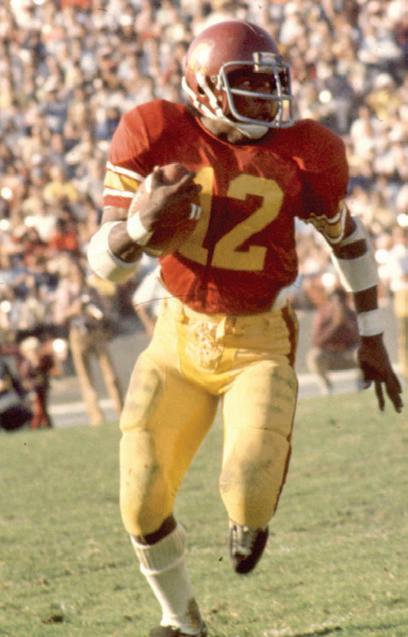
1 Charles White, USC 2 Billy Sims, Oklahoma 3 Marc Wilson, Brigham Young 4 Art Schlichter, Ohio State
Vagas Ferguson, Notre Dame


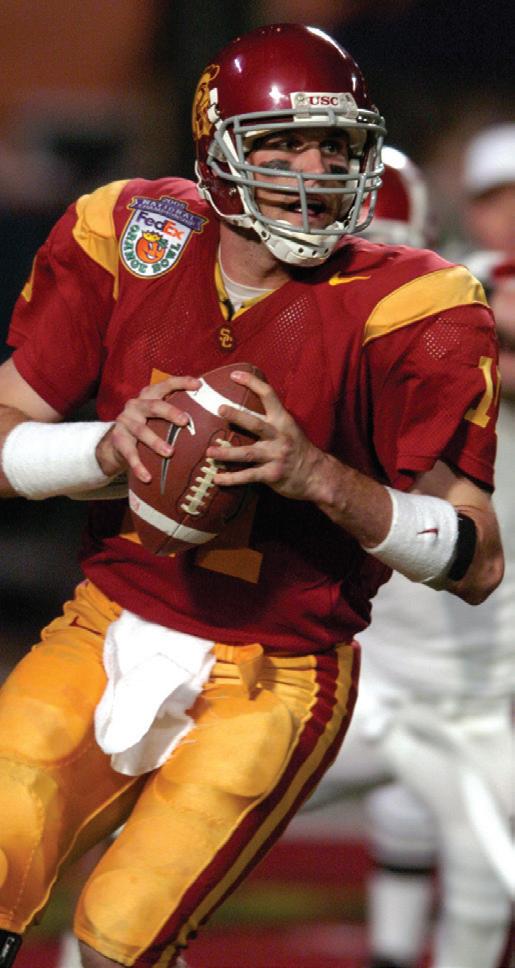
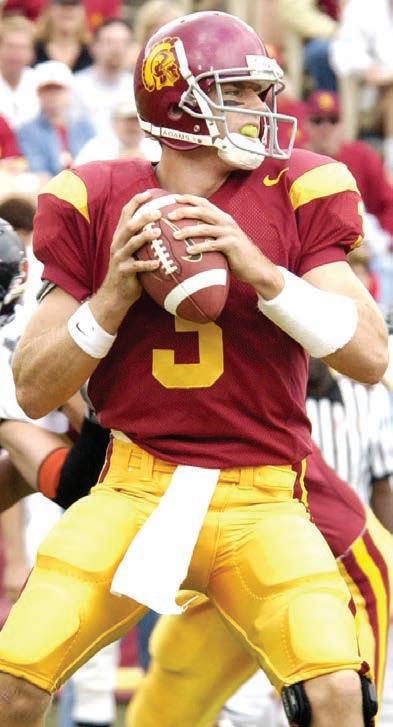


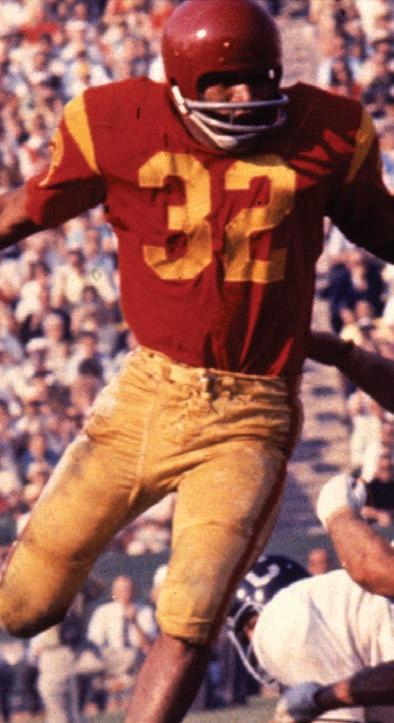

Ball carriers can get pigeonholed as musclers or runabouts, not George. South Carolina backfield coach, Bob Brown, called him “the ideal mix of bigness and quickness.” New Orleans Saints coach, Bum Phillips, who made George the top NFL ’81 draft choice, also noted George’s double edge—he could dodge a defender or run over him. As tailback for the SC Gamecocks, George rolled up twenty-one consecutive, 100-yard games, including every game in his senior year, when he led the nation in rushing with 1,781 yards and tied for third in touchdowns with 14. When the 1980 college season opened, he was a Heisman long shot, but when the voting was over he led decisively, beating out Hugh Green of Pittsburgh. In his first NFL season with the Saints, he was one of the league’s leading ground-gainers. He later won a Super Bowl with the Washington Redskins, and retired from football in 1988. To give back to his community, George started the George Rogers Foundation of the Carolinas, Inc. which provides financial assistance to first-generation college students and support to community-based youth development non-profit organizations. His foundation recently partnered with the University of South Carolina to provide scholarships to former athletes returning to college to complete their degrees. George is the first in his family to attend and graduate from college and wishes others to have the same opportunity that was available to him. George Rogers was elected to the South Carolina Football Hall of Fame in 2013, the Georgia Sports Hall of Fame in 2004 and the National Football Foundation and College Hall of Fame in 1997.

1 George Rogers, South Carolina

Hugh Green, Pittsburgh
Herschel Walker, Georgia
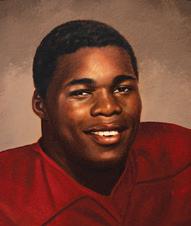
Mark Herrmann, Purdue
Jim McMahon, Brigham Young
1981
USC’s Marcus Allen is the only player in the history of football to win a college National Championship, a Heisman Trophy, an NFL MVP award, a Super Bowl title, and a Super Bowl MVP award. The fourth tailback from the University of Southern California to win the Heisman Trophy, Marcus achieved this honor by being the first rusher to cover more than 2,000 yards in one season. He had eight 200-yard plus games, including the season’s first five in a row—becoming the first player to have five-straight 200-yard games. He finished his senior year with 2,342 yards. In addition to the Heisman, Allen won the Maxwell and Walter Camp Player of the Year awards. On October 31, 1982 in USC’s 41-17 win over
Washington State, Marcus totaled 289 yards on 44 carries and scored 4 touchdowns. Marcus was drafted in the first round by the Los Angeles Raiders and remains the all-time leading rusher in Raiders history. He played professionally until 1997, when he retired from the Kansas City Chiefs. Marcus Allen was elected to the National Football Foundation and College Hall of Fame in 2000 and the Pro Football Hall of Fame in 2003.
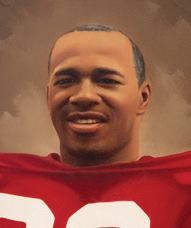

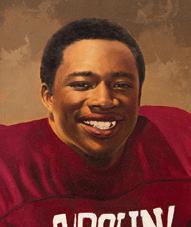
1 Marcus Allen, USC 2 Herschel Walker, Georgia 3 Jim McMahon, Brigham Young 4 Dan Marino, Pittsburgh 5 Art Schlichter, Ohio State
The seventh junior to win the Heisman Trophy, 6-foot-1, 222-pound Herschel amassed an unbelievable 5,097 yards rushing (an NCAA record for yards rushing in three seasons). He exploded for 50 touchdowns in just thirty-two games, averaging 159.3 yards per game and a whopping 5.3 yards per carry. He led the Bulldogs to a National Championship as a freshman and an amazing three-year record of 32 wins and only 2 losses. Following his junior season, Walker decided to go pro. The NFL still didn’t take underclassmen, but the newly-formed USFL did. Walker signed with the New Jersey Generals and became the marquee player in that league. In his three-year USFL career, Walker rushed for 5,562 yards. Then, in a fourteen-year career in the NFL, he played for the Dallas Cowboys, Minnesota Vikings, Philadelphia Eagles, and New York Giants. He returned to the Cowboys for the last year of his career, and retired in 1997. Herschel Walker was elected to the National Football Foundation and College Hall of Fame in 1999.
1 Herschel Walker, Georgia 2 John Elway, Stanford 3 Eric Dickerson, SMU 4 Anthony Carter, Michigan 5 Dave Rimington, Nebraska
Camden, NJ “Mike kept sticking out on the film,” Solich remembers. Mike was a wishbone fullback in high school, yet still managed to gain 300 yards in a single game. During his Heisman year he averaged nearly 8 yards per carry, was also the recipient of the Timmie and Maxwell Awards, and was Walter Camp’s Player of the Year. Mike was a No.1 USFL draft pick by the Pittsburgh Maulers and then the Jacksonville Bulls. He was taken in the supplemental draft by the Houston Oilers in 1984, where he played for 7 years. He finished his NFL career with the Atlanta Falcons in 1991. In 2005 Mike was inducted into the Camden County Sports Hall of Fame and the New Jersey Sports Hall of Fame. Besides charity events sponsored by the HWA and the Heisman Trust, Mike started his own foundation, the Michael T. Rozier Cancer Foundation (mikeroziercancerfoundation.org). A 501(c)(3) charity, its mission is to assist cancer patients and their families with unexpected ancillary expenses—to fulfill their needs right here, right now. Immediate concerns like food, transportation to and from treatment, parking and lodging are the main focus. Mike also supports the Beacon Schools, Rotary Club of Winslow Township, and the foundations of many other Heisman winners. Mike Rozier was elected to the National Football Foundation and College Hall of Fame in 2006.
1 Mike Rozier, Nebraska 2 Steve Young, Brigham Young

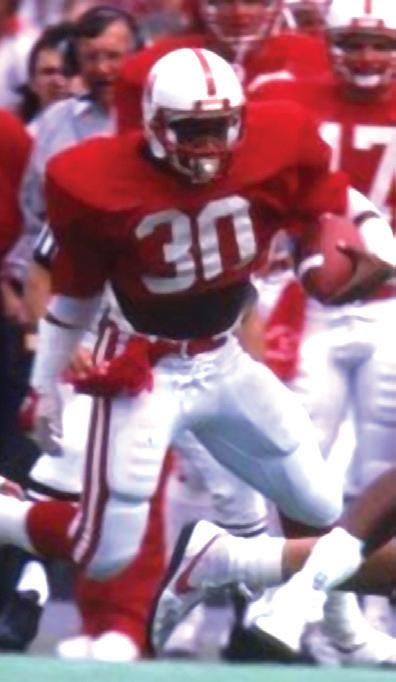

Doug Flutie, Boston College 4 Turner Gill, Nebraska
Terry Hoage, Georgia
Doug set the NCAA all-time passing yardage mark while winning BC’s first Heisman in 1984. The first major college football passer to surpass 10,000 career yards (10,579), Flutie was a surefire combination of derring-do, charisma, and dazzling football skills. He had a remarkable senior year, throwing for 3,454 yards and 27 touchdowns as the Eagles finished 9-2, ranking eighth in the polls. Of course, everyone remembers his dramatic last-second bomb to Gerard Phelan that led BC over Miami, 47-45. From 1985–88 he played for the USFL New Jersey Generals. After a brief stint in the NFL, Doug went to the Canadian Football League from 1991–97 and was a six-time CFL Outstanding Player of the Year, threetime Grey Cup MVP, and the first CFL player to throw for 6,000 yards in a season. Doug returned to the NFL in 1998 and he played three seasons with the Buffalo Bills. He was the NFL’s Comeback Player of the Year in 1998 and was selected to the Pro Bowl. In 1999, Doug led the Bills to the playoffs and was a Pro Bowl alternate. Doug played for the Chargers from 2001–04, and with the Patriots in 2005, before retiring. He is currently a broadcast analyst for NBC Sports, covering Notre Dame football. In 1998, he established the Doug Flutie, Jr. Foundation for Autism in honor of his son who was diagnosed with the disability. To date, the foundation has raised over $10 million for children with autism. A member of the Flutie Brothers Band, he won “Monday Night at the Mic” on ABC’s Monday Night Football. Doug and his wife, Laurie, have two children, Alexa and Dougie Jr. Doug Flutie was elected to the National Football Foundation and College Hall of Fame in 2007.

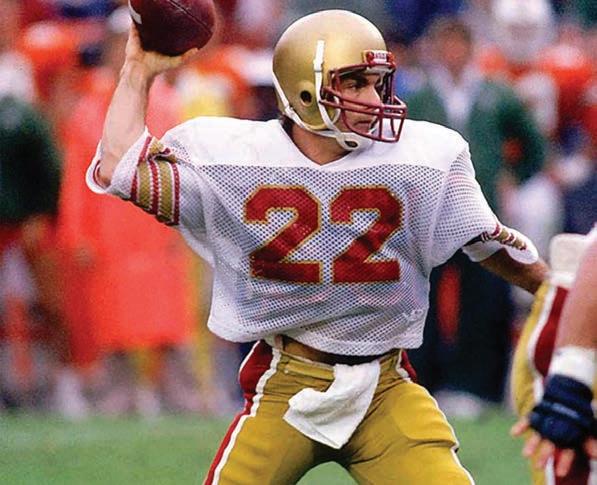


Bo Jackson, Auburn’s great running back and second Heisman winner, is such a remarkable all-around athlete that if there were any Heisman awards in baseball or track and field he would almost certainly have won them too. As the nation’s premier ball-carrier, Bo was the spearhead of Auburn’s return to football prominence. Under the direction of Coach Pat Dye, the school produced the best teams since the National Championship days of 1957, when the Reverend Ralph “Shug” Jordan coached the Tigers to first place in the Associated Press poll. In his freshman year, Bo averaged 6.4 yards per rush, sprinted a 6.18 second sixty-yard dash for the track team, and hit .279 as the starting centerfielder in baseball. In 1985, he led the nation in all four main categories of ball-carrying— total rushing yardage, average per carry, touchdowns scored, and yards per game—as late as the eighth week of the season. Jackson was drafted by the Tampa Bay Bucaneers, but opted instead to play baseball for the Kansas City Royals, the defending World Series champions, who had selected him in the fourth round in the 1986 amateur draft. He played serveral seasons with the Royals, White Sox and Angels, while also returning to football to play for the Los Angeles Raiders. Vincent “Bo” Jackson was elected to the National Football Foundation and College Hall of Fame in 1998. Balloting 1 Bo Jackson, Auburn
Chuck Long, Iowa


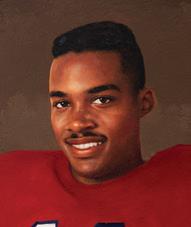
Vinny, like all great quarterbacks, knows that his offensive line makes or breaks the day, and no one is more generous with his praise than the 6-foot-5, 235-pound aerial wizard from Elmont, Long Island. Oklahoma’s Barry Switzer, the most successful of college football coaches, said of Vinny after he had thrown 4 touchdowns passes to beat his No. 1-ranked Sooners earlier in the season: “In twenty-one years, I have never seen a better quarterback.” To add statistical weight to Switzer’s appraisal, consider that in the first nine games of the 1986 season, Vinny had completed 154 passes in 242 attempts for 2,249 yards and 24 touchdowns. His completion percentage was 63.6, but even

more impressive was that he threw only 8 interceptions. He was Miami’s then-all-time leader in career touchdown passes with 46. Vinny was the No. 1 selection for the Tampa Bay Buccaneers, and played twenty-one years in the NFL: six with Tampa Bay, three with the Cleveland Browns, two with the Baltimore Ravens (voted to first Pro Bowl), seven with the New York Jets (voted to second Pro Bowl), and one each with the Dallas Cowboys, New England Patriots, and Carolina Panthers. He and his wife, Mitzi, have two daughters, Alicia Marie and Madeleine, and a son, Vincent, Jr. Vinny Testaverde was elected to the National Football Foundation and College Hall of Fame in 2013.
1 Vinny Testaverde, Miami 2 Paul Palmer, Temple
Jim Harbaugh, Michigan 4 Brian Bosworth, Oklahoma 5 Gordon Lockbaum, Holy Cross
The single attribute that sets the great football player apart from the merely good one is the ability to turn the game around on one play. More than any other college star of the 1987 season, Tim possessed this rare talent. Tim Brown, who did everything on a football field except sell tickets, was the seventh Trophy recipient from Notre Dame. He caught passes, ran back punts and kickoffs, rushed when necessary, and drove any defense to distraction just by being on the field. At 6-feet and 195-pounds, Brown was not huge by football standards, but he had great speed, elusiveness in the open field, sure hands, and a fine grasp of the strategy and tactics of what is, in reality, a complex game. Lou Holtz said “He is the most intelligent player I’ve ever been around.” As a measure of Tim’s versatility, consider his statistics for the first nine games of the 1987 season: 32 pass receptions for 729 yards and 3 touchdowns, 29 rushes for 133 yards and 1 touchdown, 19 kickoff returns for 398 yards, and 31 punt returns for 380 yards and 3 touchdowns. Tim played sixteen seasons with the Los Angeles/ Oakland Raiders and one with the Tampa Bay Buccaneers before retiring from the NFL after the 2004 season. Tim Brown was elected to the National Football Foundation and College Hall of Fame in 2009 and the Pro Football Hall of Fame in 2015.
1 Tim Brown, Notre Dame
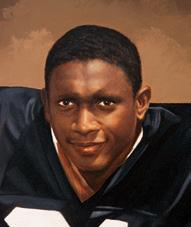

2 Don McPherson, Syracuse
3 Gordon Lockbaum, Holy Cross
4 Lorenzo White, Michigan State
5 Craig Heyward, Pittsburgh
Robbie Bosco, Brigham Young
Lorenzo White, Michigan State
Vinny Testaverde, Miami
Barry set 34 NCAA records in 1988. A running back averaging 100 yards a game is considered superior; Barry obliterated that statistic by averaging 249 rushing and 300 all-purpose yards per game during Oklahoma State’s 1988 season. In addition, he shattered several NCAA single season and career marks: setting a new NCAA all-time rushing record with a regular season total of 2,628 yards, the then all-purpose yards record with 3,249 yards, and the touchdowns scored record with 39 in just 11 games. He also added another 222 yards and 5 touchdowns in the ‘88 Holiday Bowl. Barry is the only Heisman winner to be notified of his achievement in Tokyo, Japan, where he and his Cowboy teammates were awaiting the final game of the season. Barry was the Detroit Lions’ 1st round pick in the 1989 draft and continued to mesmerize defenses with his awesome speed, versatility, and evasive maneuvers. He was named the 1989 Rookie of the Year, 1991 and 1994 NFC Most Valuable Player of the Year, and 1994 NFL Performer of the Year. He was the NFL MVP in 1997 and the fifth running back to rush for 2000 yards in a season (2053). He was a ten-time Pro Bowl selection and is an eight-time all-NFL and Pro Bowl player, retiring from the NFL in 1999. Barry donates a tremendous amount of time and money to local charities and religious organizations in Detroit, Oklahoma, and his hometown of Wichita, Kansas. Barry Sanders was elected to the National Football Foundation and College Hall of Fame in 2003 and the Pro Football Hall of Fame in 2004.

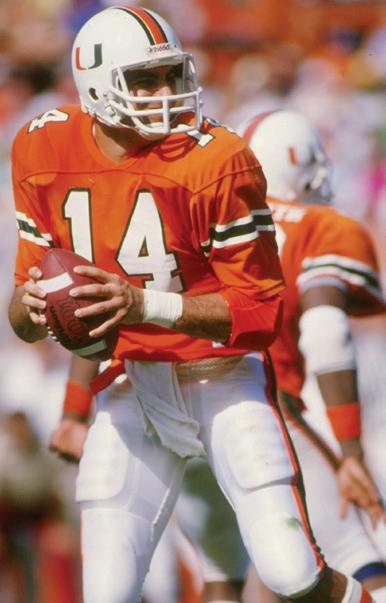


Balloting 1 Barry Sanders, Oklahoma State 2 Rodney Peete, USC 3 Troy Aikman, UCLA 4 Steve Walsh, Miami 5 Major Harris, West Virginia
Andre won Houston’s first Heisman with one of the great passing seasons in NCAA history. He threw for 4,699 yards and 46 touchdowns as Houston averaged 53.5 points per game. His list of accomplishments included a 95–21 drubbing of SMU, the most points ever scored by a team with a Heisman winner. Andre set 26 NCAA records as Houston finished 9-2 and ranked 14th nationally. His arrival at Houston in 1987 coincided with the start of the run and shoot offense of new Cougars head coach Jack Pardee. Ware was custom-made for this system. However, he broke his arm five games into his first season and was lost the rest of the way. Ware rebounded as a 1988 sophomore, earning the starting job and throwing for 2,507 yards and 25 touchdowns as the Cougars improved from 4-6-1 to 9-3. After winning the Heisman as a junior, he was drafted in the first round by the Detroit Lions. He later played for the Toronto Argonauts of the CFL. He was signed by the Oakland Raiders in 1998, and retired from the NFL in 1999. Andre Ware was elected to the National Football Foundation and College Hall of Fame in 2004.
1 Andre Ware, Houston 2 Anthony Thompson, Indiana 3 Major Harris, West Virginia 4 Tony Rice, Notre Dame 5 Darian Hagan, Colorado
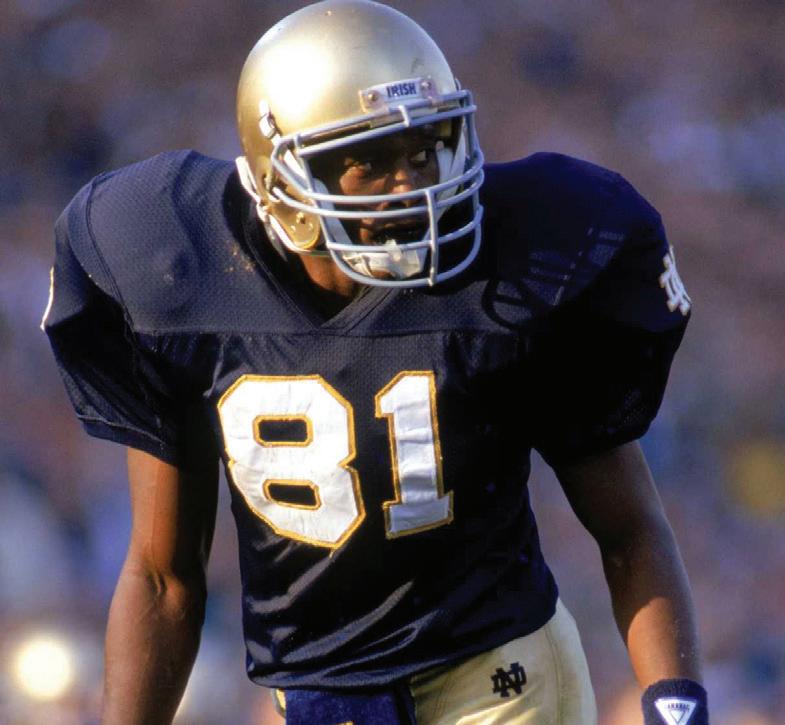 1989 Ware
1989 Ware
At 6-feet, 174-pounds, Ty was the brilliant junior quarterback of the Brigham Young University Cougars. To football fans who love the aerial game, the names of Gifford Nielson, Marc Wilson, Jim McMahon, Steve Young, and Robbie Bosco are enshrined in the pantheon of great passing quarterbacks. Add to this list—Ty Detmer. “If there’s such a thing as a coach’s dream,” said BYU’s coach LaVall Edwards, “Ty’s it. He is the best quarterback in the country. He’s as good at executing, reading, and knowing what to do as anybody I’ve seen.” In the crucial early season encounter with the No. 1 ranked Miami Hurricanes at Provo, Ty was at his best, passing for more than 400 yards as the Cougars registered a stunning 28–21 upset. He was even better in rallying his team to a 50–36 victory over Washington State in a game where BYU seemed hopelessly behind at half-time. A 43-point second half, achieved largely through Ty’s heroics, brought the victory. By season’s end, he had a Heismanrecord 5,022 yards of total offense. In his professional career, Ty played for the Green Bay Packers, Philadelphia Eagles, San Francisco 49ers, Cleveland Browns, Detroit Lions, and Atlanta Falcons. He and his wife, Kim, have four daughters. Ty Detmer was elected to the National Football Foundation and College Hall of Fame in 2012.


1 Ty Detmer, Brigham Young

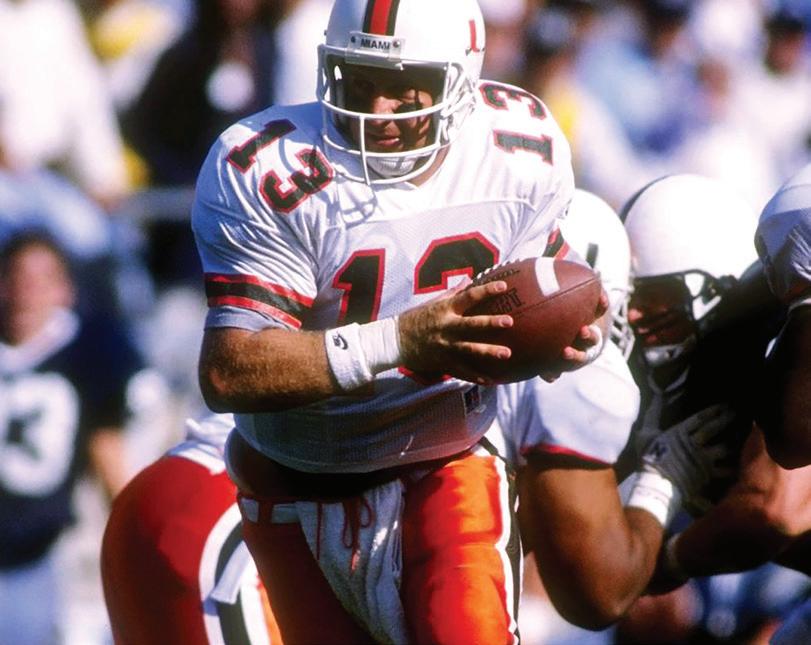
2 Raghib Ismail, Notre Dame
3 Eric Bieniemy, Colorado
4 Shawn Moore, Virginia
5 David Klingler, Houston

The 5-foot-10 junior sensation from Cleveland became the second Heisman recipient from Ann Arbor. It was in the Notre Dame game that Desmond showed a spellbound national television audience just why he was the heart and soul of the 1991 Maize and Blue. With Michigan desperate to end a string of four consecutive defeats at Notre Dame’s hands, an early Wolverine surge had run out of steam; the Fighting Irish were poised to take the lead. Then, quickly, Michigan moved into Notre Dame territory. On a crucial fourthdown-and-inches play, Wolverine quarterback Elvis Grbac launched a high floating spiral, the mercurial Desmond raced under it, leaped as far as he could, and cradled the ball in his out-stretched hands for the touchdown that gave Michigan one of its most cherished victories. The play is enshrined in Ann Arbor lore as “The Catch.” In game after game, Desmond made dazzling receptions, ran kickoffs back with reckless abandon and wondrous facility for using his blockers to full open-field advantage, and carried the ball brilliantly on wide-sweeping reverses. Desmond was drafted in the first round by the Washington Redskins and was the MVP of the 1997 Super Bowl for the Green Bay Packers. He retired from the NFL in 2002. Desmond Howard was elected to the National Football Foundation and College Hall of Fame in 2010.

1 Desmond Howard, Michigan 2 Casey Weldon, Florida State 3 Ty Detmer, Brigham Young 4 Steve Emtman, Washington 5 Shane Matthews, Florida
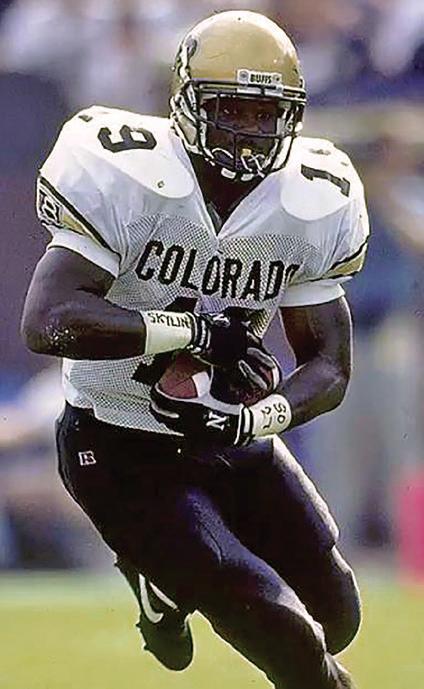 1994 Salaam
1993 Ward
1992 Torretta
1991 Howard
1994 Salaam
1993 Ward
1992 Torretta
1991 Howard

At 6-feet 3-inches, and 205 pounds, senior Gino Torretta was key to the extraordinary success of his team. Against archrival Florida State, one of the strongest teams in the nation, it came down to the fourth quarter. On the crucial third down and long yardage play, Gino came through with a thrilling 14-yard run that left the Florida State defense awestruck. As clever a quarterback as college football had seen in years, he quickly exploited the defense and threw a touchdown to win the game. “Gino showed everybody he is the best quarterback in college football,” said coach Dennis Erickson. Florida State coach Bobby Bowden captured the essence of the day when he noted: “I can sum up this game in one word—‘Torretta.’ Torretta was great.” Gino, the latest in a long line of stand-out Miami quarterbacks, eclipsed all other Hurricane QBs in the record book, with 7,000 aerial yards. After spending five seasons in the NFL, Gino is a Senior Vice President for Gabelli Asset Management Company headquartered in Rye, NY. He is also the Chairman and CEO and the game analyst for Touchdown Radio, which broadcasts a nationally syndicated radio college football game every week. Gino, his wife Bernadette, and their daughter reside in Miami, where they have established The Torretta Foundation to support research in ALS and Myasthenia Gravis. Gino Torretta was elected to the National Football Foundation and College Hall of Fame in 2009.
Gino Torretta, Miami
Marshall Faulk, San Diego State
Garrison Hearst, Georgia
Marvin Jones, Florida State
Reggie Brooks, Notre Dame

In 1993 Charlie Ward won Florida State’s first Heisman Trophy, giving FSU and head coach Bobby Bowden its first-ever national title. Ward’s margin of victory was a massive 1,622 points, second largest lead at the time. Ward won over thirty college football awards, received a No. 1 AP ranking and set nineteen school and seven Atlantic Coast Conference records. A native of Thomasville, Georgia, Charlie was the sparkplug on three Seminole NCAA Tournament basketball teams, pushing the Seminoles to the brink of the 1993 Final Four, falling one game shy. Ward’s still holds Seminole basketball records for steals (9) and career (236) and ranks sixth all-time in assists (396). He’s the only Heisman winner to play in the NBA. After graduating from FSU, Ward was drafted twice by Major League Baseball before being a first-round
draft pick in 1994 by the New York Knickerbockers. He went on to help the Knicks reach the playoffs from 1996 to 2001, leading the team to their second Eastern Conference championship and NBA Finals in 1999. He played eleven seasons in New York, San Antonio, and Houston, and served as an assistant coach with the Rockets. Following a high school football coaching career, Ward is the head coach of The Florida State University School men’s basketball team. He co-hosts the weekly Chalk Talk with Charlie television segment on Fox 49’s Live in Tallahassee. Ward and his wife Tonja have been married for 23 years and have three children, Caleb, Hope and Joshua. They founded the Charlie Ward Family Foundation to leave a legacy of giving back to youth development programs and organizations. Charlie Ward was elected to the National Football Foundation and College Hall of Fame in 2006.
1 Charlie Ward, Florida State
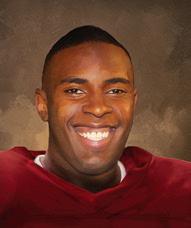
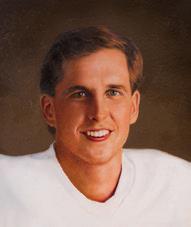
2 Heath Shuler, Tennessee
3 David Palmer, Alabama 4 Marshall Faulk, San Diego State 5 Glenn Foley, Boston College

The 6-foot 1-inch, 215-pound running back gained 2,055 yards rushing during his Heisman year and joined fellow Heisman winners Marcus Allen, Mike Rozier and Barry Sanders as the first four Division I players to gain more than 2,000 rushing yards in a season. Rashaan rushed for 165 yards against Michigan in Michigan Stadium before 106,000 spectators—the largest crowd to see a Colorado team in action. He led the Buffaloes to an 11-1 season capped by a 3-touchdown performance in the 1995 Fiesta Bowl. Always humble, Rashaan acknowledged the importance of his teammates: “Without my offensive linemen,” he said, “I would not have been honored with the greatest award in amateur athletics.”
As a junior, Rashaan was a unanimous All-American selection and led the nation in rushing (186.8 yards per game), scoring (13.1) and all-purpose yards (213.6). He was selected by the Chicago Bears in the first round of the 1995 NFL draft with the twenty-first overall pick. Rashaan moved from the gridiron into the international business arena and was on the Board of Directors for the Adoria Group, Ltd, a sports and entertainment group based in Beijing, promoting Mixed Martial Arts in mainland China. Rashaan Salaam passed away in 2016. He was elected to the National Football Foundation and College Hall of Fame in 2022.
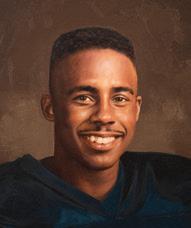
1 Rashaan Salaam, Colorado

2 Ki-Jana Carter, Penn State
3 Steve McNair, Alcorn State
4 Kerry Collins, Penn State
5 Troy Davis, Iowa State
College Football Hall of Fame - Electing and inducting the greatest players and coaches in the history of college football; forever recognized at the Chick-fil-A College Football Hall of Fame in Atlanta.
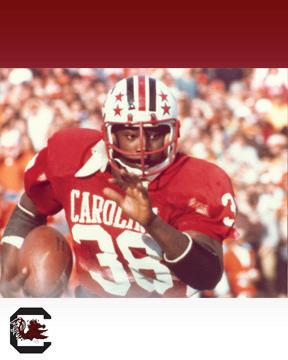
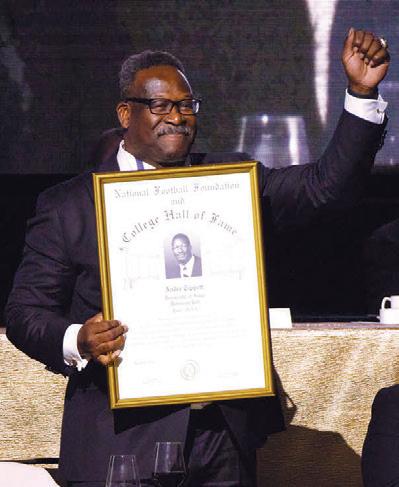
Future For Football® - Celebrating the positive impact the game has made on millions of players, coaches, administrators, volunteers and fans nationwide.
William V. Campbell Trophy® and National Scholar-Athlete Awards - Awarding the Campbell Trophy® to college football’s top scholar-athlete. Recognizing the National Scholar-Athlete Class presented by Fidelity Investments. Bestowing postgraduate scholarships.


Chapter Network - Distributing $1 million in scholarships annually and holding local events to promote amateur football through 120 chapters in 47 states while reaching more than 5,000 high schools annually.
Join the NFF - Visit footballfoundation.org to become an NFF member and support the game of football while receiving special benefits including a vote on the College Football Hall of Fame ballot and NFF-branded t-shirts and mugs.
www.footballfoundation.org


Eddie captured Ohio State University’s sixth Heisman Trophy. At 6-feet 3-inches, and 227 pounds, the gifted senior tailback gained 1,877 yards rushing for a 152.2 per game average, and scored 23 touchdowns. He also caught 44 passes for 399 yards and 1 touchdown, leading the nation in scoring with an average of 12 points per game. Eddie rushed for over 100 yards in elevenstraight games after gaining 99 in the Kickoff Classic against Boston College. He accomplished all of these feats while rarely playing more than three quarters. Eddie’s finest game was at home, in Ohio Stadium, against a tough Illinois defense. During the 41-3 romp, the Buckeyes rushed for 314 yards and scored 3 touchdowns, 2 rushing and 1 receiving. Coach John Cooper said of Eddie: “I’ve been coaching thirty-three years and this young man has got the best work ethic of any football player I’ve been around. Obviously he’s a great football player, but this award could not go to a finer person, both on the field and off the field, than Eddie George.” Eddie was selected by the Houston Oilers in the first round of the 1996 NFL draft with the 14th overall pick. He was named to the Pro Bowl in 1997, 1998, 1999, and 2000. He is currently a Broadway actor. Eddie George was elected to the National Football Foundation and College Hall of Fame in 2011.
Eddie George, Ohio State
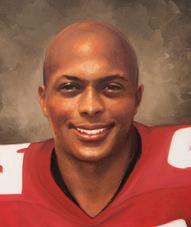
Tommie Frazier, Nebraska
Danny Wuerffel, Florida

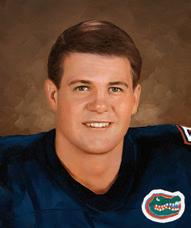
Darnell Autry, Northwestern
Troy Davis, Iowa State


At 6-feet 2-inches and 212 pounds, Danny is the second Florida Gator to capture the award and the first Heisman winner whose head coach, Steve Spurrier, was another recipient of the Trophy. Danny, of Fort Walton Beach, Florida, led the Gators to the National Championship title in 1996 with a 12-1 record. The Gators beat the Florida State Seminoles in the Sugar Bowl to claim their title. In 1996, Danny passed for 3,625 yards with a pass efficiency of 167.86. He threw for 36 touchdown passes for the season, compared with only 13 interceptions. Danny graduated from the University of Florida’s School of Journalism and Public Relations
with a degree in Public Relations. He was selected in the fourth round of the 1997 NFL draft by the New Orleans Saints. After three years with the Saints, Danny led the NFL Europe’s Rhein Fire to a World Bowl Championship. He then played for one season each with the Green Bay Packers, Chicago Bears, and Washington Redskins. Danny now works full-time as Executive Director of Desire Street Ministries, based in Atlanta, Georgia. Desire Street works with leaders to revitalize under-resourced neighborhoods through spiritual and community development. Danny Wuerffel was elected to the National Football Foundation and College Hall of Fame in 2013.
1 Danny Wuerffel, Florida 2 Troy Davis, Iowa State 3 Jake Plummer, Arizona State 4 Orlando Pace, Ohio State 5 Warrick Dunn, Florida State
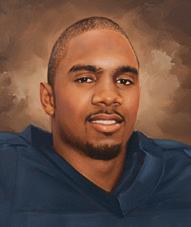

Charles was the third Michigan Wolverine to win the Heisman Trophy, joining Desmond Howard and Tom Harmon. At 6-feet 2-inches and 200 pounds, the exciting junior cornerback garnered numerous post-season honors including First Team All-American by the American Football Coaches Association. Charles finished the season with 8 interceptions. He is a versatile player who also saw time as a receiver on offense and as a dangerous punt returner on special teams. The Wolverines finished the season with a 21–16 victory over Washington State in the Rose Bowl to go 12-0 on the season and to claim a share of the National Championship with Nebraska. Woodson won the Heisman over Tennessee’s Peyton Manning, making him the first two-way player in a generation to win the award. Charles was drafted fourth overall by the Oakland Raiders in 1998 and was named the 1998 NFL Defensive Rookie of the Year. He won a Super Bowl with the Green Bay Packers in 2011, returned to the Oakland Raiders in 2013 and retired after the 2015 season. Charles Woodson was elected to the National Football Foundation and College Hall of Fame in 2018 and the Pro Football Hall of Fame in 2021.
1 Charles Woodson, Michigan 2 Peyton Manning, Tennessee 3 Ryan Leaf, Washington State 4 Randy Moss, Marshall 5 Ricky Williams, Texas
The 6-foot, 225-pound running back is the second Texas Longhorn to win the Heisman Trophy. Ricky also garnered numerous post-season honors including the Walter Camp Football Foundation Player of the Year Award, the Doak Walker Award, and the Maxwell Award, as well as being named the Big 12 Offensive Player of the Year. Ricky holds or shares twenty NCAA records, and broke Tony Dorsett’s 22-year old NCAA career-rushing mark in 1998 with 6,279 yards. Ricky and the Longhorns finished the 1998 season with a 38–11 victory over Mississippi State in the Cotton Bowl, to go 9-3 on the season. He was drafted fifth overall by the New Orleans Saints in the 1999 NFL draft, the first time in NFL history that one player had been a team’s entire draft class. Ricky retired from the NFL in 2011. He was an assistant football coach at the University of The Incarnate Word. Ricky Williams was elected to the National Football Foundation and College Hall of Fame in 2015.

Balloting 1 Ricky Williams, Texas 2 Michael Bishop, Kansas State 3 Cade McNown, UCLA 4 Tim Couch, Kentucky 5 Donovan McNabb, Syracuse
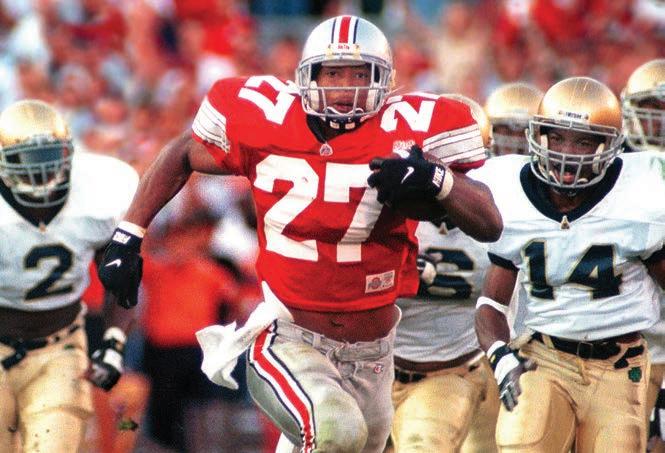
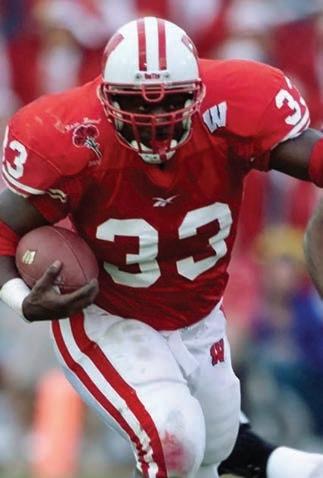

At 5-feet 10-inches and 252 pounds, Ron is the second Wisconsin Badger, following Alan Ameche, to win the Heisman Trophy. During Ron’s four-year career at Wisconsin, the Badgers complied a 37-13 record and won two Big Ten titles. Ron led the Big Ten in rushing 3 times in his illustrious career. Ron’s 6,397 career rushing yards was an NCAA record until 2016. Ron and the Badgers finished the season with a 17–9 victory over Stanford in the Rose Bowl to go 10-2 on the season. Dayne is the only Big Ten player in history to win back-to-back Rose Bowl MVP awards. He was also named the Big Ten Offensive Player of the Year. Ron was drafted eleventh overall by the New York Giants in the 2000 NFL draft. Ron Dayne was elected to the National Football Foundation and College Hall of Fame in 2013.
Balloting 1 Ron Dayne, Wisconsin
Joe Hamilton, Georgia Tech

Michael Vick, Virginia Tech
Drew Brees, Purdue
Chad Pennington, Marshall
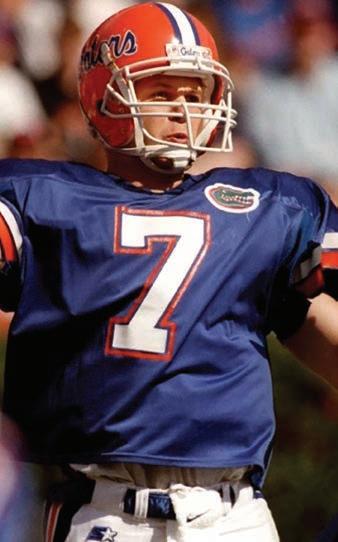
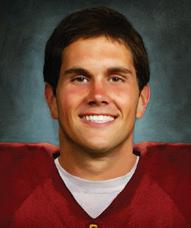
At 6-feet 5-inches and 230 pounds, Chris is the second Florida State Seminole to win the Heisman Trophy. Chris was the first three-year starter at quarterback in the twenty-two-year tenure of Florida State Head Coach, Bobby Bowden. In 1999, Chris led the Seminoles to their first undefeated season and their second national title. Charlie Ward, the 1993 Heisman Trophy winner, led Florida State to their first national title in 1993. Chris led the Seminoles to three straight national championship games and compiled a 32-3 record at Florida State as the starting quarterback. During Chris’s Heisman winning season, he led the nation in passing with 4,167 yards during the regular season for an average of 347.3 yards per game. Chris is the second quarterback in NCAA history to pass for more than 9,500 career yards and win a national championship, and is the ACC and FSU record holder for career passing yardage as well as career touchdown passes. Chris was drafted by the Carolina Panthers in the fourth round (106th overall) of the 2001 NFL draft. He played with the Panthers and the 49ers before retiring. He eventually moved on to a coaching career, taking a job as the quarterbacks coach for the St. Louis Rams.
1 Chris Weinke, Florida State
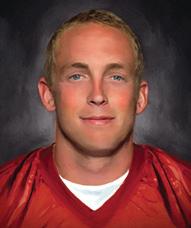

Josh Heupel, Oklahoma
Drew Brees, Purdue
LaDainian Tomlinson, Texas Christian
Damien Anderson, Northwestern


At 6-feet 1-inch and 200 pounds, Eric is the third Cornhusker to capture the Heisman. He set the all-time record for total offense in the Big 12 with 7,915 and is the 13th player in NCAA Division 1-A history to run and throw for more than 1,000 yards in a season. Entering his senior year with 2,319 rushing yards and 41 touchdowns, already more than any other Nebraska quarterback, Eric added to his totals with 1,510 passing yards and 1,115 rushing through twelve games. His 18 rushing touchdowns in 2001 brought his career total to 59 while his 7 touchdown passes gave
him 29 for his career. Eric ran for more than 100 yards a halfdozen times, and guided his team into the top 10 each year he was at the helm of the offense. Eric was drafted in the third round by the St. Louis Rams, and also spent time in Germany with Hamburg Sea Devil NFL Europe. He played for the Toronto Argonauts for the 2006–07 seasons as quarterback and for the Omaha Nighthawks of the UFL in 2011. He is the owner of Crouch Recreation in Omaha, Nebraska. He currently resides in Omaha, Nebraska, with his wife Nicole and their two children, Lexi and Carsen. Eric Crouch was elected to the National Football Foundation and College Hall of Fame in 2020.
1 Eric Crouch, Nebraska 2 Rex Grossman, Florida 3 Ken Dorsey, Miami 4 Joey Harrington, Oregon 5 David Carr, Fresno State

Carson was the fifth Trojan to capture the award, following Mike Garrett, O.J. Simpson, Charlie White, and Marcus Allen. At 6-feet 5-inches, the experienced, strong-armed Palmer was a fouryear starter and the Pac 10’s career passing and total offense leader. Carson set seven Pac 10 career records and such USC records as: total offense (a Pac 10 record 11,621), plays (a Pac 10 record 1,824), passing yardage (a Pac 10 record 11,818), passing touchdowns (72, third on the Pac 10 ladder), completions (a Pac 10 record 927), and attempts (a Pac 10 record 1,569). Carson finished his USC season with a win at the 2003 Orange Bowl where he was selected as the MVP. He went on to be the No. 1 pick in the 2003 NFL draft. From 2004–11, he was the starting quarterback of the Cincinnati Bengals, played for the Oakland Raiders from 2011–12 and the Arizona Cardinals from 2013–2017. He retired from the NFL in January 2018. Carson Palmer was elected to the National Football Foundation and College Hall of Fame in 2021.
1 Carson Palmer, USC 2 Brad Banks, Iowa 3 Larry Johnson, Penn State 4 Willis McGahee, Miami 5 Ken Dorsey, Miami
At 6-feet 2-inches and 220 pounds, Jason became the fourth Sooner to win the Heisman Trophy following Billy Vessels, Steve Owens, and Billy Sims. Jason led his team to twelve straight victories, throwing for a school record of 40 touchdown passes in a season and securing a spot for the Sooners to play in the Sugar Bowl. At Oklahoma, Jason is ranked second in passing yards in a season with 3,744. In 2003, Jason was the recipient of the Associated Press Player of the Year, consensus All-American, consensus Big 12 Player of the Year, Davey O’Brien Award, and the Jim Thorpe Courage Award. He returned to the University of Oklahoma for the 2004–2005 season to complete his NCAA eligibility. Jason is partnered with Air Comfort Solutions Heating and Air in OKC and Tulsa, and also owns Jason Whites Store Divided, a colligate sports apparel store. Jason resides in his hometown of Tuttle, Oklahoma with his wife Tammy and their two children Tinley and Tandon.

Jason White, Oklahoma
Larry Fitzgerald, Pittsburgh
Eli Manning, Mississippi
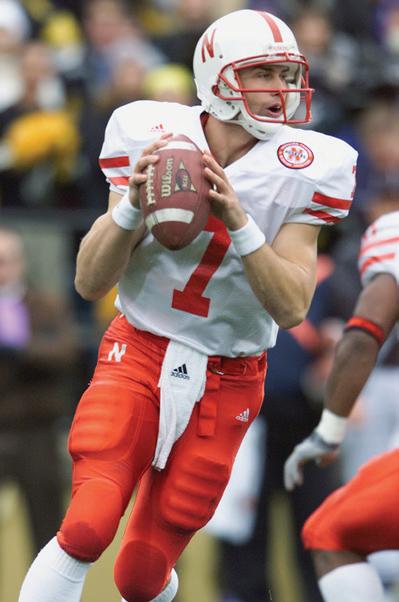
Chris Perry, Michigan
Darren Sproles, Kansas State
At 6-feet 5-inches and 225 pounds, Matt is the sixth USC Trojan to win the Heisman Trophy following Mike Garrett, O.J. Simpson, Charlie White, Marcus Allen, and Carson Palmer. In his junior year, Matt led the Trojans to an undefeated season, won the Heisman, and went on to win the BCS Championship Orange Bowl. Matt was just the third quarterback in more than thirty years to lead his team to back-to-back national championships. Later on that year, Matt decided against entering the NFL draft, instead choosing to stay at USC for his senior year and attempt to be part of a first-ever three-time national championship team with the Trojans. He was selected 10th overall in the 2006 NFL draft by the Arizona Cardinals. He also had stints with the Houston Texans, the Oakland Raiders, and Buffalo Bills before settling in as a college football commentator for Fox Sports. Matt Leinart was elected to the National Football Foundation and College Hall of Fame in 2017.
Matt Leinart, USC

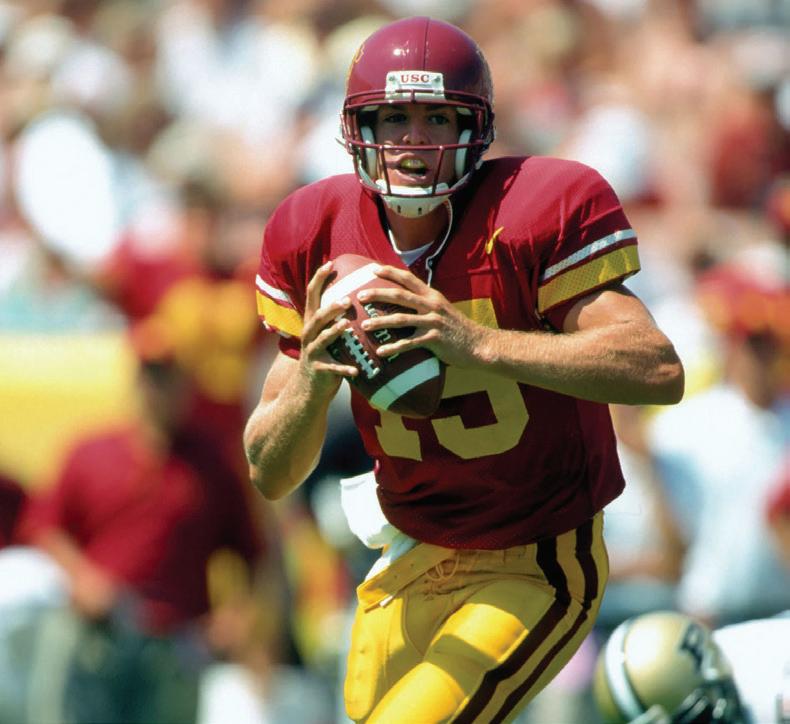

Adrian Peterson, Oklahoma
Jason White, Oklahoma
Alex Smith, Utah
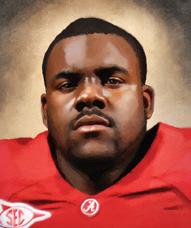
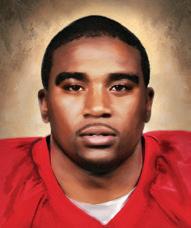

Troy, a once-upon-a-time, red-shirt freshman, quickly developed into Heisman Trophy material as a quarterback by the 2006 season. Troy, at 6-feet and 220 pounds, joins six previous Heisman winners from Ohio State University: Leslie Horvath, Victor Janowicz, Howard Cassady, two-time winner Archie Griffin, and Eddie George. As a senior, he received 86.7 percent of the Heisman vote, the second highest percentage in the history of the award. Troy capped his illustrious season, securing his claim to the Heisman, with an outstanding performance in his final game against second-ranked Michigan, throwing for 316 yards and 4 touchdowns in a 42-39 victory. Troy surpassed 2,700 total offensive yards in his 2006 Heisman campaign. Troy was drafted by the Baltimore Ravens in the 2007 NFL draft.
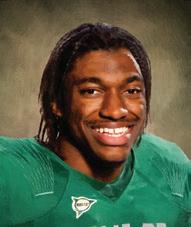


1 Troy Smith, Ohio State 2 Darren McFadden, Arkansas 3 Brady Quinn, Notre Dame 4 Steve Slaton, West Virginia 5 Mike Hart, Michigan

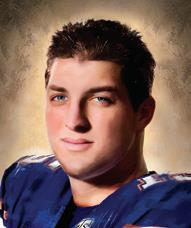
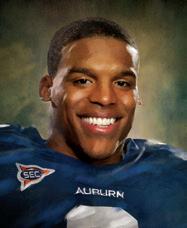

Tim capped an unprecedented season by becoming the first sophomore in NCAA history to win the Heisman Trophy. In 2007, he accounted for 51 total touchdowns, the most in a season in Florida’s history and in the Southeastern Conference single-season history. He threw for 29 touchdowns and rushed for 22 more. Tim is the third quarterback from Florida to win the Heisman Trophy following Danny Wuerffel and Steve Spurrier; all three have won the National Championship either as a player or a coach. Tim was drafted by the Denver Broncos as the twenty-fifth overall pick in the 2010 NFL draft. Tim’s primary focus off the field is the Tim Tebow Foundation, established in 2010 with the goal to bring faith, hope, and love to those needing a brighter day in their darkest hour. The foundation fulfills this mission every day by making dreams come true for children with life-threatening illnesses, building Timmy’s Playrooms in children’s hospitals, providing life-changing surgeries to children of the Philippines through the Tebow CURE Hospital, and sponsoring Night to Shine, a nationwide prom for people with special needs. In addition, Tim serves as an analyst for ESPN and is pursuing a career in professional baseball as a member of the New York Mets organization.
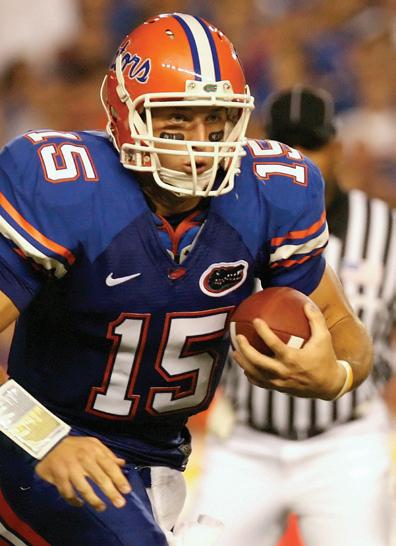


1 Tim Tebow, Florida 2 Darren McFadden, Arkansas 3 Colt Brennan, Hawaii 4 Chase Daniel, Missouri 5 Dennis Dixon, Oregon
Sam became the fifth Oklahoma player—and secondconsecutive sophomore—to win the Heisman. He joins Billy Vessels, Steve Owens, Billy Sims, and Jason White as Sooner Heisman winners. Sam’s combined 53 touchdowns running and passing are tied with Marcus Mariota for the most in Heisman history. The 6-foot-4, 220-pounder turned in one of the best seasons by a redshirt freshman in collegiate history in 2007, throwing for 3,121 yards and 36 touchdowns while leading the nation in passing efficiency. That set the stage for a phenomenal 2008 year, as Sam was the trigger man for the highest-scoring offense in NCAA history, throwing for 4,464 yards with 48 touchdowns and just 6 interceptions. He again led the nation in passing and also added 5 rushing touchdowns as the Sooners went 12-1 and qualified for the BCS national title game. He declared for the NFL draft following the 2009 season, and was selected as the first overall pick in the 2010 draft by the St. Louis Rams. He was named the 2010 NFL Rookie of the Year.
Sam Bradford, Oklahoma 2 Colt McCoy, Texas 3 Tim Tebow, Florida 4 Graham Harrell, Texas Tech 5 Michael Crabtree, Texas Tech
In his sophomore season, Mark became Alabama’s first Heisman Trophy winner as he helped lead the Crimson Tide to the school’s thirteenth national title. Mark was the sixth player to win both the Heisman and a National Championship in the same season since 1950. Mark set the Alabama single-season rushing record in 2009 with 1,659 yards while catching 32 passes for 334 yards and scoring 20 touchdowns. He was a unanimous first-team All-American (AFCA, FWAA, AP, Sporting News and Walter Camp), and was named the Sporting News National Player of the Year. As a freshman, Mark led the team with 12 rushing touchdowns in 2008, setting the Alabama freshman record. That season, he gained 728 yards and averaged 5.1 yards per carry. During the regular season of his junior year in 2010, Mark rushed for 816 yards, averaging 5.6 yards a carry, and 11 touchdowns. He also had 252 receiving yards and 1 receiving touchdown. He is the son of former NFL wide receiver Mark Ingram, who won a Super Bowl with the New York Giants. Mark was drafted by the New Orleans Saints with the 28th overall pick in the 2011 NFL draft.
1 Mark Ingram, Alabama
Toby Gerhart, Stanford
Colt McCoy, Texas
Ndamukong Suh, Nebraska
Tim Tebow, Florida

At 6-feet 6-inches and 250 pounds, Cam became the third Auburn Tiger to receive the Heisman Trophy, joining Pat Sullivan and Vincent “Bo” Jackson. In his 2010 Heisman Trophy winning season, Cam completed 185 of 280 passes for 2,854 yards and 30 touchdowns while throwing only 7 interceptions. He also accumulated 1,473 yards and an additional 20 touchdowns on 264 rush attempts and caught 2 passes for 42 yards and a touchdown. Newton’s passing and rushing touchdown totals set an Auburn University record, and made him only the second player to tally 20 or more passing and rushing touchdowns in the same season. Newton was named the 2010 SEC Offensive Player of the Year as well as the 2010 AP Player of the year before winning the Heisman in a landslide. Cam was drafted by the Carolina Panthers with the first overall pick in the 2011 NFL draft. He was named the NFL Rookie of the Year for 2011.
1 Cam Newton, Auburn 2 Andrew Luck, Stanford 3 LaMichael James, Oregon 4 Kellen Moore, Boise State 5 Justin Blackmon, Oklahoma State

At 6-feet 2-inches and 220 pounds, Robert became the first Baylor Bear to receive the Heisman Trophy. During the regular season of his Heisman-winning campaign, he tallied 3,998 yards and 36 touchdowns through the air, and added 644 net yards and 9 touchdowns rushing. Robert finished the 2011 regular season leading the nation with a pass efficiency rating of 192.3. He is one of three players in FBS history with 10,000 plus passing yards (10,366) and 2000 plus rushing yards (2,254). For his outstanding performance, the quarterback was also named an AP first team All-American, the winner of the Davey O’Brien Award, and the Big-12 Offensive Player of the Year. Robert was drafted second overall by the Washington Redskins in the 2012 NFL draft and in his debut season, he was the 2012 Offensive Rookie of the Year and voted to his first Pro Bowl.
1 Robert Griffin III, Baylor 2 Andrew Luck, Stanford 3 Trent Richardson, Alabama 4 Montee Ball, Wisconsin 5 Tyrann Mathieu, Lousiana State

Johnny became the first freshman to win the Heisman Trophy, taking home the award following a redshirt season. In Texas A&M University’s first year in the defense-rich SEC conference, quarterback Manziel passed for 3,419 yards and 24 touchdowns and rushed for 1,181 yards and 19 touchdowns during the 2012 regular season. Manziel was the first quarterback in SEC history, and only the fifth player ever in the NCAA Football Bowl Subdivision, to have 3,000 passing yards and 1,000 rushing yards in the same season. Upon surpassing 4,600 yards, he set a new SEC record for total yards in a season. Manziel holds a Texas A&M record of logging eight straight games with 300 or more total yards, including games against three of the top ten defensive teams in the country. He personally accounted for over 380 yards per game, which is more than 41 teams averaged in the NCAA FBS. Manziel is the second winner from Texas A&M, joining John David Crow, who won in 1957.

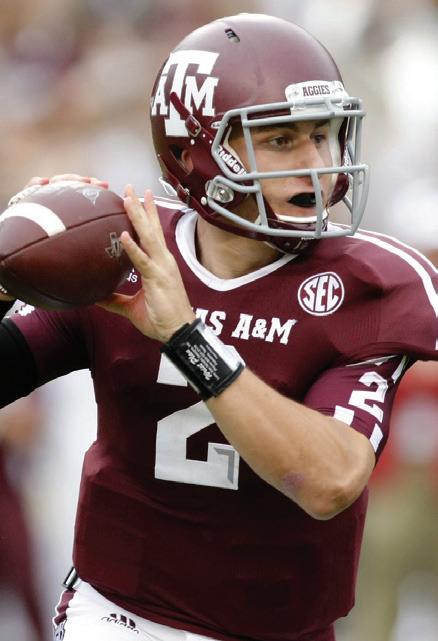
Johnny Manziel, Texas A&M
Manti Te’o, Notre Dame
Collin Klein, Kansas State
Marquise Lee, USC
Braxton Miller, Ohio State

At 19 years old, Jameis was the second-consecutive redshirt freshman to win the Heisman Trophy and the third Florida State Seminole, after Charlie Ward and Chris Weinke. In his first year as a starter, he quarterbacked his team to an undefeated season and the 2013 National Championship. Winston had an impressive 3,820 passing yards and 38 passing touchdowns during the regular season and, upon surpassing Weinke’s 33 touchdown passes, he set the new FSU single-season touchdown pass record. Winston won the 79th Heisman Trophy by the seventh-largest margin of victory in the history of the award. Winston followed up his Heisman-winning season with a stellar sophomore year, throwing for 3,907 yards and 25 touchdowns while leading FSU to a school-record 26-straight wins and a berth in the inaugural college football playoff. He finished his two-year career with a record of 26-1 as a starter, throwing for 7,964 yards and 65 touchdowns. He applied for the NFL draft in 2015 and was selected first overall by the Tampa Bay Buccaneers.
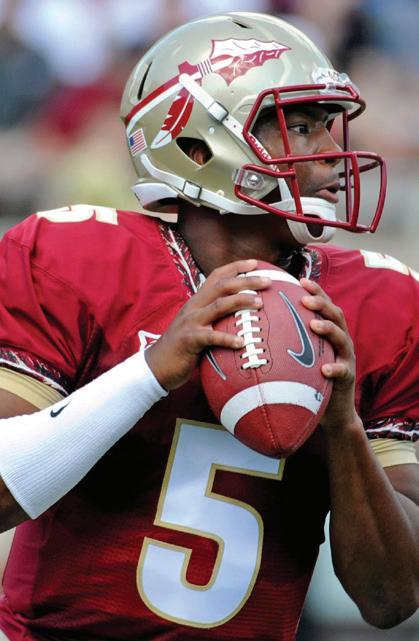
Jameis Winston, Florida State
AJ McCarron, Alabama
Jordan Lynch, Northern Illinois
Andre Williams, Boston College
Johnny Manziel, Texas A&M


Marcus is the first Oregon player, the first Polynesian, and the first player from Hawaii to win the Heisman. Mariota was born in Honolulu and attended St. Louis High School, where he was a two-sport star in football and track. At Oregon, his junior Heisman-winning season was spectacular. He threw for 3,783 yards and 38 touchdowns with just two interceptions while also rushing for 669 yards and 14 scores (he also caught a TD pass) as the Ducks finished the regular season with a 12-1 record. His 53 total touchdowns tied Sam Bradford for the most in Heisman history. Mariota led the nation in touchdowns, passing efficiency (186.33) and total offense (4,452 yards). His winning Heisman vote was the third-highest vote total in Heisman history and he appeared on a record 95.16% of ballots. Mariota bypassed his senior season and was the second overall pick in the 2015 NFL draft by the Tennessee Titans.
1 Marcus Mariota, Oregon

Melvin Gordon, Wisconsin
Amari Cooper, Alabama
Trevone Boykin, Texas Christian
J.T. Barrett, Ohio State
The 6-3, 242-pound Henry set the national high school career rushing mark with 12,124 yards, breaking Ken Hall’s 59-year-old record. As a 2013 freshman at Alabama, Henry made an impact for the Tide as part of a deep corps of running backs, rushing for 382 yards and 3 touchdowns on just 35 carries (including 100 yards on 8 carries against Oklahoma in the Cotton Bowl). He followed up with a strong 2014 junior season, rushing for 990 yards and 11 touchdowns as he shared carries with T.J. Yeldon. Henry came into his own as a junior, setting the SEC singleseason rushing record with 1,986 rushing yards. He also tied the conference mark for rushing touchdowns with 23. His rushing
yardage total led the nation, as did his number of rushing attempts (339). He was just the third running back in SEC history (following Herschel Walker and Bo Jackson) to have four 200-yard games in a single season. Henry led No. 2 Alabama (12-1) to the 2015 national title before being selected in the second round of the 2016 NFL draft by the Tennesee Titans.
1 Derrick Henry, Alabama

2 Christian McCaffrey, Stanford
3 Deshaun Watson, Clemson
4 Baker Mayfield, Oklahoma
5 Keenan Reynolds, Navy


Lamar won Louisville’s first Heisman by producing one of the most statistically impressive seasons in Heisman history. He is the youngest player to win the Heisman, at just 19 years, 337 days. The 6-3, 218-pounder accumulated 4,928 yards of total offense, second in Heisman history behind Ty Detmer’s 5,022 in 1990. His 51 touchdowns running and passing ties him with Tim Tebow for third on the all-time Heisman chart. He’s the first player to win the Heisman with at least 30 touchdown passes and at least 21 rushing touchdowns. His 1,538 rushing yards are the most-ever by a Heisman-winning quarterback. He led the Cardinals to a 9-3 record, a No. 15 national ranking and a berth in the Citrus Bowl. Among the highlights: 8 touchdowns in the first half against Charlotte, 610 yards of total offense (411 passing, 199 rushing) against Syracuse and 5 total touchdowns in a 63–20 thrashing of Florida State. Jackson returned as a junior to finish third in the 2017 Heisman balloting before being selected in the first round of the 2018 NFL draft by the Baltimore Ravens.
1 Lamar Jackson, Louisville
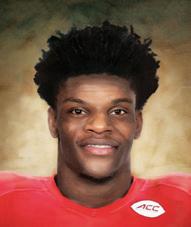
2 Deshaun Watson, Clemson
3 Baker Mayfield, Oklahoma
4 Dede Westbrook, Oklahoma
5 Jabrill Peppers, Michigan

University of Colorado as he is inducted into the 2022 Class of the College Football Hall of Fame
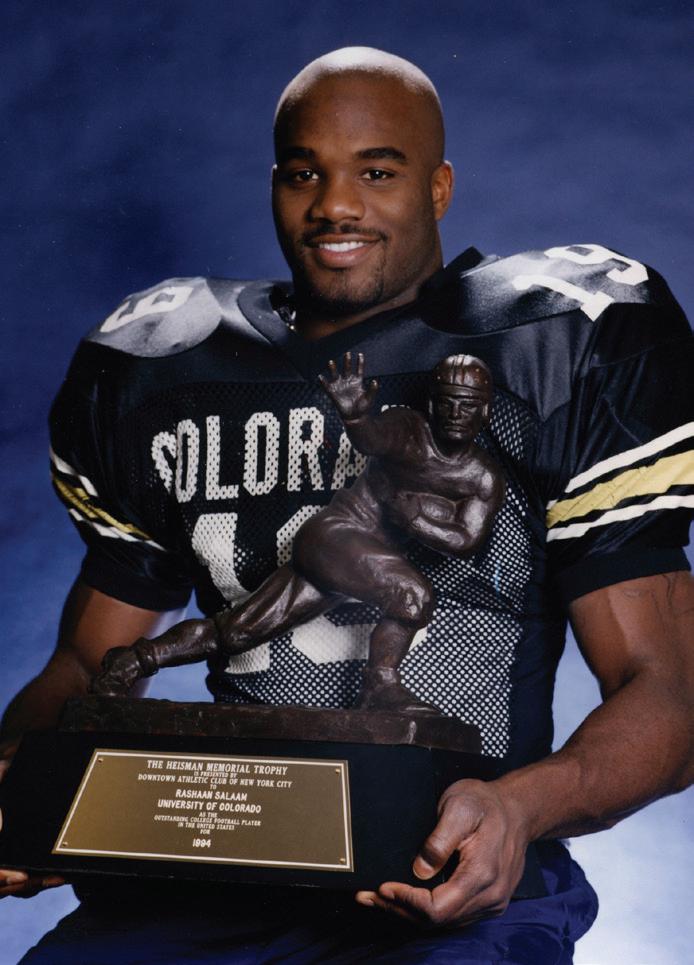
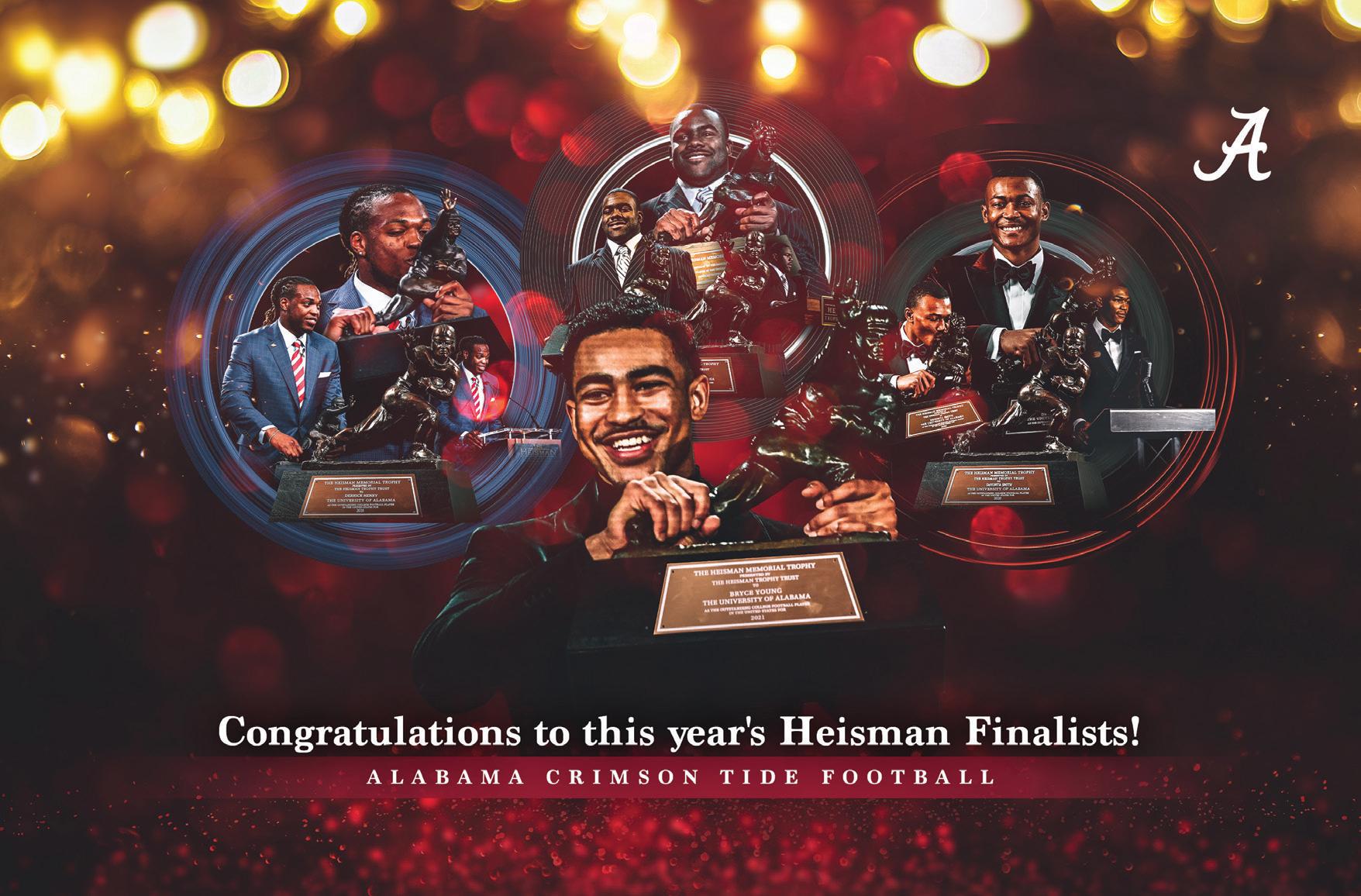 The Heisman Trophy Trust fondly remembers 1994 Heisman Trophy Winner Rashaan Salaam
The Heisman Trophy Trust fondly remembers 1994 Heisman Trophy Winner Rashaan Salaam
Baker Mayfield won Oklahoma’s sixth Heisman while producing the highest passing efficiency rating in FBS history. He is the first Heisman winner to begin his career as a walk-on athlete since the NCAA instituted athletic scholarships in the 1950s. He is also one of seven players to log three top 5 Heisman finishes, joining Glenn Davis, Doc Blanchard, Doak Walker, Archie Griffin, Herschel Walker, and Tim Tebow. Mayfield took over the starting job for the Sooners in 2015 and made an immediate impact, passing for 3,700 yards and 37 touchdowns while rushing for another 405 yards and 7 scores on the ground. He finished fourth in that year’s Heisman race. In 2016 he set the NCAA record with a passer rating of 196.38, with 3,965 yards through the air and 40 touchdowns. He took his first trip to New York as a Heisman finalist, finishing third behind Lamar Jackson and Deshaun Watson. Mayfield saved his best season for last, throwing for 4,340 yards with 41 touchdowns and just 5 interceptions while leading the Sooners to a 12-1 record and a berth in the College Football Playoff. He once again set the NCAA record for passing efficiency with a rating of 203.76 and won the Heisman by a comfortable margin, the first senior to do so since 2006. He was the first pick of the 2018 NFL draft by the Cleveland Browns.
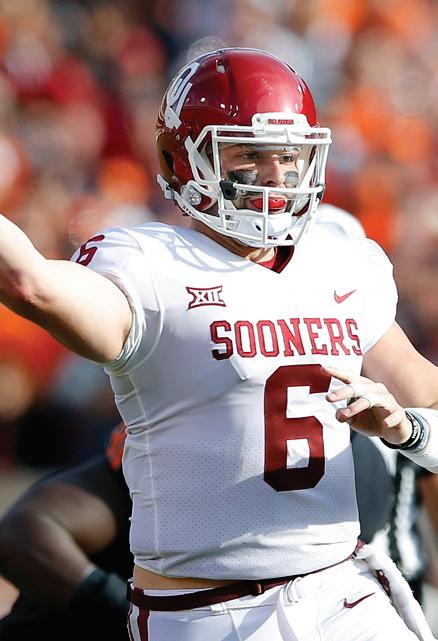
1 Baker Mayfield, Oklahoma 2 Bryce Love, Stanford 3 Lamar Jackson, Louisville 4 Saquon Barkley, Penn State
Rashaad Penny, San Diego State

Kyler won Oklahoma’s seventh—and second consecutive— Heisman with a remarkable season, accumulating 4,946 yards of total offense and 51 touchdowns, and leading the Sooners to the College Football Playoff. The first player to win the Heisman the year after taking over for another winner, his victory also marks just the fourth time a school has won consecutive Trophies. He joins Sooner winners Vessels, Owens, Sims, White, Bradford and Mayfield—tying Oklahoma with Notre Dame and Ohio State for most Heismans. Murray attended Allen (Texas) High and the 5-10, 195-pounder was named the Gatorade Player of the Year for his football exploits. He was also a baseball star and was considered a major prospect for the 2015 MLB draft. Murray signed with Texas A&M and appeared in eight games as a true freshman in 2015 then found his way to Norman as a transfer. After sitting out a year, he served as backup to Mayfield, winning the job outright in 2018. He more than filled the big shoes of the reigning Heisman winner, passing for 4,054 yards and 40 touchdowns, with another 892 yards and 11 scores on the ground, leading the Sooners to a 12-1 record, the Big 12 title and a berth in the College Football Playoff. His passer rating of 205.72 was the best in Heisman history, eclipsing the 203.76 set by Mayfield in 2017. Accordingly, Murray captured the attention of Heisman voters. He polled 2,167 points to capture the award over Alabama’s Tua Tagovailoa (1,871
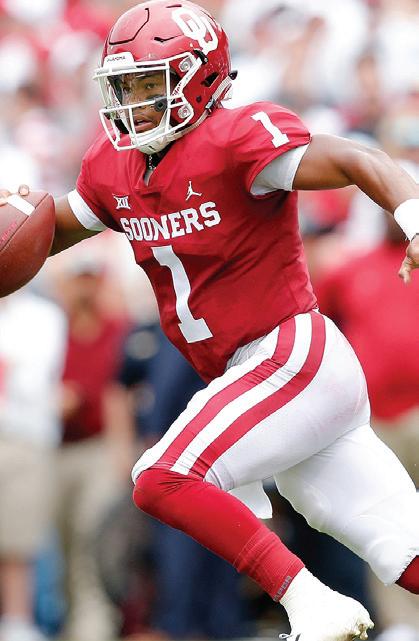
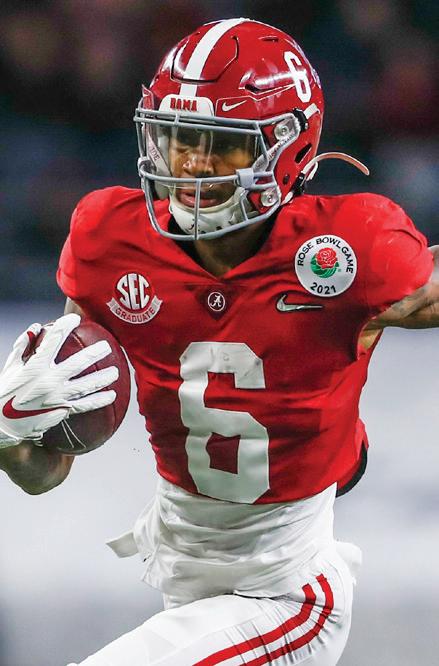
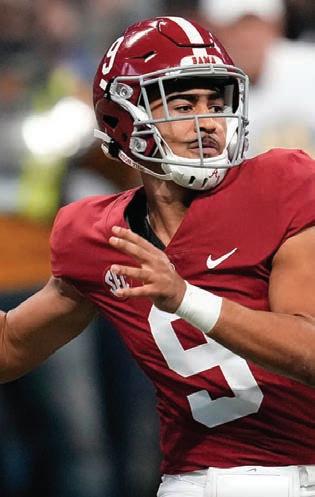
points), and Ohio State’s Dwayne Haskins (783 points). Expected to bypass the NFL to become a Major League Baseball player, Murray instead chose football and was selected as the first overall pick in the 2019 draft by the Arizona Cardinals.
1 Kyler Murray, Oklahoma

2 Tua Tagovailoa, Alabama
3 Dwayne Haskins, Ohio State 4 Will Grier, West Virginia
5 Gardner Minshew, Washington State
a career-best and SEC title-game record 15 against Florida, 13 at Mississippi and 11 each against Georgia and Mississippi State. He recorded seven games with over 100 yards receiving (all with at least 144 yards), including 231 yards on eight catches at LSU, 203 against the Bulldogs (which included a season-high four TDs) and 184 yards against the Gators. He had six games with at least two TD receptions, three coming at LSU and two in the SEC title game. Smith also returned a punt for a TD for the first time in his career, going 84 yards at Arkansas in the regular-season finale. He holds the SEC and Alabama career record for receiving touchdowns with 40 and has the most 200-plus yard receiving performances in Alabama history with four. DeVonta Smith was selected by the Philadelphia Eagles in the 1st round of the 2021 NFL Draft.

Burrow is the second LSU player to win the trophy and first since the late Billy Cannon did so in 1959. His Heisman triumph makes him the third-consecutive transfer player to win the award (and seventh overall), though he is the first to do so under the NCAA’s graduate transfer rule. The 6-4, 216-pounder from Athens, Ohio, had an extraordinary season, passing for 4,715 yards and 48 touchdowns (tying a Heisman record), while adding another 289 yard and three scores on the ground. He had a remarkable completion percentage of 77.9 percent, the best in Heisman history. As the field general for the nation’s top offense, he led No. 1 LSU to a 13-0 record, the SEC title (its first since 2011), and its first berth in the College Football Playoff. Burrow was the first overall pick of the 2020 NFL draft by the Cincinnati Bengals.
2019 2020
1 Joe Burrow, Louisiana State 2 Jalen Hurts, Oklahoma 3 Justin Fields, Ohio State 4 Chase Young, Ohio State
Jonathan Taylor, Wisconsin
Smith is the first wide receiver to win the Heisman since Desmond Howard in 1991 and the first non-quarterback-or-running back to win the Heisman since cornerback Charles Woodson won in 1997. The fourth-year senior was named the 2020 SEC Offensive Player of the Year while joining teammate Mac Jones in leading Alabama to the SEC title and the top seed in the College Football Playoff. Smith led the country with 98 receptions and 1,511 receiving yards while his 17 TD catches and 137.4 receiving yards per game were both second-best. His 8.9 receptions per game tied for second best. He posted four games with 11 or more receptions, including

1 DeVonta Smith, Alabama
2 Trevor Lawrence, Clemson 3 Mac Jones, Alabama 4 Kyle Trask, Florida 5 Najee Harris, Alabama
Bryce Young won the 2021 trophy following a prolific sophomore season, throwing for 4,322 yards on 314-of-462 passing (68.0%) as a first-year starter. He tossed 43 TDs and just four interceptions, leading Alabama to a 12-1 record, the 2021 SEC championship and to the top seed in the College Football Playoff. As a 2020 freshman he served as the back-up to 2020 Trophy finalist Mac Jones as the Crimson Tide won the national title. He played in nine games as a freshman reserve, throwing for 156 yards and one score. He took over the Alabama offense as a sophomore, starting all 13 games. His 43 TD passes were the second-most nationally in the regular-season (including the SEC title game) while his passing yards were fourth-most and his quarterback rating of 175.53 was fifth-best. He ran for three TDs, threw for five TDs in a game three times, including against Arkansas, when he also set the Alabama school record with 559 passing yards. He also set SEC Championship records with 421 passing yards and 461 yards of total offense, earning game MVP honors. Young threw for over 300 yards in nine games on the season and threw at least two TD passes in all 13 games, including nine games with three or more and five with four or more. He led the Crimson Tide to a CFP semifinal win over Cincinnati, throwing for 369 yards and three scores, before Alabama fell in the national title game to Georgia.

1 Bryce Young, Alabama
2 Aidan Hutchinson, Michigan
3 Kenny Pickett, Pittsburgh
4 C.J. Stroud, Ohio State






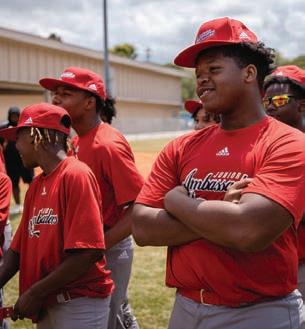
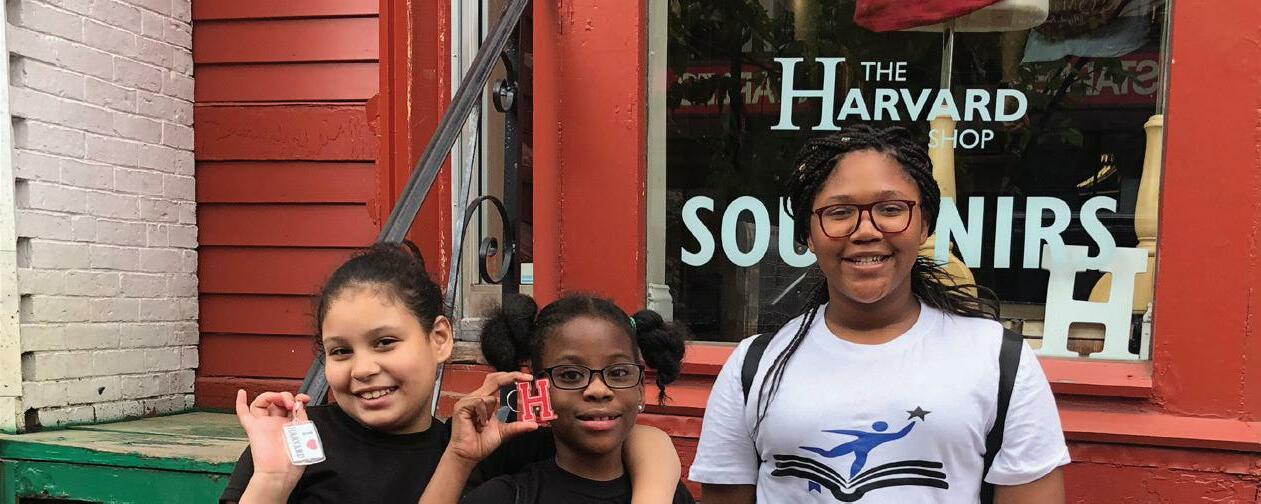
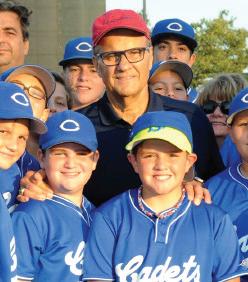
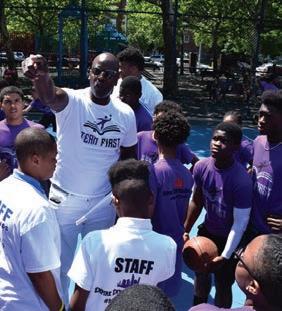
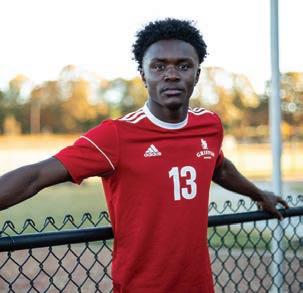

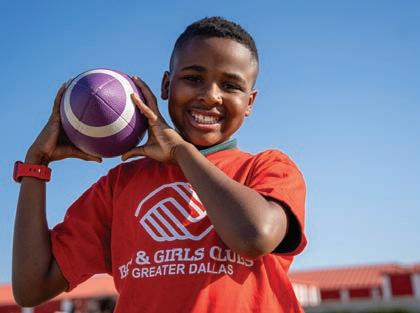
IT BEGINS WITH A COMMITMENT